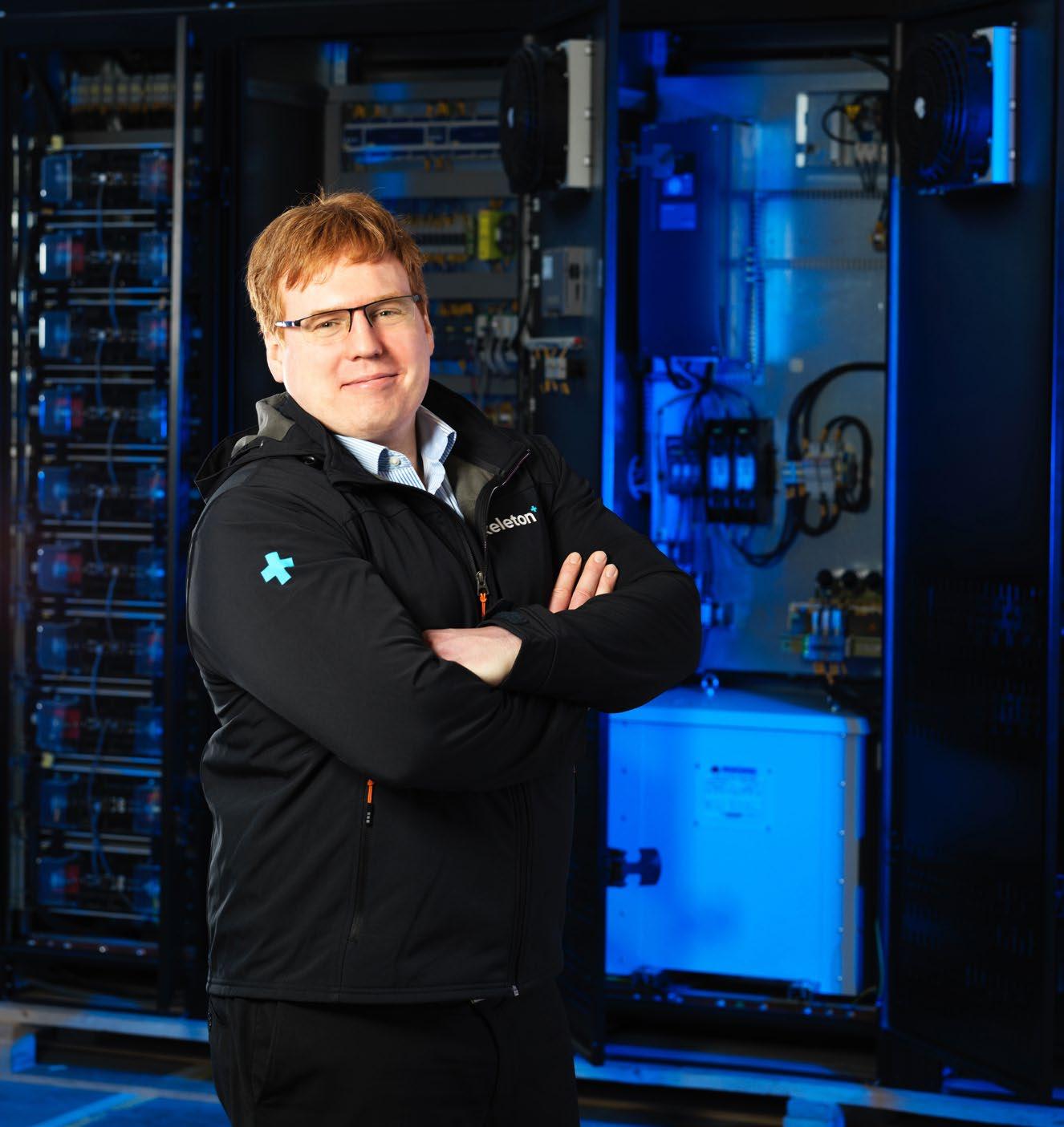
Skeleton: Estonian innovation, global impact
Storing the power for tomorrow
Hidden value in waste
Fighting climate change with AI
Let's celebrate! Invest Estonia 30, e-Residency 10
Tartu, European Capital of Culture 2024
A walk in Mauri Gross’ studio
Focus on Energising Estonia
No62 1/2024
Need a breath of the freshEST air? Estonia awaits

by
Photo
Tallinn Design House
Taavi Madiberk, Skeleton by
Atko Januson
Powering Estonia, new energy to innovate
Executive publisher
Positive Projects
Pärnu mnt 69, 10134 Tallinn, Estonia lifeinestonia@positive.ee
Editor
Reet Grosberg reetgrosberg@positive.ee
Translations
Ingrid Hübscher
Language editors
Robert Davis
Alex Hardy
Design & layout
Positive Design
Print Printall
Printed on Olin Design
Regular Nordic White 120g Portfolio: GalerieArt Silk 170g
Estonian Investment Agency supports companies investing and expanding in Estonia. World-class human capital, unique digital capabilities and a competitive business environment make Estonia a smart, agile location for businesses with global ambitions. investinestonia.com
The production of the magazine has been inspired by green technology
Estonia, as a pioneer in digital innovation and governance, looks towards to the year 2035. Rapidly developing technology, but also strains on the global economy, set the stage for what comes next. Now is the right time to re-evaluate Estonia’s current position in the world’s economy and set fresh and ambitious goals for the future – to double our GDP and enter the next phase of our digital society, a Personalised State.
Innovation lies at the heart of our strategy. We recognise the importance of staying at the forefront of technological advancement and embracing disruption as an opportunity for growth. Our success in building up a society in which all public services are digitalised – voting, doing taxes, and even becoming a resident can be done online – is a necessary foundation for the next layer of innovation. Combining vast data with AI solutions gives Estonia a unique opportunity to take a leap into a post-digital society. The concept of forms and the processing of them becomes a thing of the past and this creates vast possibilities to redesign the way the public sector works.
Our vision for the year 2035 follows two simple principles: one, being an entrepreneur in Estonia is easy, and two, our focus is set on the emerging areas that add the largest value to our economy. Our commitment to innovation extends beyond traditional sectors and includes new emerging fields such as renewable energy; data; green, bio, and dual-use technologies; and digital infrastructure. AI and data economy will enable us to harness the power of data-driven insights and automation, driving efficiency and productivity across all sectors. Furthermore, we will prioritise research and development (R&D) initiatives, partnering with both public and private entities to drive innovation and technological advancement.
Integral to our vision is recognising the importance of balancing economic growth with social and environmental considerations. Sustainability will be at the forefront of our decision-making processes as we strive to minimise our ecological footprint and promote social equity. Ida-Virumaa used to be Estonia’s most industrialised region, with all the ecological and social issues that came with that. Now this region is in the process of transition, and it will probably become a future case study showing how it’s done. If done right, shifting towards renewable energy and sustainable practices will give a competitive advantage.
Looking ahead to 2035, we envision a prosperous Estonia that continues to be a digital frontrunner, but also an early adapter to emerging world-changing trends. Estonia runs things differently. Like a startup on its way to become a unicorn. So perhaps instead of looking ahead, look out. The Estonian wave is coming.
Tiit Riisalo, Minister of Economic Affairs and Information

Cover
LIFE IN ESTONIA N o 62 3
Photo by EconMin Estonia
6
Celebrating 30 years of the smartEST invESTments
In 2024, Invest Estonia celebrates its 30th anniversary. Let us take a look at the history and goals of foreign direct investments in Estonia through the eyes of past and present leaders and long-time partners.
10
e-Governance Conference: 10 years of shaping the digital future
In the space of ten years, the conference has established itself as a key event for practitioners worldwide to find the keys to digital success. This year, the meeting point is Tartu, the European Capital of Culture for 2024.
11
Skeleton Technologies, Europe’s leader in high-power energy storage
Skeleton Technologies began as a small startup in Tartu and has grown in 15 years into one of the biggest players in its field, with its HQ in Estonia, R&D in Finland, and manufacturing in Germany. To tackle climate change with even more speed, Skeleton has announced its plans to open a R&D centre in France in mid-May 2024, paving the way for a future manufacturing site.
16
Estonia sets its sights on 100% renewable energy by 2030
Estonia has charted an audacious path towards sustainability, aiming to power its future entirely with renewable energy sources by 2030. Bolstered by impressive strides in wind and solar power, the country is poised to become a beacon of clean energy within the EU.
23
Eesti Energia to build its first large-scale energy storage system
Large-scale energy storage devices help to ensure affordable electricity by switching to renewable energy. Eesti Energia’s storage device will be built at the Auvere industrial complex later this year.
26
Unique underground storage changes the energy landscape
Supporting renewable energy with storage is essential, as this provides emissions-free energy, even when there is no wind or sun. Zero Terrain technology makes it possible to build a pumped hydro energy storage system in areas where it was previously not possible due to flat land.
29
Estonia is moving rapidly towards the use of hydrogen
It is estimated that Estonia has the potential to produce at least 250 000 tonnes of hydrogen per year, which could be used both as a raw material for the chemical industry and as a fuel for shipping, aviation, and ground transport. Life in Estonia mapped the latest developments in the Estonian hydrogen economy.
32
Nuclear power – the future of Estonian electricity?
In a world of ever-increasing energy consumption and green revolution, Fermi Energia is trying to make a breakthrough by building Estonia’s first small nuclear power plant by 2035. Kalev Kallemets, chairman of the company’s management board, explained the background to this long-prepared project.
35
Centres of excellence breathe new life into the energy sector
Estonia’s education and research minister Kristina Kallas recently decided to allocate 70 million euros over seven years to 10 new centres of excellence in research. Two of them deal directly or indirectly with energy issues.
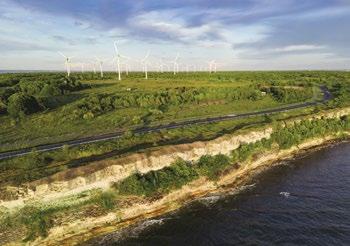
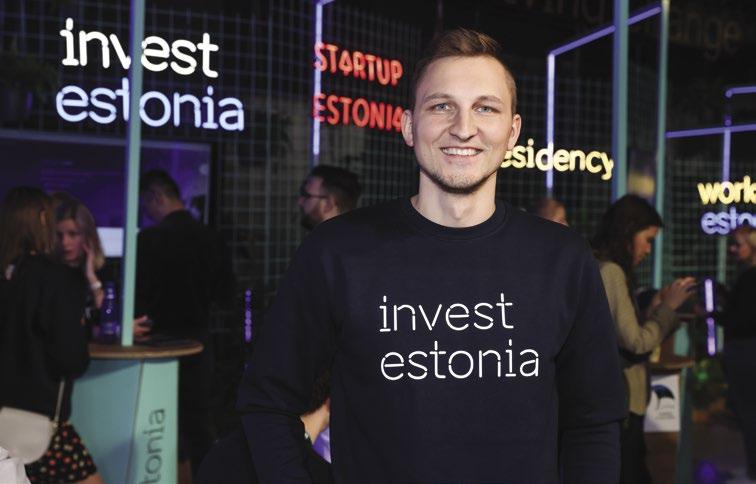
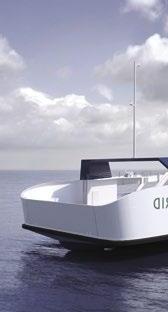
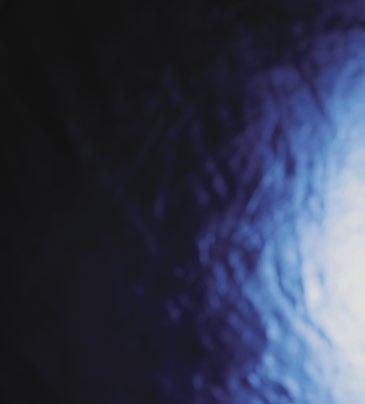
CONTENT
4 LIFE IN ESTONIA N o 62 11 6
26
38
Transforming mining waste to raw materials – greentech innovation in Ida-Virumaa
With the help of the Just Transition Fund, two companies – Ragn-Sells and Trisector – are investing in new technologies to recycle the spoil heap material originating from oil shale exploitation, such as mine tailings and power plant ash.
42
R8 Technologies’ AI tackles climate change
Meet R8 Digital Operator Jenny, R8 Technologies’ data-driven human-centric AI, which helps commercial real estate across Europe to be more energy efficient, reduce its carbon footprint, and save customers money.
47
Accelerating sustainable energy innovations
EIT InnoEnergy, the leading innovation engine in sustainable energy, was ranked as the most active investor in energy last year. Now it is teaming up with Estonian cleantech accelerator Beamline.

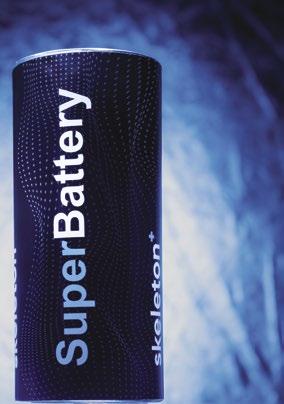
50
Portfolio.
Pictures at an exhibition. A walk around Mauri Gross’ studio
Mauri Gross graduated in scenography, but in recent years he has been in the public eye more as a painter. Abstract from afar, filigree from up close, this is one of the contradictory keys to approaching his paintings. Walk with us around his studio.
62
E-Residency turns 10
On the verge of its 10th anniversary, the e-Residency programme is moving towards significant upgrades, the biggest of which are moving past the physical ID card and a solution for remote identity verification.
68
How to survive the arts in Tartu
The Tartu 2024 team could not have foreseen how prophetic the wording “Arts of Survival” would be when they selected it as the motto for the European Capital of Culture bid six years ago. The vibrant programme reflects the survival spirit of Estonia’s second-biggest town,

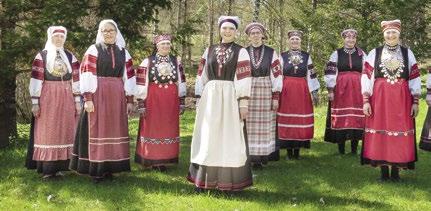
aiming to attract one million visitors to events throughout 2024. While the programme isn’t filled with big names, it’s certainly bold. The university city invites people to a mass-kiss at the town hall square and to discuss democracy in the sauna, and it also sends a bus onto the streets completely covered in stickers.
74
The Kingdom of Seto: Proving the power of legends
For centuries, the Setos in the far south-east corner of Estonia had been an ethnic group in the hinterland, but today, the Seto culture is flourishing. The revitalisation of legends has given Setos new self-confidence and selfesteem.
78
Events Calendar: Highlights from June to December
32 29 42 68


LIFE IN ESTONIA N o 62 5
74
Celebrating 30 years of the smartEST invESTments
By Maria Magdaleena Lamp
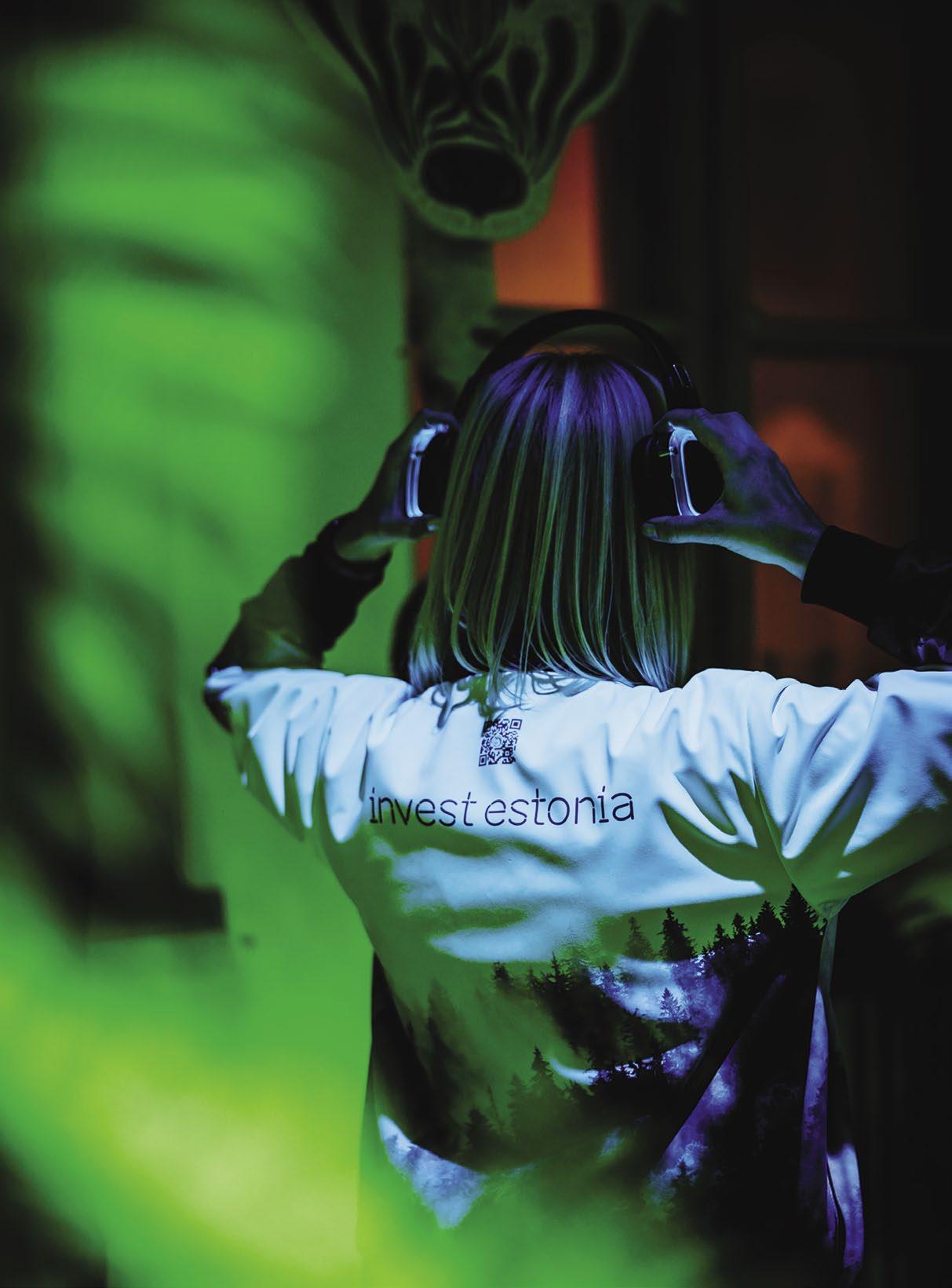
by
6 LIFE IN ESTONIA N o 62
Photo
Rene Lutterus

Awards and accolades
Top Investment Agency 2018–2020 by Site Selection Magazine.
2020–2023 Invest Estonia at the top in Emerging Europe’s annual investment promotion report.
Automation at Invest Estonia was listed among UNESCO’s global top 100 AI projects in 2022.
Most Creative Investment Promotion Marketing at the Go Global Awards 2022.
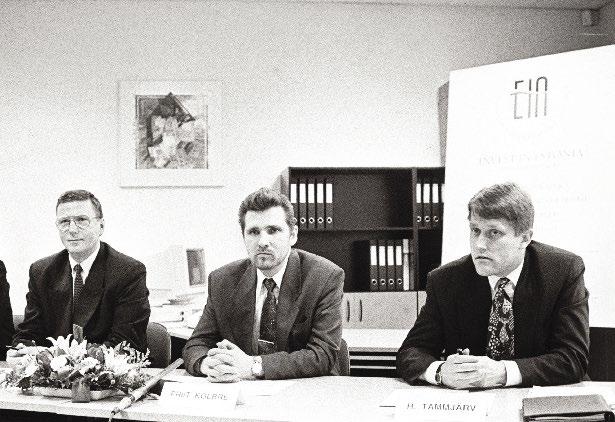
by Ly Menov
In 2024, the Estonian Investment Agency (EIA) also known by its stage name of Invest Estonia, celebrates its 30th anniversary. Here’s a look at the history and goals of foreign direct investments in Estonia, through the eyes of past and present leaders and longtime partners.
Founded in 1994, Invest Estonia is a government agency dedicated to helping international companies find investment opportunities in Estonia. Today, world-class human capital, unique digital capabilities, and a competitive business environment make Estonia a smart, agile location for businesses with global ambitions. But what was the picture like three decades ago – and what does the future hold?
The currency: The Estonian kroon
1 EUR = 15.6466 EEK
The president: Lennart Meri
Prime minister: Mart Laar
1994 was an action-packed year:
● Estonia made its debut in the Eurovision Song Contest.
● Jeff Bezos founded Amazon.
● Perhaps most importantly, the Estonian government established the EIA.
The earliEST adopters
Jüri Sakkeus, the founder and first director of the EIA, as it was originally named in 1994, recalls the early days with fondness: “The environment was so supportive at that time. I remember going to a government session to present what this new agency was about. Prime minister Mart Laar was there, with a sparkle in his eye, saying he’d been waiting for an agency like this for a long time.”
The excitement and drive were tangible in the young republic. Known today for its agility and quick reactions to changing environments and demands, Estonia has been this way all along. “During a business seminar in Japan, a Japanese contact drew attention to the poor condition of the toilets at Tallinn Airport,” Sakkeus recalls one of his early overseas trips with the agency. Taking this to heart, President Lennart Meri promised the Japanese that he would hold his first press conference in the airport toilet upon his return to Estonia to draw attention to this glaring blemish on the country’s reputation. He did, and the rest is history – the toilets were renovated almost immediately, and Tallinn Airport has been consistently winning awards for its cosiness ever since.
Finding opportunities to elevate Estonia’s reputation on the global stage was the driving force behind the agency.
Agu Remmelg, who was also with the agency from the very beginning and led it from 19982000, echoes the sentiment. “There was very much a sense of mission”, he recalls. “And always a feeling of being terribly proud to speak at conferences, introducing Estonia and the opportunities it had to offer.”
Over three decades, the work has paid off in spades, and Estonia has gone from the new kid on the block to a certified trailblazer. “When we started, we tried talking about Estonia in South Korea or Hong Kong. It was almost impossible,” Remmelg says. “No one had heard about us. Today, you can easily talk to the US technology sector or investors about Estonia’s competence and track record.”
One of the most famous examples of the agency’s knack for making international friends for Estonia is Singaporean entrepreneur Sonny Aswani. Aswani has been
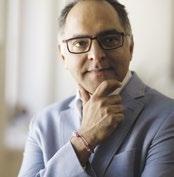 Invest Estonia team
Photo by Invest Estonia
The official opening of the Estonian Investment Agency, with J. Sakkeus, P. Kolbre, and H. Tammjärv
Invest Estonia team
Photo by Invest Estonia
The official opening of the Estonian Investment Agency, with J. Sakkeus, P. Kolbre, and H. Tammjärv
1994 LIFE IN ESTONIA N o 62 7
Photo

passionate about Estonia ever since his earliest contact with the Estonian Foreign Investment Agency in 1994. The friendship was initially facilitated by a move as seemingly simple as the agency’s agility and help with securing Estonian visas at unprecedented speeds in the days of the fax machine. “It was the little things that made the big difference,” Aswani says. “Since then, we have invested no less than 250 million euros in this country.”
The smartEST investments powered by the bEST people (with AI securing the rear)
Over the past three decades, Invest Estonia has played its part in helping Estonia evolve into a smart, agile investment hub that consistently ranks as a world leader in smart human capital, digital capability, and ease of doing business.
“We don’t take this success for granted,” says Joonas Vänto, the agency’s current director.
“With the landscape as competitive as it is, it’s crucial to keep innovating and blazing a trail. The Estonian Government prioritises flexible and need-based legislation to facilitate entrepreneurship, resulting in a transparent and nimble business environment, keeping Estonia among Emerging Europe’s top investment destinations. Meanwhile, Invest Estonia offers a high level of expertise combined with advanced digital tools and AI to make the process of investing here as smooth as possible.”
“Advanced digital tools” is not an overstatement – Invest Estonia has twice been included in IRCAI’s (The International Research Centre in Artificial Intelligence under the auspices of UNESCO) list of 100 most promising AI-related solutions for the benefit of humanity.
On the other side of Invest Estonia’s high-powered AI/human expertise combo, the aforementioned level of competence is personified in Riina Leminsky,
head of global networking and director of business development in the DACH region (Germany, Austria, and Switzerland), who has been with the organisation for nearly twenty years.
“Foreign representatives have a crucial role as Estonian economic ambassadors, trusted confidants, and investment facilitators,” Leminsky says. “Our role is to act as a reliable and trustworthy partner, especially for foreign companies. We also help Estonian companies to find an investor or strategic partner for their growth. We are the first point of contact for foreign companies that already have or need to develop a business interest in Estonia that is sustainable and beneficial to Estonia’s economic development. We deliver confidence in our country and find opportunities for cooperation, whether economic or otherwise.”

8 LIFE IN ESTONIA N o 62
Joonas Vänto, director at the Estonian Investment Agency

The brightEST future: what’s next for Invest in Estonia
Anyone who has been following Estonia’s evolution at any point in the last three decades knows that being small has never stopped this country from thinking big. Invest Estonia carries the same principle, always aiming to punch above its weight and stay ambitious.
With resting on laurels out of the question, the objectives are clear:
2.8 billion euros
Between 2023 and 2030, Estonia aims for 2.8 billion euros of foreign investments.
8000 jobs
Foreign investors predict that at least 1000 new high-added-value jobs will be created yearly.
50%
By 2030, at least 50% of projects will be created with companies operating in the smart economy – R&D and/or innovation companies. The 2021 level was 18%.
40%
By 2030, at least 40% of investment projects will come to areas outside of Tallinn and Tartu. The 2021 level was 24%.
100%
By 2030, 100% of proactively secured foreign investment projects will be from the R&D, innovation, and entrepreneurship focus areas, based on the large growth potential in those sectors. In 2021, the level was 66%.
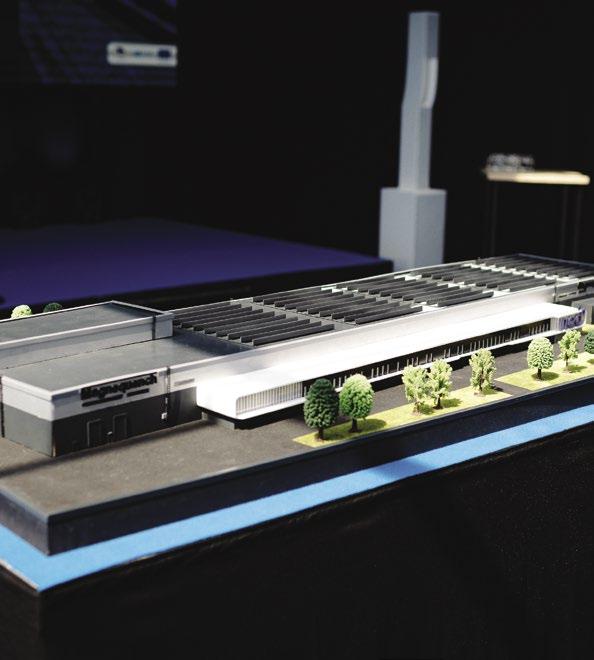
Invest in Estonia’s timeline
May 16, 1994: The EIA is established to provide a “single door” approach to attracting foreign direct investment (FDI) into the country. Jüri Sakkeus becomes the agency’s first director.
In 1995, the agency gives out the first Invest in Estonia awards to recognise foreign contributions to the Estonian economy. The first overall winner is Eesti Telefon, the country’s biggest telecommunications provider.
By 1996, companies from roughly 100 countries have invested in Estonia.
Demonstrating the Estonian drive to adopt the newest technologies as early as possible, the agency also gains access to these crazy new things called “email” and a “website” around 1996. The first website visitor stats:
1. Estonia 57.32%
2. United States 16.43%
3. Finland 5.00%
4. Sweden 3.68%
5. Germany 3.01%
6. Great Britain 2.52%
7. Latvia 1.12%
8. Netherlands 1.09%
9. Denmark 1.05%
In 2000, Invest Estonia moves under the Enterprise Estonia umbrella.
By the end of 2000, a total of 90.6 billion kroons of foreign investment has been made in Estonia (106% of the GDP).
By 2008, Estonia has become one of the most successful countries in Europe and the world in terms of foreign investments, with the share of foreign investments in the country’s GDP as high as 71 percent.
In 2011, Estonia adopts the euro. Local papers report a noticeable jump in foreign investments. Business services, electronics, ICT, machine industry, and logistics become the focus areas.
In 2017, Work in Estonia, a programme conducted by Invest Estonia, receives the IAC Award for the world’s best employment online campaign. Today, Work in Estonia is a separate organisation under Enterprise Estonia.
In 2020, Invest Estonia receives the United Nations Investment Promotion Award for Excellence in response to the COVID-19 crisis.
In 2022, Invest Estonia brings in 351 million euros in direct foreign investments, an all-time high for the agency.
In 2023, Invest Estonia secures 336 million euros worth of foreign investment, creating more than 1000 high-paying jobs.
Photo by Rauno Liivand
Photo by Invest
Estonia
LIFE IN ESTONIA N o 62 9
Neo Performance Materials’ magnet factory in Narva is one of Estonia’s biggest foreign direct investment successes in recent years
e-Governance Conference: 10 years of shaping the digital future
By Anu Vahtra-Hellat, communication manager, eGA
The e-Governance Conference is celebrating its 10th anniversary, marking a decade of digital dialogue. The Conference has established itself as a key event for practitioners worldwide to find the keys to digital success. This year the meeting point is Tartu, the European Capital of Culture for 2024.

Hannes Astok, CEO of the e-Governance Academy (eGA), highlights the conference’s remarkable journey over the past decade. The Conference has become a pivotal point for sharing how Estonian IT companies’ digital innovations and the eGA’s competencies influence the world. Ukraine is a leading adopter of Estonian e-Governance solutions, reflecting the power and potential of Estonian digital solutions. “Keen collaboration and strong political will have made Ukraine one of the most digitised societies in the world. All of this despite the war. Other countries should examine this further and consider replicating it,” Astok says.
Ukraine’s case underscores the transformative power of digital governance, even in the most challenging circumstances and spotlights the Conference’s role in showcasing actionable blueprints for global digital advancement.
“Many other digital cooperation projects have received a boost from this Conference. For example, the development of a data exchange platform in Djibouti and Benin, the creation of a digital country roadmap for countries in the Pacific, and cooperation with the governments of Aruba, Dominica, Namibia, and the Cayman Islands,” says Astok.
In its tenth year, the Conference dives into “Unlocking Digital Success”, a theme that
includes all of the foundational elements of digital transformation: people and their skills, systematic processes, governance, modern technologies and their strategic selection.
The conference’s carefully selected topics offer a comprehensive blueprint for navigating and actively influencing the future of digital landscapes. “From designing services and developing a digital business environment to exploring digital innovations for green transition and unveiling the benefits of cybersecurity, these discussions are designed to address both the current and future challenges and opportunities in our digital world,” points out Kristina Mänd, programme director of the 2024 Conference.
Furthermore, Jaan Aru, associate professor at the University of Tartu, will offer a unique interdisciplinary perspective, connecting the dots between neuroscience, AI, and digital governance. His insights will shed light on the timeless factors for success as well as those that will shape our future.
Exchange of practices and ideas
As in every year of the conference, guests will hear from a mix of Estonian and international leaders and practitioners driving digital
change. This year, the conference promises rich and insightful discussions and networking opportunities featuring notable speakers like Alar Karis, president of Estonia, Andrew Grotto, former senior director for cybersecurity policy at the White House (USA), Lou Downe, former design director of the UK Government (UK), Luukas Ilves, adviser at the Ministry of Economic Affairs and Communication (EST), along with other distinguished digital leaders and experts from Estonia, Brazil, France, Spain, Ukraine and beyond.
Join us online to shape discussions on the future of digital governance!
Programme, speakers, tickets egovconference.ee
The Conference is organised by the e-Governance Academy in close collaboration with the Ministry of Foreign Affairs and ESTDEV.
See you in Tartu on the 22nd – 23rd of May in 2024!
Highlights of 10 years
540 participants onsite (2023) 1150 participants online (2020) 144 countries represented (2021)
by Raigo Pajula
10 LIFE IN ESTONIA N o 62
Photo
by
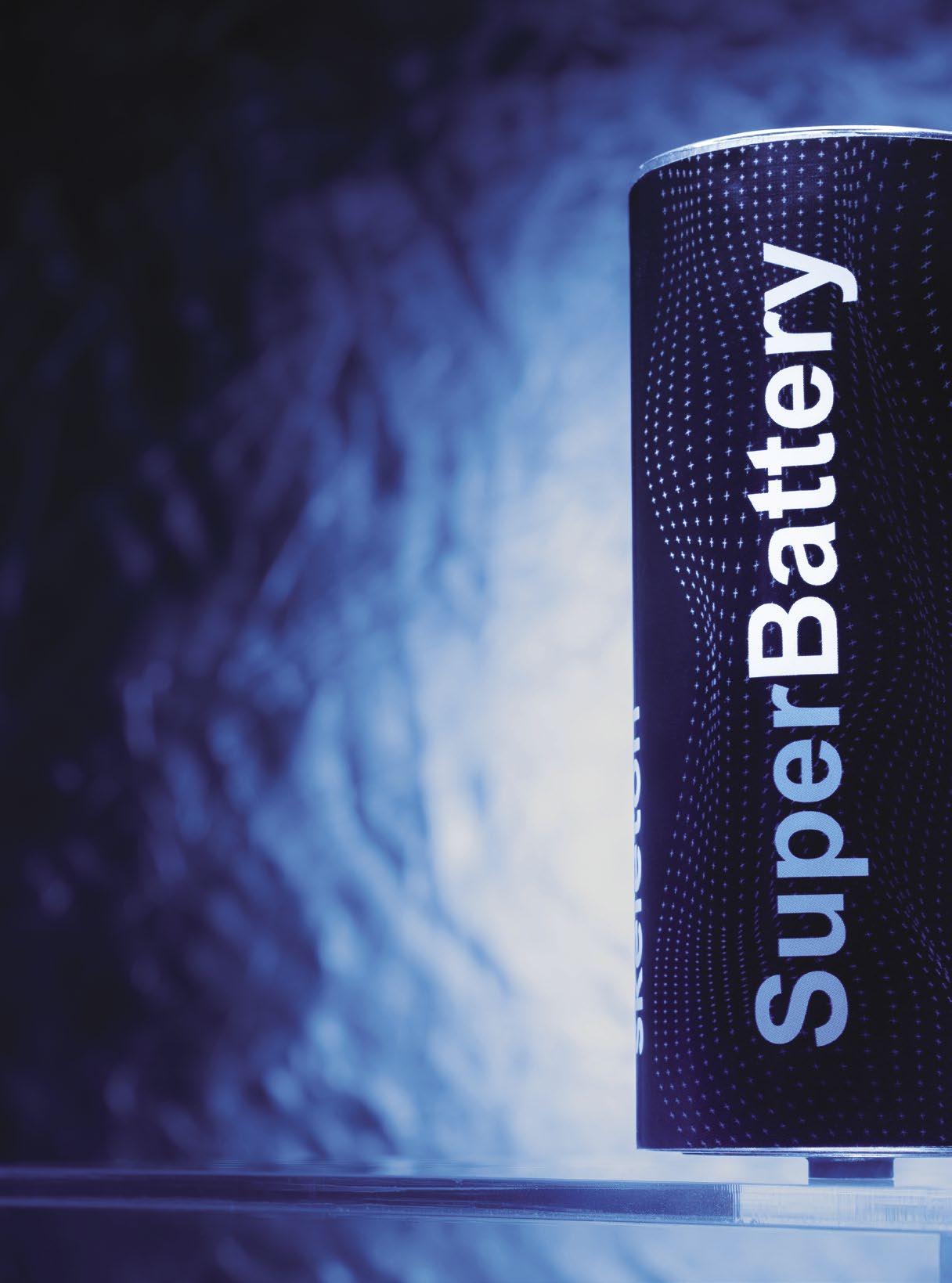
Skeleton Technologies, Europe’s leader in high-power energy storage
By Ronald Liive
Skeleton Technologies is a European energy storage pioneer from Estonia, producing supercapacitors and high-power batteries. The company’s environmentally friendly alternative products offer unparalleled power density and rapid charging capabilities. Manufacturing takes place in Europe, ensuring a flexible supply chain and transforming the industry for a net-zero future.
LIFE IN ESTONIA N o 62 11
Photo
Skeleton Technologies
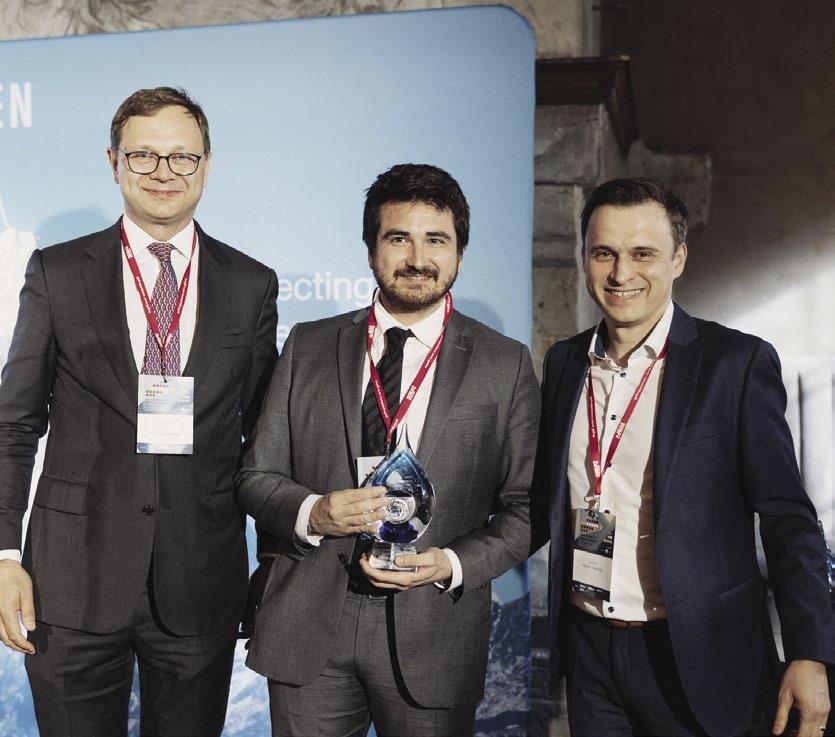
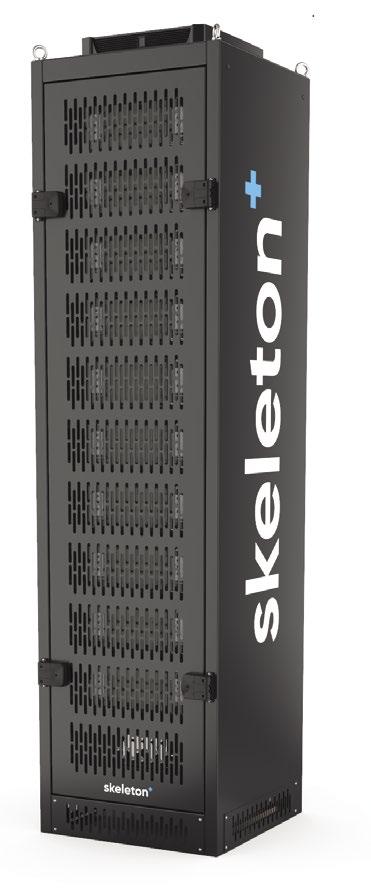
15 years ago, yet another startup was born in Tallinn, Estonia, but it was not just any other startup. From the very first day, they knew what their business would be – the development and production of supercapacitors – extremely powerful energy storage devices for short-term applications. Fast-forward to 2024, and for the last seven years, Skeleton has become Europe’s leading manufacturer of supercapacitors, has expanded into the wider high-power battery market, and the list of its high-profile clients is constantly expanding.
In partnership with Siemens, the company is now building a new factory in Leipzig, Germany, which will have 20 times more production capacity than Skeleton’s current manufacturing site near Dresden. Skeleton is currently on a hiring spree in Leipzig, as this new factory will start production this winter. Thanks to the cooperation with Siemens Digital Industries, the new factory will also be fully automated and digitalised. The opening of a research and development (R&D) site in Toulouse, France, was also just announced mid-May. Therefore, the company is now expanding both in Germany and France. This is the story of Skeleton Technologies, showing how a small startup can grow into one of the biggest players in its field.
Big-name customers
In 2009, young entrepreneurs Taavi Madiberk, the CEO of Skeleton Technologies, and Oliver Ahlberg, co-founder and now chairman of the board, decided to create Skeleton Technologies together with Tartu scientists Jaan Leis and Anti Perkson to turn their research into Curved Graphene and supercapacitors into a business.
As the son of a scientist who already worked with supercapacitors, Taavi Madiberk saw their potential even in middle school. He explains the significant difference between supercapacitors and batteries as follows: “Supercapacitors are fast energy storage that offer high power density, meaning they can provide very high currents for a short time. They thrive in applications of less than a minute. They also offer almost instant charging and discharging, high reliability, extreme temperature tolerance, and a lifetime of more than 1 000 000 charge-discharge cycles. Batteries are slow energy storage, and have higher energy density, meaning they can operate for a long time, and they charge and discharge slowly. Batteries and supercapacitors both have their uses but are actually complementary technologies. Batteries provide the long-term energy, whereas supercapacitors take care of the high peaks of power and fast responses. In energy storage, there is no silver bullet, no technology that can solve and fit all needs, which is why you need a diverse range of technologies if you want to save energy efficiently.”
The technology behind Skeleton relies on the Curved Graphene nanomaterial that the Estonian scientists developed. This material is the basis of supercapacitors and Skeleton’s high-power batteries (“SuperBattery”), offering unparalleled power density and fast charging capability, which sets the company apart from its competitors.
If you have such a product at hand that offers more usage with less weight and size, then it doesn’t take long to generate interest in high-profile customers. Aerospace, heavy industry, maritime, and grid sectors are all using Skeleton’s supercapacitors. Their clients include, for example, Siemens, Hitachi Energy, Honda, CAF, and Skoda Electric It did not take long for Skeleton Technologies to have its first high-profile customers; in 2011 the company was able to sign a deal with the
12 LIFE IN ESTONIA N o 62
On the 16th of April, Skeleton Technologies was awarded the Baltic Private Equity and Venture Capital Deal of the Year award for raising 108 million euros in the E1 funding round from top investors including industrial giants Siemens and Marubeni. In the middle with the award, Arnaud Castaignet, vice-president of government affairs & strategic partnership
European Space Agency (ESA). ESA was interested in making satellites lighter and also increasing mission safety while reducing mission costs, and as the partnership showed, this could be achieved with Skeleton’s product.
“Deploying our technology with the European Space Agency and showing it solves a key challenge in space transportation by reducing weight and cost was a key milestone for us. It provided an extremely high-profile showcase of our technology’s capabilities. When you build a deep-tech company, securing the first contract is always crucial. Having the trust of ESA was therefore a key factor in convincing other commercial prospects to trust us,” says Madiberk.
New R&D centre and a new factory
To tackle climate change with even more speed, Skeleton Technologies announced its plans to open a R&D centre in France in mid-May 2024, paving the way for a future manufacturing site for its SuperBattery product line. Vice-president of government affairs & strategic partnerships at Skeleton, Arnaud Castaignet, told Life in Estonia that the investment they will make into the centre and factory could total 600 million euros over 5 years. This means that they are in it for the long run.
The location for the factory is being considered at the moment, with the opening expected in 2027. But the R&D centre will be opened already this year. According to Castaignet, there were many factors for choosing France, and particularly Toulouse, for their next expansion. To list just some of them, he mentioned the University of Toulouse, especially its Centre for Materials Research and Engineering (CIRIMAT lab), the
presence of major companies such as Airbus, and the highly skilled and educated talent pool around the Toulouse area, which also played a significant role.
“The presence of major industrial companies and world-class R&D institutions makes Toulouse a very attractive place when you want to hire great engineers. For us, access to talent is a key element for expansion,” says Castaignet.
According to Castaignet, picking the right country and place for Skeleton’s ambitious expansion was a very long process. Several countries were considered and the pros and cons weighed. Being present in France gives Skeleton a great opportunity to collaborate with big-name French and international companies.
“The battery sector is growing fast in France. In recent years there were announcements of gigafactories and R&D centres from companies like Verkor, ACC, Envision, Prologium, and Tiamat. It’s a quickly growing sector in France, as is cleantech in general, as France has set green reindustrialisation as its key priority. We try to find the best location with collaboration opportunities with other companies – that is why Skeleton has chosen France and Toulouse.”
Estonian made and Estonian at heart
Skeleton employs around 350 people at the time of writing, and while the majority of them are located in Germany due to the existing manufacturing site and the future Leipzig factory being built, the core staff are and will continue to be in Estonia.
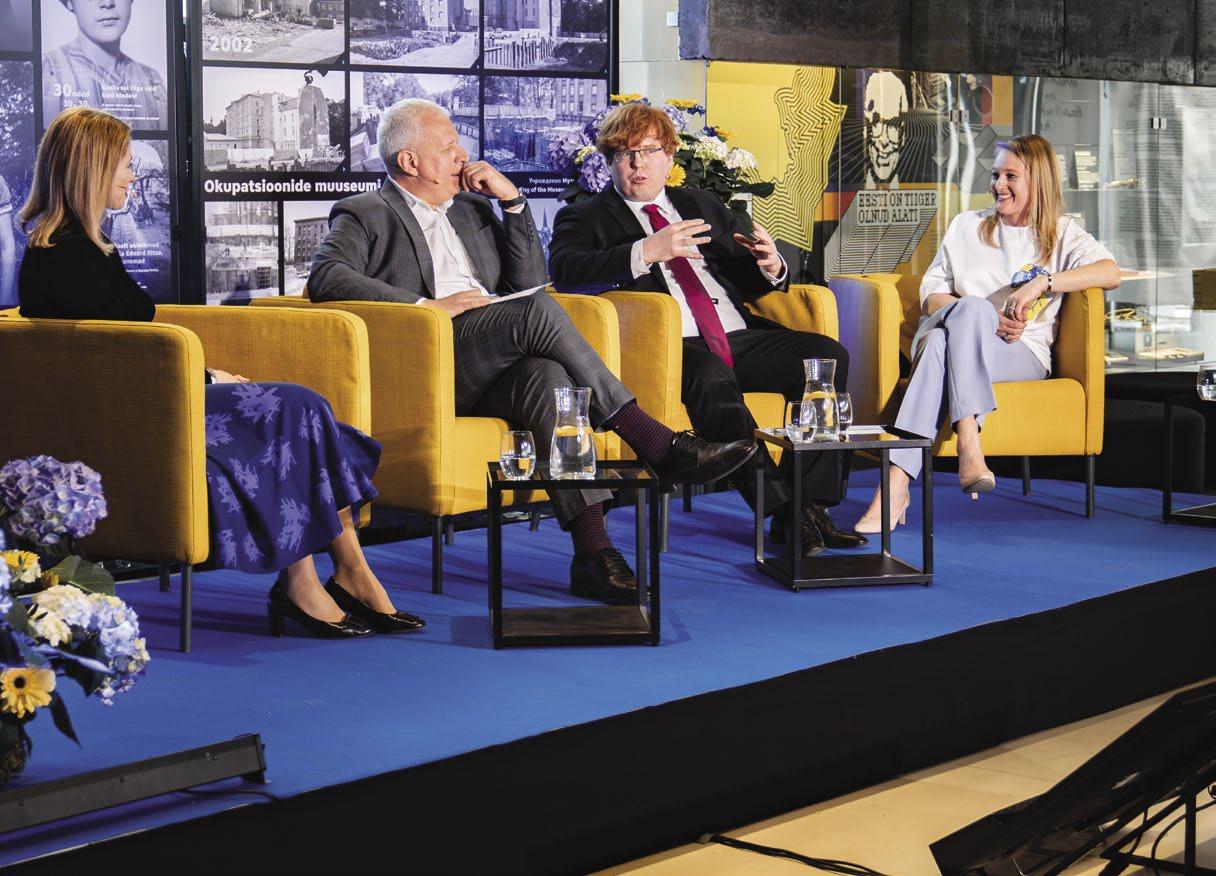 Photos by Skeleton Technologies
Photos by Skeleton Technologies
LIFE IN ESTONIA N o 62 13
Taavi Madiberk participating in the dicussion about Estonia's achievements in the European Union

Castaignet says it’s accurate to describe Skeleton as an Estonian scale-up company that started in a niche market with their supercapacitors but now with the SuperBattery is competing with battery manufacturers.
“Skeleton has been growing over the years. It’s been an incredible journey, with challenges on the way. The headquarters, legal, finance, public relations, government affairs, module development, and software parts are all in Estonia. We are proud to be Estonian, we are proud of being the only European player that makes both energy storage devices and also the raw material. This makes us very unique,” Castaignet says, summing up the growth of Skeleton.
He also affirmed that having a manufacturing facility outside Estonia is not a sign that Skeleton will not invest in Estonia. “It shows that we are happy to expand outside to regions that have specialised on their own strengths. But we are going to expand and grow in Estonia as well,” he says assuringly.
Two different products for different use cases
At the Leipzig factory, Skeleton will scale its production of supercapacitors as the demand for this technology is growing fast.
Castaignet explains that companies in the automotive and truck sector are starting to replace lead-acid batteries with supercapacitor technology
because it is more reliable and sustainable. Regarding the supercapacitor, another key focus area for Skeleton is enhanced STATCOMs (static synchronous compensators), which regulate grid voltage and improve power quality by instantaneously providing and absorbing reactive power to enhance grid stability. They are vital infrastructure as unstable renewable energy sources such as wind and solar are added to the grid.
The SuperBattery is a high-power battery and therefore has a larger addressable market, currently dominated by Asian battery players. It is suitable for applications where you have the need for high power and fast charging that conventional lithium-ion batteries cannot deliver. It can be charged in a minute and has higher energy density than supercapacitors and higher power density than batteries. It combines the best characteristics of the two technologies.
Just last year, as Skeleton announced a project with Shell to decarbonise and electrify mining trucks, there was another announcement by a Canadian automotive supplier Martinrea on the electrification of refuse collection vehicles. Such heavy-duty vehicles need power and fast charging to operate. Fast-charging utility vehicles are where the SuperBattery will come in handy.
“But the use cases are even wider,” says Castaignet. He sees SuperBatteries being a solution for grid energy storage, hyperscaler data centres – which consume a massive amount of electricity – rail applications, as well as many hard-to-decarbonise sectors in the marine industry.
 Photos by Skeleton Technologies
Photos by Skeleton Technologies
14 LIFE IN ESTONIA N o 62
Leipzig Superfactory
Production process in Großröhrsdorf near Dresden, in the largest supercapacitor factory in Europe
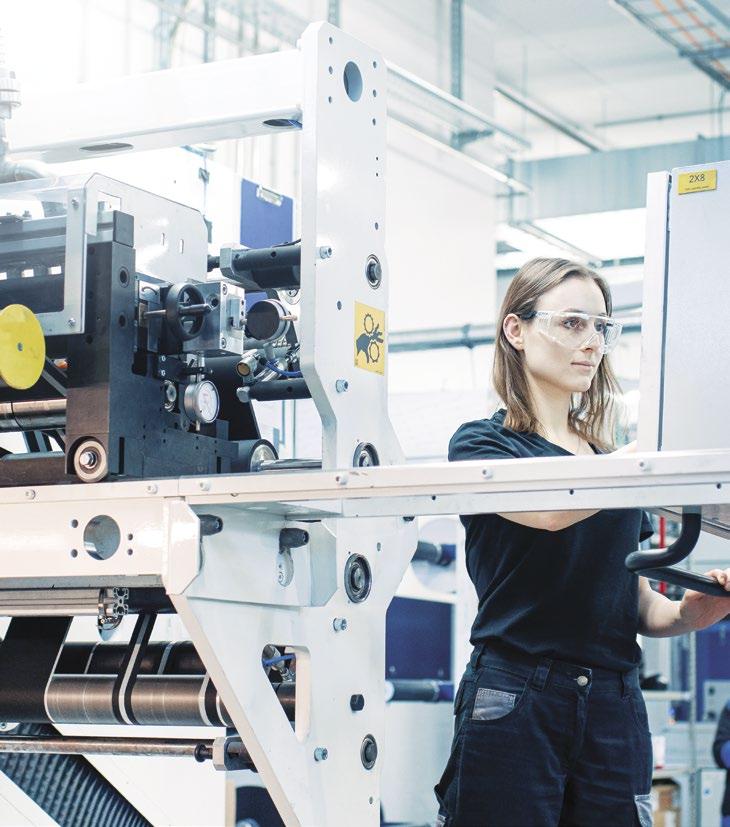
“One sector that is said to be hard to decarbonise is the maritime sector, just like the mining sector, because right now, the technologies are not suitable given the massive power needs. Here again, our SuperBattery would enable the maritime sector to reduce its reliance on diesel engines. This helps to facilitate zero-emission operations in ports, for instance,” he says, pointing out another sector in which Skeleton can help out.
Skeleton’s list of partners and investors include Siemens Group and Marubeni Corporation. “Having the support of Siemens and Marubeni positions Skeleton for enhanced global outreach, backed by two industrial powerhouses from Europe and Asia. In cleantech, you cannot scale without strong partners who have experience and can help you grow. Our addressable market is global, and we focus not only on Europe but also on North America and Asia. Marubeni has been instrumental in enabling us to achieve excellent commercial traction in Japan and Eastern Asia, particularly in heavy-duty equipment and vehicles, and in the automotive sector,” says Madiberk.
Skeleton’s products are designed to mitigate climate change. Companies utilising Skeleton’s SuperBattery or supercapacitors significantly reduce CO2 and other greenhouse gas emissions to the atmosphere.
Skeleton’s ambitions have always been spectacular – aims of conquering the world of energy storage, saving energy, and to overall help to grow their customers’ businesses. For their Curved Graphene invention, Skeleton has been recognised by the European Patent Office and included in the Global Cleantech 100 Hall of Fame. Strategic partnerships
Highlights over the years:
2009 Skeleton Technologies founded in Tartu, Estonia.
2011 Development of space capacitors for the first customer, the European Space Agency.
2012 First commercial product series launched.
2013 Skeleton Technologies GmbH founded.
2014 New manufacturing facility in Viimsi, Estonia opened.
2015 SkelStart, the most powerful engine start module in the world, brought to the market.
2016 Named in the Global Cleantech 100 list, the first of seven listings, landing Skeleton in the Hall of Fame.
2017 The opening of the largest supercapacitor factory in Europe in Großröhrsdorf, Germany.
2018 Product portfolio expansion to cover automotive, transportation, grid, and industrial applications.
2019 Large-scale commercial deals signed with global OEMs, including Skoda Electric.
2020 Skeleton joins the European Battery Alliance to ensure Europe’s competitiveness in electrification.
2021 Strategic agreement with Marubeni, highlighting Skeleton’s rise to the top of the supercapacitor industry.
2022 Skeleton announces plans for its next production facility in Leipzig, which will become the largest supercapacitor factory in the world.
2024 Opening of a R&D centre in Toulouse, France.
with Siemens and Marubeni have secured the company’s leadership in cleantech, facilitating investment, collaboration, and market expansion. Together with their partners, Skeleton is driving the global deployment of innovative energy storage solutions, levering European technology and strengths.
“In terms of grid, industrial, and energy storage, Europe holds a natural advantage. Consider the major power integrators such as Siemens, ABB, and others – we have the competence. This also applies to heavy-duty equipment and industries in countries like France, Germany, Italy, and Spain. We should leverage this inherent strength,” says Madiberk.
Skeleton also helps to reduce the European Union’s dependence on non-EU raw materials and contributes to the energy transition. A circular approach in the design of products and manufacturing will ensure sustainability. The SuperBattery minimises the use of lithium and eliminates the need for nickel or cobalt, transforming the industry for a net-zero future.
“While Europe is often lauded for its exceptional R&D, it’s high time we harnessed material science to its full potential. The focus shouldn’t just be on sourcing more critical raw materials or mining them cost-effectively. It’s about developing technologies that use less of these materials, less lithium or no lithium, and are more sustainable as well as cost-effective. The products and the companies need to have long-term profitability to make an impact on European industry,” concludes Madiberk.
LIFE IN ESTONIA N o 62 15
Estonia sets its sights on 100% renewable energy by 2030
By Maris Hellrand

16 LIFE IN ESTONIA N o 62

Estonia, known for its ambition and innovation, has charted an audacious path towards sustainability, aiming to power its future entirely with renewable energy sources by 2030. Bolstered by impressive strides in wind and solar power, the country is poised to become a beacon of clean energy within the European Union.
Currently, renewable energy accounts for 31% of Estonia’s electricity consumption, a figure that is steadily rising. The nation’s wind energy sector, in particular, is experiencing remarkable growth, with projections indicating a doubling of wind power production by 2025 and a tripling by 2027. Additionally, ambitious plans for offshore wind farms are in the pipeline, expected to debut between 2030 and 2033. Likewise, solar power has undergone a remarkable transformation, catapulting from negligible levels in 2020 to a substantial 800 megawatts (MW), with plans to double this within the next six years. Estonia now proudly occupies 6th position in the EU in terms of solar power per capita.
Fuelling this optimism is the dramatic drop in technology prices within the renewable energy sector. Storage technology prices have plummeted eight-fold, while offshore wind technology costs have seen a three-fold reduction over the past decade. These cost reductions have significantly enhanced the feasibility and attractiveness of renewable energy investments.
To support its renewable energy ambitions, Estonia has earmarked 155 million euros for investments in electricity grids up to 2027. Furthermore, the country is on track to synchronise its grid with the European network by early 2025, ensuring seamless integration and collaboration within the broader European energy landscape.
Photo by Zero Terrain
LIFE IN ESTONIA N o 62 17
Pakri Wind Farm

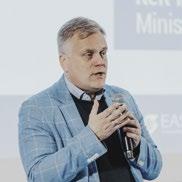
Keit Kasemets, secretary general of the Ministry of Climate, expresses confidence in Estonia’s transition, stating, “We are in the final stages of the transformation in the electricity market. We used to fully rely on oil shale, which we are now phasing out in favour of renewable, storage, and other capacities.” Kasemets emphasises the government’s commitment to ensuring competitive electricity prices for consumers, aligning with the affordability of Nordic neighbours who boast the lowest electricity prices in Europe. In a study commissioned by the Ministry of Climate, Tallinn University of Technology assessed the impact of electric storage on electricity prices and found that building storage on a large scale would save Estonian consumers more than 30 million euros annually.
Estonia’s legislative framework underscores its commitment to renewable energy, with laws mandating that 100% of electricity consumption be sourced from renewables by 2030, alongside a target of 69% renewable energy for heating by the same year. With solar targets already met, the nation’s focus now shifts decisively towards expanding wind capacity. In total it’s expected that renewables will reach a 4525 MW capacity by 2030, out of which 2850 MW will be covered by onshore wind.
Anticipating a surge in demand, the government is preparing a policy for generation volumes constituting about 130% of current annual
consumption. Efforts are underway to attract industry investments, leveraging the allure of affordable and green energy as a competitive advantage.
As renewable energy takes centre stage in Estonia’s energy landscape, the government is actively fostering innovation in storage technologies, with pilot support schemes and regulatory reforms aimed at creating an enabling environment for diverse storage solutions by 2025. One significant change is aimed at exempting electric storage systems from double taxation. In the future, the owner of a storage system will not have to pay renewable energy fees, electricity excise taxes, or grid transmission fees for electricity stored from the grid and returned to the grid within the same calendar month. This change reduces the costs of electric storage systems for storing and returning electricity to the grid, making the establishment of such systems profitable for entrepreneurs. The legislative changes also provide business and private customers with the opportunity to sell unused or saved electricity to the market.
With these initiatives, Estonia is poised to usher in an era of unprecedented renewable energy adoption, setting a compelling example for sustainable development on the global stage.
Photo by Renee Altrov
18 LIFE IN ESTONIA N o 62
The biggest wind and solar farm in the Baltics is taking shape
The Sopi-Tootsi project, set to become the largest wind and solar farm in the Baltics, is rapidly taking shape in the Põhja-Pärnumaa municipality. Throughout the spring and summer nights of 2024, components for 38 wind turbines will be transported to the Sopi-Tootsi wind farm from the port of Paldiski. Additionally, 112 000 solar panels are being installed, with Enefit Green planning to begin the release of electricity into the Estonian grid by the end of the year. Once operational, the farm is expected to produce a significant 10% of Estonia’s current electricity consumption, totalling 770 gigawatt hours (GWh) of renewable electricity annually.
While the 80-metre-long rotor blades are transported nightly, the foundations have already been laid. According to Lauri Ulm, head of wind developments at Enefit Green, the farm’s connection to the grid will commence by early autumn, with production slated to begin by the year’s end. The Sopi-Tootsi farm is poised to double Estonia’s current renewable energy output.
Mayor Madis Koit of the Põhja-Pärnumaa municipality views the Sopi-Tootsi wind farm as a transformative milestone for the community: “The community’s response to the new wind farm has been overwhelmingly positive, recognising the significance of renewable energy in our region and the nation’s energy landscape.” Koit views the project as a valuable learning experience for future large-scale infrastructure endeavors, which he hopes will attract new investments to the region: “The construction of the Sopi-Tootsi wind farm opens up new development opportunities for Põhja-Pärnumaa and especially the Tootsi area. We already have a Swedish investor on board, ready to invest approximately 100 million euros, and we are actively seeking additional investors to establish a new business area in the Tootsi region.”
Lauri Ulm describes the cooperation with the local community as fruitful, citing the village’s industrial history: “Tootsi was founded a century ago around peat production, which ceased in 2012, coinciding with our wind farm planning. This transition symbolises the dawn of a new economic era.” Ulm anticipates that the construction phase will generate income for the local community, with long-term opportunities for employment in grounds maintenance and technician training. Moreover, the abundance of green energy is expected to attract further industrial investments, bolstering the community’s prosperity. In the immediate vicinity, the grid charge can be omitted for up to 20 MW – an extra incentive. Looking at the longer aims of Estonia, by 2030 each electron from the Estonian grid should come from a renewable source. For potential investors next to Sopi-Tootsi farm, this can be assured safely already from 2025.
The unique aspect of the Sopi-Tootsi project lies in its location on a depleted peat field and its collaboration with the Estonian State Forest Management Centre to restore bogs across an area of 100 hectares. The water management systems beneath the solar farm serve as a pilot project to mitigate carbon emissions from peat decomposition and promote biodiversity. Ulm envisions former peat fields and bogs as promising sites for future developments, requiring minimal interference with natural conditions.
Ulm highlights the resilience of combining wind and solar energy, making the farm more weatherproof and reliable. However, he acknowledges the need for backup solutions, such as gas power, under certain conditions. With increasing demand for electricity due to trends in electric vehicles and heating pumps, Ulm remains optimistic about Estonia’s prospects for large-scale offshore wind projects by 2030.
The wind farm’s construction is led by NOBE, Verston, and Connecto Verston has completed 200 kilometres of ditches and constructed 33.5 kilometres of roads connecting the wind turbines, solar farm, and substation. NOBE has erected 34 of the 38 wind turbine foundations, using 3700 loads of concrete. Nordex, a leading wind turbine manufacturer, is responsible for manufacturing and installing the turbines. With a total investment of 350 million euros, Sopi-Tootsi stands as the largest and most powerful wind farm in the Baltics, both in terms of turbine count and capacity.
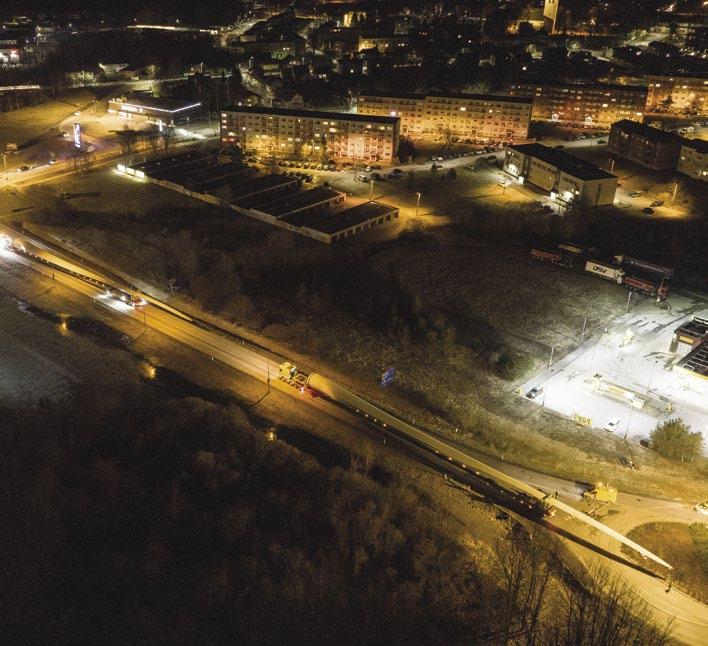
 Photos by Enefit Green
Photos by Enefit Green
LIFE IN ESTONIA N o 62 19
Transport of the wind turbines to the site and their installation in Sopi-Tootsi

The groundbreaking Risti solar park
Sunly is an independent energy producer developing renewable energy projects in the Baltics and Poland. It also manages a renewable energy and electrification portfolio of startups in Estonia. The Risti 244 MW solar park marks the initial phase of a larger energy park developed by Sunly and Metsagrupp.
Priit Lepasepp, CEO of Sunly, what is the plan and ambition with Risti solar park?
We see Risti solar park as part of a larger plan. For us, this is the first major example of a hybrid park project, where different types of electricity generation and storage are located behind the same connection point. In the case of Risti park, it is deemed expedient to start with the construction of a solar park; for future Sunly energy parks, a wind park will most likely be built first, followed by other options to boost production and for storage. Risti solar panels will use trackers, meaning they will change their direction together with the sun’s movement. This will help to increase production, especially in morning and evening hours, when actual consumption is higher. Energy storage systems will allow us to use produced electricity in a more efficient way. Risti will be the biggest solar park in the Baltics.
What are the specific steps and goals within this year?
Construction of Risti photovoltaic park will begin in the second quarter of 2024. The expected completion time is in the first half of 2026. The cost of the solar park, which is being built by Sunly and Metsagrupp, is nearly 120 million euros. The park should work at full capacity at some point in 2026.
 Photo by Zero Terrain
Priit Lepasepp
Photo by Zero Terrain
Priit Lepasepp
20 LIFE IN ESTONIA N o 62
Photo by Rasmus Jurkatam
How have you succeeded in cooperating with the local community?
One of the central principles of how we develop and build wind and solar parks is by cooperating closely with the local communities. We are not trying to hide the fact that wind or solar parks will change the appearance of the area. The government of Estonia has set an ambitious goal for the country to use 100% renewable energy by 2030. This means it is not a question as to whether renewable energy will take over the old system, but rather how and who will create these possibilities. At the moment, communities can choose with whom they want to work. Sunly is committed to transparent communication, community involvement from the outset, and creating economic opportunities for locals, all while addressing various concerns about wind and solar park development. We build long-term, collaborative, and mutually beneficial relationships with local communities, which reinforces Sunly’s dedication to sustainable and inclusive practices. In Risti, Sunly will contribute a portion of the revenue from the solar park to the budget of the Risti borough, thereby supporting the development of the region. For example, at a rate of 50 euros per megawatt hour (MWh), the fee would be approximately 75 000 euros per year. Upon completion of the entire energy park, Sunly will offer the community more affordable electricity.
What have been the biggest hurdles?
Competition in the renewables sector is fierce and we don’t see that changing. This means we need to be very clever when planning new projects and constantly monitor what decisions governments in the Baltics and Poland are making. All companies dealing with renewables are challenged by a lack of experts in the sector, especially engineers. We are collaborating with universities in Estonia and also in Poland to encourage young people to finish their studies and pave the way in renewables.
What are your plans beyond Risti and Estonia?
Risti energy park is just one of our activities. We are also actively developing and building in Latvia, Lithuania, and Poland. We will also open a couple of smaller parks in Latvia this year and start the construction of bigger ones in Poland at the beginning of 2025. We are mapping possibilities to enter the wind market in Poland. If all goes well we should have the first turbines in Poland up in 2027.
At Sunly, our mission is to build sustainable and clean energy solutions in the Baltics and in Poland while thinking through the whole spectrum from development to consumption. The cost-effectiveness of renewable energy is undeniable, with its inevitable rise driven by continuous technological advancements. Solar and wind power are becoming increasingly price-competitive with traditional energy sources. We have set an ambitious goal to have 4.6 gigawatts (GW) of clean energy by 2030. Our work focuses on four key areas – solar power, wind power, energy storage, and innovation. We see lots of opportunities in Poland, but of course there is also lots of competition. In Poland, up to now, we have been mainly developing solar projects, but in the coming years we are planning to start with the first wind projects as well. Another important key aspect in how we operate is to develop the whole renewable energy ecosystem. Sunly has already invested 9.6 million euros into cleantech startups and we are planning to increase this amount. We cannot solve all of the current challenges of the sector, but we want to be close to those who have new ideas that could potentially serve everybody in the future.
Critics of solar power say that Estonia doesn’t have enough sunny days. What do you tell them?
Future renewable energy providers also have to be storage providers. This means we have all the energy we need even when the sun is not shining, or the wind is not blowing. We have already added storage opportunities to one of our parks, Pikkori solar park, and we are planning to do the same for other parks in the future as well. However, small-scale storage can’t cover it all. Investments are also needed for the development of large-scale storage opportunities, for example the Zero Terrain project in Paldiski.
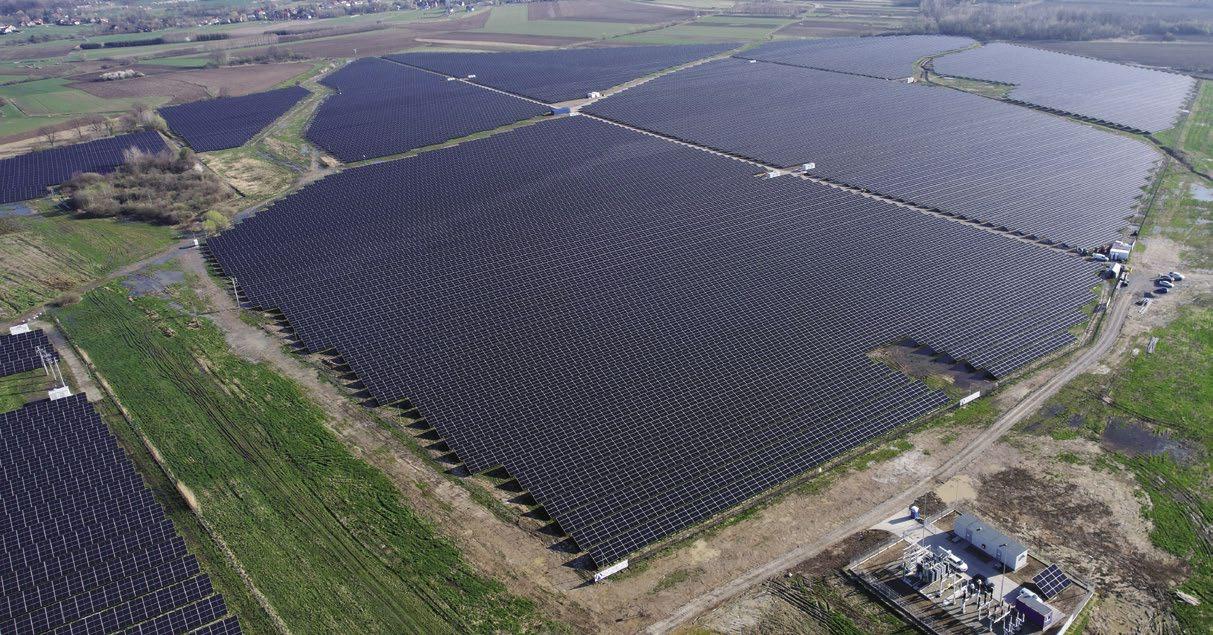 Photo by Sunly
Photo by Sunly
LIFE IN ESTONIA N o 62 21
Sunly's Rzezawa 60MW solar park near Krakow, Poland
Offshore wind farms currently in progress
(in different stages of development)
Enefit Green AS, Hiiumaa, 1100 MW
Enefit Green AS, Gulf of Riga, 1000 MW
Five Find Energy, Nasva (nearshore), 4 MW
Tuuletraal OÜ, Gulf of Riga, 380 MW
Saare Wind Energy OÜ, Saaremaa, 1400 MW
Utilitas, Saare-Liivi 5, 1200 MW
Ignitis Renewables, Liivi 1 and Liivi 2, 1600 MW
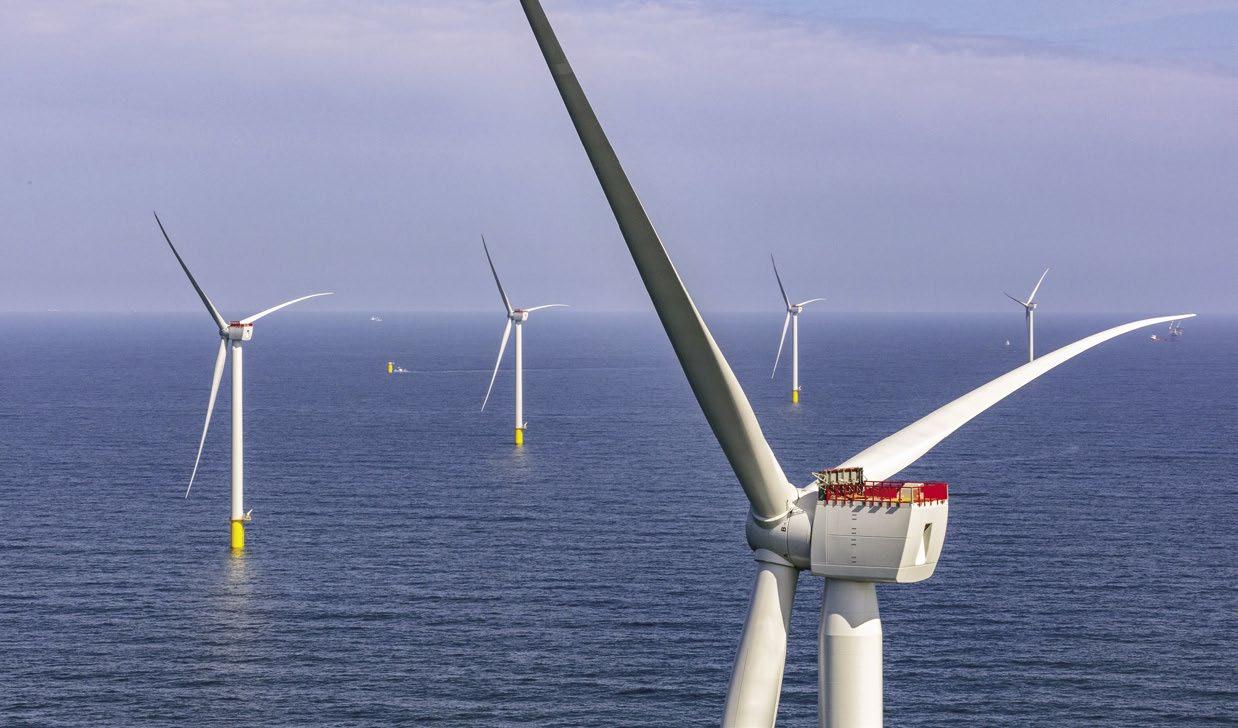
Kuido Kartau: We can accomplish more with the sea than merely catching cheap sprats*
Kuido Kartau founded Saare Wind Energy (SWE) as a two-person company in 2014. He reminisces about how their ambitious plan for a billion-euro offshore wind park in the Baltic Sea seemed like a utopia at the time. Ten years later, SWE has forged a strong partnership with the experienced Dutch company Van Oord Offshore Wind BV and anticipates receiving the location permit in the coming months. The completion of the environmental impact assessment marks a significant milestone for a project of this magnitude. Currently, the company is in negotiations with potential new partners for closing the next funding round to progress to the next phase of development.
The confirmed location for the project is a 200 km2 area to the west of Estonia’s largest island, Saaremaa, capable of hosting up to 100 wind turbines with a capacity of up to 1400 MW. This production could meet roughly two-thirds of Estonia’s current energy consumption. Kartau acknowledges the ambitious nature of the plan but adds, “Today in Europe, no wind farm is planned to be smaller than 1000 MW.” Construction is slated to commence in 2027 at the earliest, by which time smaller projects will have become obsolete. Kartau estimates the total investment could reach 3–4 billion euros, citing the credibility of their budget estimates due to their partnership with Van Oord, a 154-year-old company specialising in offshore wind farm construction.
Kartau emphasises the significant impact of seabed geology on costs, noting, “We know from our research the type of foundations required and can thus estimate the cost.” Unlike the sandy seabed of the North Sea, the Baltic Sea presents more challenges.
According to Kartau, four aspects must align for the realisation of an offshore wind farm: permission, the grid, offtake, and supply chain. While permitting is commonly perceived as the main obstacle in Estonia, true
challenges emerge thereafter. Kartau stresses the importance of aligning the project with a realistic timeline.
Regarding offtake, or consumption, Kartau notes Estonia’s reliance on energy imports and advocates for large-scale projects like theirs to address the shortfall. He sees the current government plan with CFD (Contract for Difference) as beneficial. However, Kartau believes government support should focus on ensuring cash flow security rather than direct subsidies.
Concerning the supply chain, Kartau highlights the disparity between political ambitions for wind farms in Europe and the insufficient construction capacity. He notes that the three main producers of offshore wind generators – Vestas, Siemens, and GE – produce only one model at a time, with sizes trending toward larger ones.
Despite the challenges, Kartau remains optimistic, suggesting the wind farm in Saaremaa could be operational by 2030–2032. He believes the project’s cornerstones – location, wind conditions, grid availability, and minimal ice – are solid. Moreover, local support has grown significantly, with the community recognising the project’s potential benefits. The Kuressaare vocational school on the island has launched a course for rotor maintenance specialists and is preparing to train other professions related to wind farms.
“The majority of the island’s residents see it as the opportunity of the century,” Kartau concludes. “Instead of merely catching cheap sprats, we can accomplish much more with the sea. And this is our opportunity.”
*Baltic herring and sprat are very tasty fish. We recommend trying different recipes and cooking methods.
22 LIFE IN ESTONIA N o 62
Photo by Van Oord

Eesti Energia to build its first large-scale energy storage system
By Ann-Marii Nergi
LIFE IN ESTONIA N o 62 23
Photo by Eesti Energia

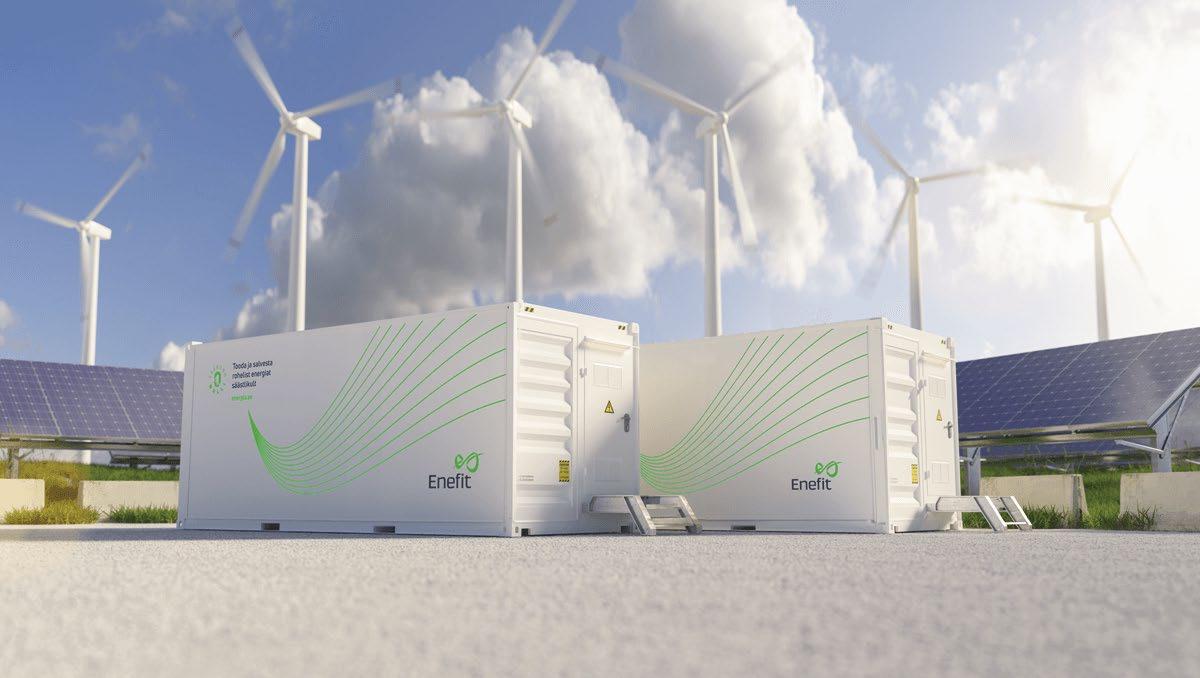
Large-scale energy storage devices help to ensure affordable electricity by switching to renewable energy. Eesti Energia’s storage device will be built at the Auvere industrial complex later this year.
Eesti Energia will build the company’s first large-scale storage system at the Auvere industrial complex later this year to balance the fluctuations in electricity prices caused by the growth in renewable energy production and to support the stability of the electrical system. This is a pilot project to make sure the solution is suitable both in Estonia and the company’s other retail markets.
Kristjan Kuhi, member of the management board of Eesti Energia, explains that the large-scale energy storage device enables participation in the energy and auxiliary services markets to ensure security of electricity supply. “The more production of unmanageable renewable energy we have on the market, the more the electricity system will need storage to keep prices stable. So the development of renewable energy production and storage device plans should, ideally, go hand in hand. In addition, the transition to a 15-minute balancing period and the desynchronisation of the Baltic electricity system from the Russian grid will increase the need for storage,” Kuhi explains.
Estonia is scheduled to be decoupled from the Russian electricity system in 2025, after which the Baltic electricity grids will have to manage their own frequencies. Storage solutions will help to ensure that the electricity system is operational (i.e. that the balance between consumption and generation and frequency is guaranteed). As batteries are able to react very quickly to changes in the electricity system, they are ideal assets for ensuring such “system services”.
The capacity of the large-scale energy storage device is 26.5 megawatts and 53.1 megawatt-hours, which corresponds to the daily consumption of about 6250 households. The storage devices can be used for a wide range of purposes, and the stored electricity can be traded on several electricity markets. This makes storage devices a little more flexible than solar or wind energy. By managing the storage wisely and constantly analysing the electricity markets, it is possible to ensure that the storage will remain profitable for years to come.
This project is a pilot project, which means that the energy company wants to convince itself that it is possible to design similar storage facilities outside Estonia (i.e. in Eesti Energia’s other home markets, in Latvia, Lithuania, and Poland).
Kristjan Kuhi
24 LIFE IN ESTONIA N o 62
Photos by Eesti Energia
“Future storage plans will depend primarily on the outcome of our large-scale energy storage system, but as things stand, the announced storage device will not be the last,” Kuhi says, convinced. “As there are a lot of areas requiring large investments, we will have to keep a close eye on which investments require a quicker undertaking and which ones can wait a few more years. In order to enable more storage device installations in Estonia, Enefit – a subsidiary of Eesti Energia focused on retail business – offers its customers smart battery management, which allows both home and business customers to get a faster return on their investment while contributing to maintaining the balance of the electricity grid.”

How does the energy storage device secure more stable electricity prices?
The addition of weather-dependent electricity generation to the grid makes storage increasingly necessary. Since the wind does not blow and the sun does not shine all the time, its energy needs to be stored. One solution for storing renewable energy is large energy storage devices, which can help to avoid ultra-high electricity prices, as we experienced recently. On the other hand, battery solutions create additional consumption in those low-price hours when electricity production is high or remaining demand is low.
In other words, storage devices help to smooth electricity prices by generating consumption for low-priced hours and creating supply for high-priced hours. This means that for consumers affected by stock market prices, the ultra-high price peaks disappear with sufficient storage capacity, while for generators, the lowpriced hours disappear. This, in turn, will make investing in renewable energy more attractive, for example, by setting up a company solar farm.
The international procurement organised by Eesti Energia was won by the joint tender of Diotech OÜ and Solar Wheel OÜ, with LG Energy Solution supplying the battery technology. According to Mart Moora, member of the management board of Diotech OÜ, the company›s mission is to accelerate society›s transition to carbon-neutral electricity production and consumption.
“To serve our mission, we have, over several years, deliberately developed the ability to design and build battery technologies, as they are key in making renewable energy production controllable,” says Moora. “We are honoured to bring LG Energy Solution’s state-of-the-art storage systems to the Estonian market and to cooperate with Eesti Energia in this pilot project. We will do our best to ensure that the system we are building performs as expected and that the pilot project meets everyone’s expectations.”

LIFE IN ESTONIA N o 62 25
Pakri wind and solar farm near Paldiski
Unique underground storage changes the energy landscape
By Ann-Marii Nergi

by
26 LIFE IN ESTONIA N o 62
Photo
Zero Terrain

Zero Terrain Paldiski represents a notable milestone in Estonia’s energy system. Paldiski PHS- plant is the only greenfield pumped hydro energy storage project in the northern Baltic region and will also be the largest facility in the country.
Zero Terrain technology makes it possible to build a pumped hydro energy storage system in areas where it was previously not possible due to flat land.
Supporting renewable energy with storage is essential, as it provides emissions-free energy, even when the wind is not blowing and the sun is not shining.
Zero Terrain (Energiasalv) Paldiski, the country’s first pumped hydro energy storage system project, was initiated in 2009 between several energy companies to help the Estonian energy system cope with the unpredictable fluctuations of renewable energy, and enhance supply reliability and energy security, ensuring a more stable and reliable electricity supply.
First, Zero Terrain Paldiski obtained the main building permits in December 2022, and the construction of the country›s first pumped hydro storage (PHS) plant will begin in 2025. The uniqueness of Zero Terrain pumped hydro storage technology lies in the fact that, compared to traditional plants built inside mountains, the company›s concept for PHS can be applied on flat land, opening the door to widespread energy storage globally.
Additionally, just recently, the company signed a memorandum of understanding (MoU) with the Estonian Ministry of Climate. With this cooperation, Zero Terrain is collaborating closely with the government to devise solutions to enable the realisation of the PHS project in Estonia, including support for the securing of capital and addressing market challenges. Peep Siitam, the founder and CEO of Zero Terrain, said that
signing the MoU is a significant step forward in Zero Terrain›s journey towards a clean and secure energy future. “We believe there can›t be a renewable-energy-driven energy system without large-scale, long-duration energy storage. This collaboration signifies the cooperation and commitment to driving positive change in the Estonian renewable energy landscape.”
Furthermore, in 2024, Zero Terrain received a grant of 1.98 million euros from the state’s applied research programme for development and implementation activities, for minimising the environmental footprint, for exporting the technology to countries where large-scale storage has not yet been possible due to geographical constraints, and for engaging new investors in Zero Terrain Paldiski.
As the problem of long-term storage is a global one and the advancement of traditional PHS technology opens up global export opportunities, Zero Terrain is mapping out potential interested parties from both Europe and the GCC region. Mario Vee, Zero Terrain business development lead, explained that Zero Terrain technology was presented, for example, at the COP28 climate meeting in Dubai at the end of last year and during a visit to Saudi Arabia by the Estonian Minister of Economy, Tiit Riisalo. “The aim was the same on both occasions: to validate the applicability and competitiveness of our technology in the target markets compared to others and to establish direct contacts with potential partners for Zero Terrain projects elsewhere in the world. In both cases, the objectives were met, and we received confirmation that there is interest. We are at the beginning of our export journey, but the initial feedback is positive. However, the first agreements are expected perhaps only in a year’s time,” Vee added.
LIFE IN ESTONIA N o 62 27
Building the storage will produce new building material
Mario Vee
Business development lead at Zero Terrain
The construction of the Zero Terrain Paldiski 500 MW hydro storage plant will involve going deep underground. During construction, 10 reservoirs will be built, for which several openings will be made through complex geology – 200 metres of sedimentary rock and the hard rock below this, in total up to 750 metres. It means excavating about 15 million tonnes of gneiss in the first stage. This is a completely new mineral resource for Estonia, and until now it has been expensive to reach, and it has simply not been efficient to do so. Gneiss is a crystalline rock whose parameters are significantly superior to and more durable than limestone. The new material will be produced in accordance with the circular economy principle – industrial water is circulated, and the groundwater level will not drop, since there is no pumping, and appropriate equipment will be used to stop dust spreading
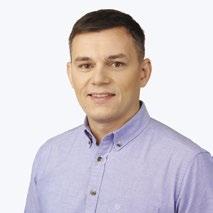
Crushed gneiss is successfully used in road construction elsewhere in the world, and the quantity produced in Paldiski in the first phase will last for 5–6 years. Compared to today, when 100 million euros is invested in road reconstruction every year, between 2026 and 2050 using gneiss, over 1 billion euros less would be spent on road reconstruction, because the roads would last longer and there would be larger intervals between major reconstruction – from 20 years currently, to 30 years. So far, gneiss has been imported in small quantities from Finland, Sweden, and Norway.
Part of the 1.98 million euro grant recently received through Enterprise Estonia’s applied research programme will go to converting extracted gneiss into aggregate products using the best available technology and the smallest possible footprint (i.e. efficient and economical machinery). In addition, minimal use is to be made of off-system environmental resources, which means that water used in the production process is not drawn from a water body or a well, but the water used in crushing is recycled – it is purified and reused. Unlike in almost all limestone quarries in Estonia, separate groundwater ingress pumping is not required for gneiss extraction.

During the nominal operating cycle of 12 hours, Zero Terrain Paldiski generates 6GWh of power to the grid, which is somewhat more than the average daily consumption of all Estonian households.
Peep Siltam, the founder and CEO of Zero Terrain, at the Energy Hackathon organised by the Ministry of Climate in January 2024
28 LIFE IN ESTONIA N o 62
Photo by Johan Hallimäe
by Ain Laidoja

Estonia is moving rapidly towards the use of hydrogen
by Sven Paulus
It is estimated that Estonia has the potential to produce at least 250 000 tonnes of hydrogen per year, which could be used both as a raw material for the chemical industry and as a fuel for shipping, aviation, and ground transport. Hydrogen will be vital in the near future, as it will help to contribute to the green transition, for example as a storage and energy carrier. Life in Estonia mapped the latest developments in the Estonian hydrogen economy.
LIFE IN ESTONIA N o 62 29
Photo
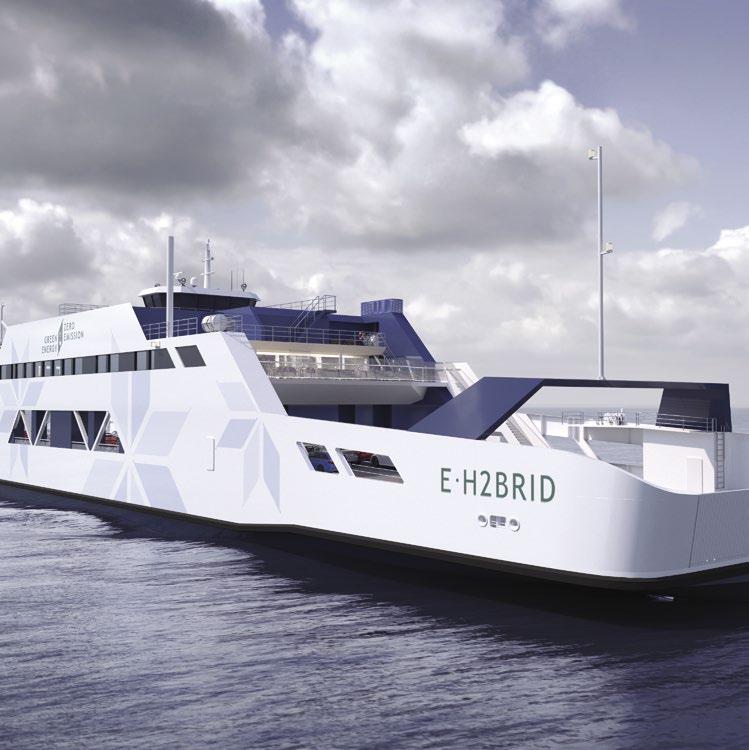
By 2030, the whole of Estonia should have fully switched to electricity from renewable sources. This will encourage businesses, researchers, and experts to look increasingly towards alternative energy production options. The term “green hydrogen”, which is free of carbon emissions and can be used in a wide range of industrial and economic sectors, is becoming increasingly popular. The development of the hydrogen economy has been gaining momentum over the last few years, especially after 2022, when the Hydrogen Valley Estonia announced plans to develop the world’s first nationwide hydrogen ecosystem. A mapping exercise at the time identified 30 potential hydrogen projects in Estonia.
Several hydrogen hubs have now been established in Tartu, Pärnu, Saaremaa, Ida-Virumaa and Paldiski. Their aim is to bring together different stakeholders who want to either develop or support the hydrogen economy, building on regional strengths. This spring interested parties have met several times in Paldiski. Paldiski is an ideal location for hydrogen production and industrial use, as it has the necessary infrastructure in the form of a harbour, railway, road, gas pipeline, solar and wind farms, and more. Offshore wind farms are also likely to be built on the west coast in the coming years.
According to Ain Laidoja, CEO of the Estonian Hydrogen Technologies Association, this means that the future electricity surplus will have to be refined: “Just as we don’t want to export milk only to buy it back from the Lithuanians as sour cream, it’s not a good idea to export electricity as a raw material.” He is however convinced that the hydrogen economy in Estonia must be developed today, otherwise our neighbours will do it and we will be left behind. Hydrogen could be used as a resource, for example, in the wood and biomass industry, where plans are underway to produce green asphalt, cellulosic sugars, methanol, ethanol, cellulose, and more.
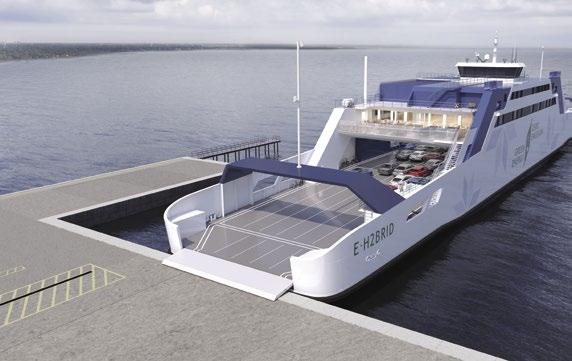
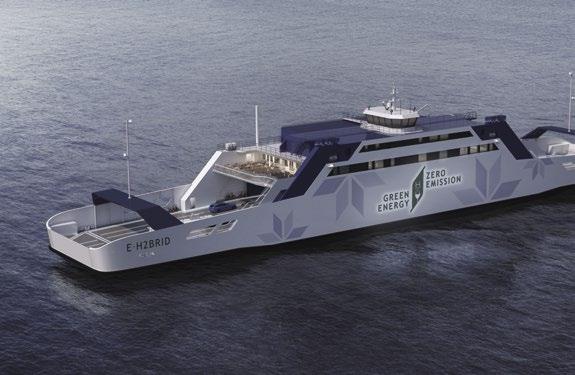
Waiting for offshore wind farms
Rainer Paenurk, head of the Saaremaa Development Centre and representative of the hydrogen centre there, says that the industrial development of the Estonian hydrogen market is very strongly and uniquely dependent on the development of offshore wind farms. Saaremaa is one place in whose coastal waters one of the first offshore wind farms will likely be built, and this will provide the opportunity to electrolyse green hydrogen, using it as a raw material, for example, in the chemical industry for the production of fertilisers and alternative fuels and for the operation of ferry traffic and other transport.
The advantage of hydrogen over other fuels is that it does not need to be imported but can be produced locally and the surplus sold.
As fossil fuels will soon become uncompetitive for maritime transport, Paenurk said Estonia has a huge potential to offer hydrogen as a raw material for the production of alternative fuels. Estonia’s national shipping authority, Riigilaevastik, is optimistic about introducing a zero-emission battery hydrogen-fuelled ferry between the islands in 2026. But hydrogen can also be used as a fuel for other applications, such as public transport and refuse vehicles. Or just in cars, as Marek Alliksoo, a member of the board of the Estonian Hydrogen Technology Association, says: “We added a hydrogen car to the Bolt system for a week at Rally Estonia in 2021, and the price was the same as that of an electric car. Many riders were pleasantly surprised.”
However, for hydrogen cars to become more widespread, public refuelling stations are needed, which is why Alexela, a hybrid energy company, has started designing hydrogen filling stations. The first
30 LIFE IN ESTONIA N o 62
Estonia’s national shipping authority, Riigilaevastik, is optimistic about introducing a zero-emission battery hydrogen-fuelled ferry between the islands in 2026


refuelling stations in Tallinn are expected to be completed as early as this year, with Pärnu, Tartu, and eastern Estonia also awaiting such stations. These stations will serve different modes of transport and consumers. In cooperation with Alexela and Utilitas, hydrogen taxis will start running permanently in Tallinn this November.
Developing competences
Jaanus Tamm, project manager of the Tartu Urban Economy Department, consoles those who doubt the safety of hydrogen: “Hydrogen technologies are being developed very carefully, and current evidence from around the globe shows that hydrogen vehicles are in no way more dangerous than vehicles using liquid fuels or compressed gas.”
The Tartu Hydrogen Centre has set the training of competent specialists as one of its objectives. The Tartu College of Applied Sciences, or VOCO, will start training specialists in hydrogen technologies to work in Estonian companies from autumn 2026. However, 2025, should already be a ground-breaking year in Tartu, as hydrogen vehicles and other hydrogen applications should become visible and tangible. It is worth recalling that several years ago, the company Auve Tech and the University of Tartu developed the world’s first hydrogen-powered self-driving vehicle, which could be seen on the streets of Tartu.
The Ida-Viru Hydrogen Centre also has its own plans to use this climate-friendly fuel. Eesti Energia wants to set up a chemical industrial complex in the region based on a circular economy. Its output would be used as raw material in the international plastics industry. Once the first phase of the chemical plant has been completed, about 5000 tonnes of hydrogen will be consumed annually from 2030, based on the plant design. “The proposed plant will also create an opportunity to develop local hydrogen production in Estonia, as hydrogen is an important raw
material for converting oil into a chemical product. Hydrogen is mainly used for the purification of pyrolysis oil,” says Kaarel Kuusk, head of partnerships and hydrogen projects at Eesti Energia. In the long term, the quantities of hydrogen used in the chemical industry will multiply.
The six gas transmission system operators of the Baltic Sea countries signed a cross-border hydrogen infrastructure project last year that enables hydrogen transmission in Finland, Estonia, Latvia, Lithuania, Poland, and Germany. For Estonia, the Nordic-Baltic Hydrogen Corridor enables the development of large-scale industry using hydrogen as an input. It also offers flexibility regarding the electricity grid, because we can connect to hydrogen storage options, starting from salt caves in Poland, where hydrogen can be stored in large quantities and relatively cheaply.
In view of all the above, the hydrogen issue has taken on a whole new life in Estonia. In 2020, the European Commission signed an agreement to help create 100 hydrogen valleys worldwide, and last year Hydrogen Valley Estonia was the first nationwide Valley in the world to be recognised with the relevant certificate. According to Alliksoo, this brought Estonia a lot of attention and a large number of foreign visitors, who also came to the annual Hydrogen Days in Tartu. Last autumn’s European Hydrogen Week in Brussels, however, saw the largest Estonian delegation per capita and the stand was very popular with visitors.

 Photos by Ain Laidoja
Photos by Ain Laidoja
LIFE IN ESTONIA N o 62 31
Nuclear power –the future of Estonian electricity?
By Sven Paulus

by GE-Hitachi
32 LIFE IN ESTONIA N o 62
Photo
by
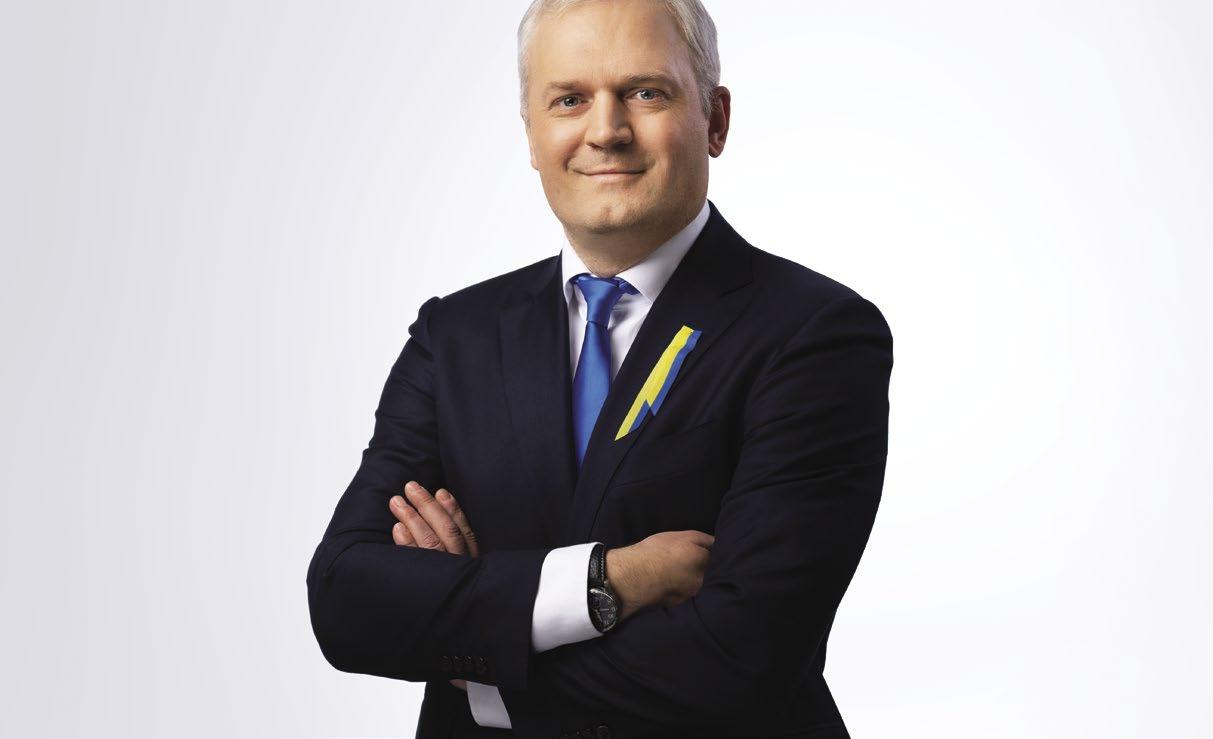
In a world of ever-increasing energy consumption and green revolution, Fermi Energia is trying to make a breakthrough by building Estonia’s first small nuclear power plant by 2035. Kalev Kallemets, chairman of the company’s management board, explained the background to this long-prepared project.
Why does Estonia need a nuclear power plant?
We need to achieve several important goals simultaneously and for the long term. As a Nordic country, we need energy supply security because the heating seasons are long. Secondly, we need to achieve carbon neutrality in all weathers. We also need increased industrial development and electricity consumption relating to green sources to meet the EU and Estonian 2050 carbon neutrality target. Price stability is also needed. This is a combined view, and we must also look at the fact that nuclear power has worked practically over the long term as a profitable solution in Canada, Finland, Sweden, and other European countries.
When could the plant be ready?
If all goes well, we are planning to submit an application for a national special planning scheme after a parliamentary decision later this year, and we are very pleased that two municipalities have agreed to participate. The first phase will take three years, the second two years, and once the site is determined, the application for a construction permit can be prepared. Once our reference plant in Canada is completed by 2028we will be ready to apply for a construction permit and hopefully get this by 2030. A financing decision will then be made, and it could then be possible that the first reactor is generating electricity by 2035 and the second one a year or two later.
What will happen after the parliamentary decision?
The next steps are planning activities to identify the best location for the nuclear power plant in Estonia. The sites currently under consideration are in Virumaa. This part of the country has the best electricity network, industrial history, and today’s industry, although this is in decline due to regional development. Replacing the oil shale industry requires a clean, long-term, value-added industry that also provides high-value jobs. Secondly, legislation needs to be developed and human resources prepared. These steps will happen over the next three to five years and are not yet very costly for the country, totalling a few million. It will become more expensive when we get to the building permit procedure.
How many people would the nuclear power plant employ?
Quite many during the construction phase. We’ve also been in contact with over 30 construction, design, and engineering companies in Estonia and have already commissioned quite a lot of work. We definitely plan to continue doing this. In addition to the indirect employment, we are already a pretty good employer ourselves. Our organisation will certainly grow to more than a hundred people by the start of the construction phase, and one reactor will also be operated by a staff of around a hundred. In terms of employment, it will definitely be more efficient than today’s oil shale industry. But we also have special features; for example, the plant’s employees can only be citizens of the Republic of Estonia who have passed security clearance, and they will be paid a pretty good salary for this. But because of the safety and the high level of trust in these people (as is the case in Finland, Sweden, and other parts of the world), there are very specific elements involved, as well as a high level of due diligence and the maintaining of high standards.
Kalev Kallemets
LIFE IN ESTONIA N o 62 33
Photo
Fermi Energy

How much could the nuclear plant cost?
We’ve spent 7 million euros up to now, and we’ll certainly spend another 30–40 million on development. We have done over 60 preliminary studies and we already have 20 people on the payroll. We are also estimating the cost of construction in several phases, so it is too early to give final figures, but we expect it will come to around 3 billion euros. This will allow us to reach an electricity production cost of the order of 75 euros per megawatt hour.
Today, we are operating entirely on private investors’ money, and we are very pleased that there are some brave entrepreneurs in Estonia who have contributed. We have 1200 people in Estonia who have contributed financially to the development of nuclear energy through Funderbeam and believe that Estonia can do the complicated things. It’s a broad base of investors who are collectively investing in this, and nobody is taking too much risk. As we progress further, the share of foreign capital will probably increase.
After the Chernobyl and Fukushima accidents, there is always the question of the safety of nuclear plants. What about this?
There are more than a hundred reactors in the European Union near various cities. For example, nuclear power plants near Antwerp, Zurich, and Stockholm have been operating very safely and with very low environmental impact. With good regulation, good technology, and good operation, nuclear technology is even safer than wind power, and the environmental impact is quite low compared to other technologies. This is why the European Union has classified it in the
taxonomy of sustainable financing, provided that certain technical requirements are met.
What happens to nuclear waste?
Geologically, we are on the Fennoscandian Shield with Finland and Sweden. Here, disposal in crystalline rock at a depth of 500 metres is nationally approved. Studies show that, especially in northern Estonia, 500- or 1000-metre-deep boreholes guarantee a very high level of safety. Already today, there are very large energy waste repositories, where hundreds of millions of tonnes of oil shale ash are stored.
Imagining an ideal picture, what could the Estonian energy sector look like in the future? How much electricity would come from nuclear, renewables, and other sources?
I would very much hope that it would be as diverse as Estonia’s transport arrangements and with a low environmental impact because future carbon emissions will be very expensive in the European Union. Therefore, the use of fossil fuels such as oil shale and natural gas is not sustainable. Renewable energies, and partly also storage technologies, will certainly play a very important role. Nuclear energy will, therefore, still have an important role to play, as is planned in the Nordic countries, Canada, and the United States, in order to offer consumers long-term price security. Looking at the big picture, it is very difficult to consider the Estonian electricity market separately from Latvia and Lithuania, because we have common frequency control and prices. All in all, I believe that the share of nuclear energy in the Baltics could be 15–20% in order to ensure security of supply.
GE-Hitachi 34 LIFE IN ESTONIA N o 62
Photo by
by Kaspar Koolmeister
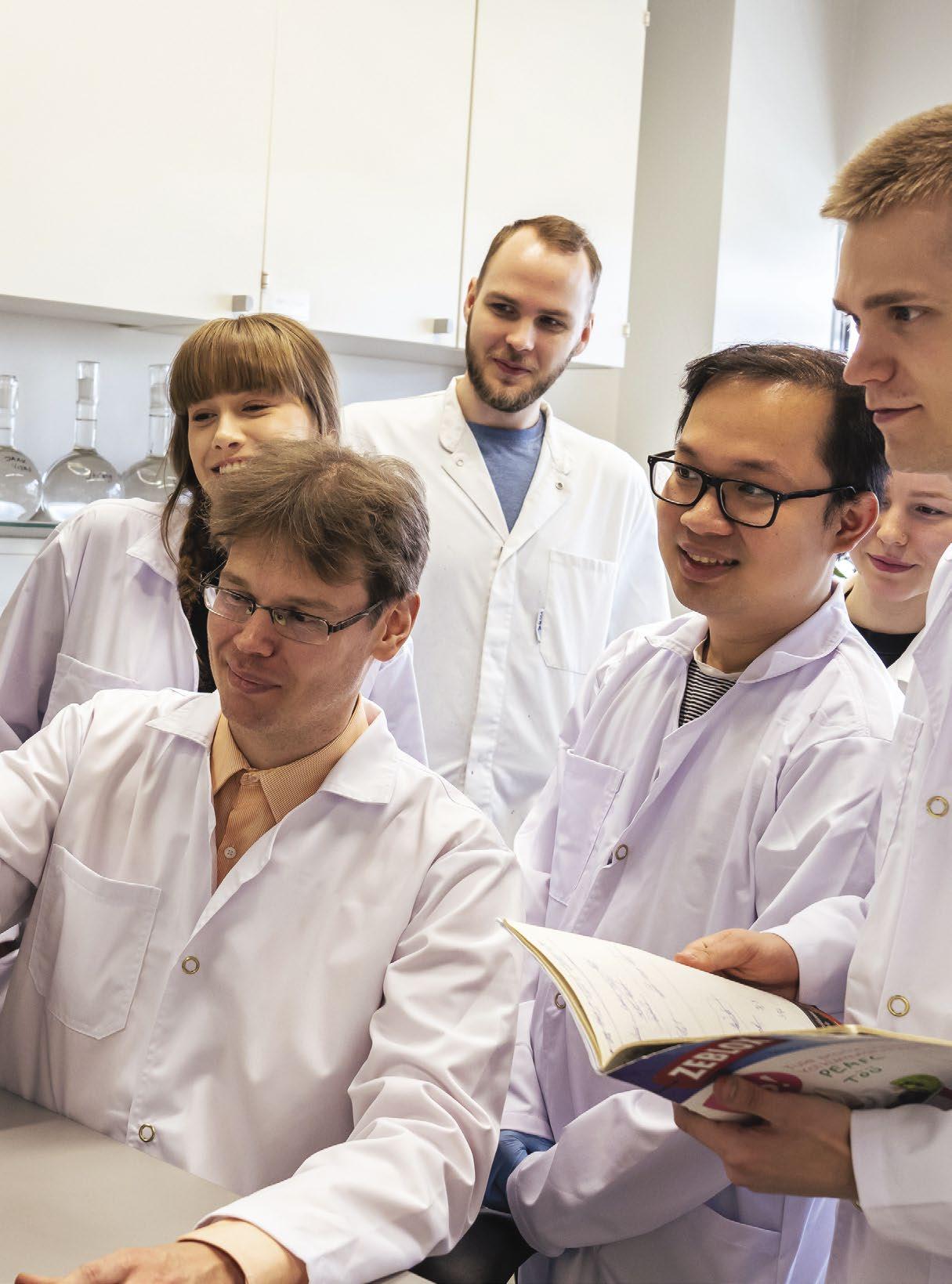
Centres of excellence breathe new life into the energy sector
By Sven Paulus
Estonia’s education and research minister Kristina Kallas recently decided to allocate 70 million euros over seven years to 10 new centres of excellence in research. The first of these, the Energy Efficiency Centre of Excellence, works to renovate a large number of older apartment buildings, home to half of Estonia’s population. The second such centre will focus on the development of advanced equipment for hydrogen and energy production and storage to bring about a hydrogen revolution.
LIFE IN ESTONIA N o 62 35
Photo

In Estonia, 52% of final energy consumption takes place in residential buildings, which is disproportionately high compared to the energy demands of other sectors and could allow for the most savings. There is no need to look far for the reason: in the second half of the last century, housing estates were built in towns and cities with no emphasis on energy saving.
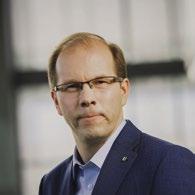
Jarek Kurnitski, professor of energy performance and indoor climate in buildings at Tallinn University of Technology and head of the Centre of Excellence in Energy Efficiency, says that fully renovating the existing housing stock would solve one of Estonia’s biggest societal challenges. Currently, nearly 70 percent of the total population lives in multifamily apartment buildings. In fact, half of Estonia’s population lives in older apartment buildings, i.e. those built before 2000, of which there are 14 000 in total.
“We are trying to bring together the best engineering, data and social science competencies in Estonia and look for feasible technological solutions, as well as social and urban planning solutions that will support the green transition and improve people’s quality of life,” says Kurnitski, outlining the goals of the centre of excellence.
Among other things, the centre’s multi-disciplinary research should provide answers on how to save costs when renovating buildings in order to renovate more houses with the same money. The social scientists involved in the work will, however, monitor the wider processes that the
state is already influencing and can influence through renovation and the subsidies it provides. Kurnitski mentions that the regional differentiation of renovation subsidies can have quite large effects on regional development. Ideally, it should be possible to give the aforementioned 14 000 apartment buildings a new lease of life by 2050, which means ventilation, insulation, etc.
Thirty years of extra time
Housing in the districts of Mustamäe, Õismäe, and Lasnamäe in Tallinn, and Annelinn in Tartu has stood the test of time even better than expected. Although they were designed to last for around 50 years, and today there are problems with corrosion of some fixtures, for example, balcony railings or staircases with awnings, the basic structures of these massive concrete-element buildings are in very good condition, according to Kurnitski: “We can maintain these buildings in such a way that their lifespan will continue for another thirty years and we can keep them that way as long as there is a need for them. These are very durable, long-lasting buildings, which are in active use and high demand on the housing market.”
The comprehensive and mass renovation of old residential houses is certainly an ambitious plan. Still, it also raises the question of how Estonia has managed to save energy in new buildings. After all, the minimum energy performance requirement for new buildings from 2020 is a Class A building or nearly-zero energy building, and from 2030 onwards, zero-emission buildings should be built. Thus, the centre of
Photo by Kaupo Kalda
36 LIFE IN ESTONIA N o 62
Õismäe
excellence aims to develop technology for zero-emission buildings with reduced energy use and improved emission performance.
Kurnitski explains that a recent study checked 104 new apartment buildings built in the last year and their energy performance. Out of the total sample, only a few new buildings failed to meet the requirements.
“This has resulted in a situation where new buildings are significantly more energy efficient and have much lower heating costs compared to existing buildings,” praises Kurnitski, who says that Estonia’s new buildings are at the absolute top of the energy efficiency league compared to Finland, Sweden, and Denmark.
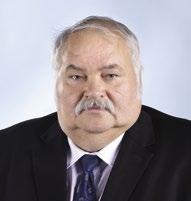
Towards self-sufficient energy production
The second long-term funded centre of excellence will focus on sustainable green hydrogen and energy technology and will bring together worldclass green energy technology research teams in Estonia. Its leader, Enn Lust, professor of physical chemistry at the University of Tartu, says that up to 180 people are involved, including PhD students. Their focus is on the development of novel high-density fuel cells, electrolysers, batteries, supercapacitors, thin-film and explosion-proof hydrogen storage devices, efficient light sources, and economical and cost-effective thin-film photovoltaic cells for integration into buildings.
“The hydrogen produced at the centre of excellence will be used for research experiments. One of the ideas is to offer it as a fuel to contractors developing self-driving vehicles or even drones based on fuel cells,”
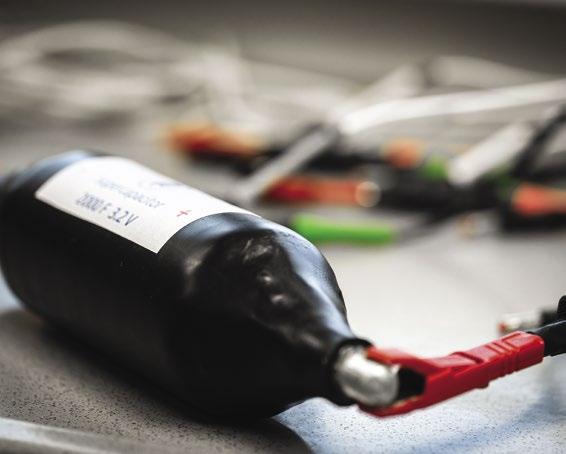

says Lust. The centre also aims to set up a demonstration centre where advanced hydrogen and energy production and storage devices can be shown. It will also work with companies to find ways to produce new equipment and bring technologies to market. A similar demonstration centre with a smaller capacity (although the systems are not fully built on-site) is already in operation at the University of Tartu’s main chemistry centre – the Chemicum – and is one of the only ones of its kind in the world.
“In the demo centre we will be able to show people how solar energy can be harnessed so that electricity is available at night and on sunless days because we have intermediate storage batteries that, in their current configuration, are the equivalent of a Tesla travelling a good distance,” says Lust. Complex and practically independent of the external grid presence, the demonstration centre should provide ideas and inspiration for students, public figures, and decision-makers such as members of parliament. Self-sufficient power generation capacity is particularly needed in places where there are frequent power cuts, says Lust.
Looking at the developments of recent years, hydrogen could be the fuel of the future for Estonia. In the next few years, new filling stations are expected to spring up in Tallinn, Tartu, and elsewhere. There is currently a debate on whether to give hydrogen capacity to inter-island ferries. In all of this, Lust stresses the need to build offshore wind farms to harness green energy: “Basically, a worldwide analysis shows that offshore wind farms are 1.5 to 1.7 times more expensive to build, but once some are completed, their payback period is much shorter than onshore wind farms.”
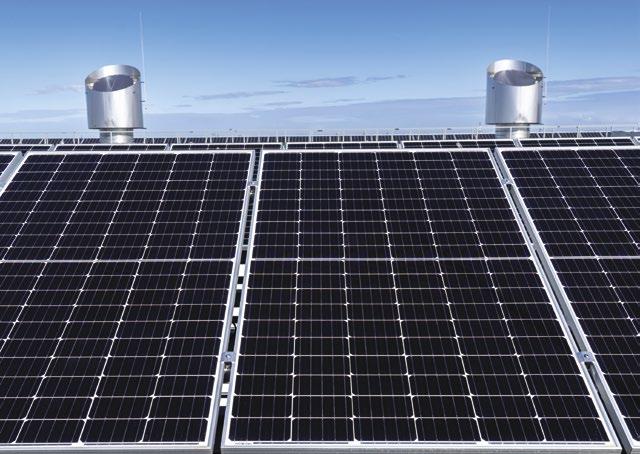
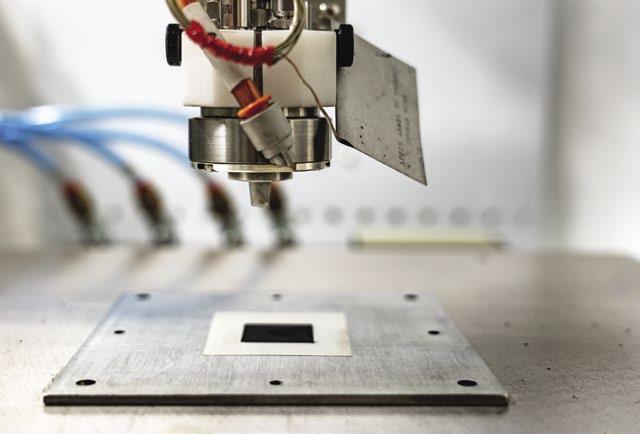
LIFE IN ESTONIA N o 62 37
Photos by Kaspar Koolmeister
Transforming mining waste to raw materials –greentech innovation in Ida-Virumaa
By Ann-Marii Nergi
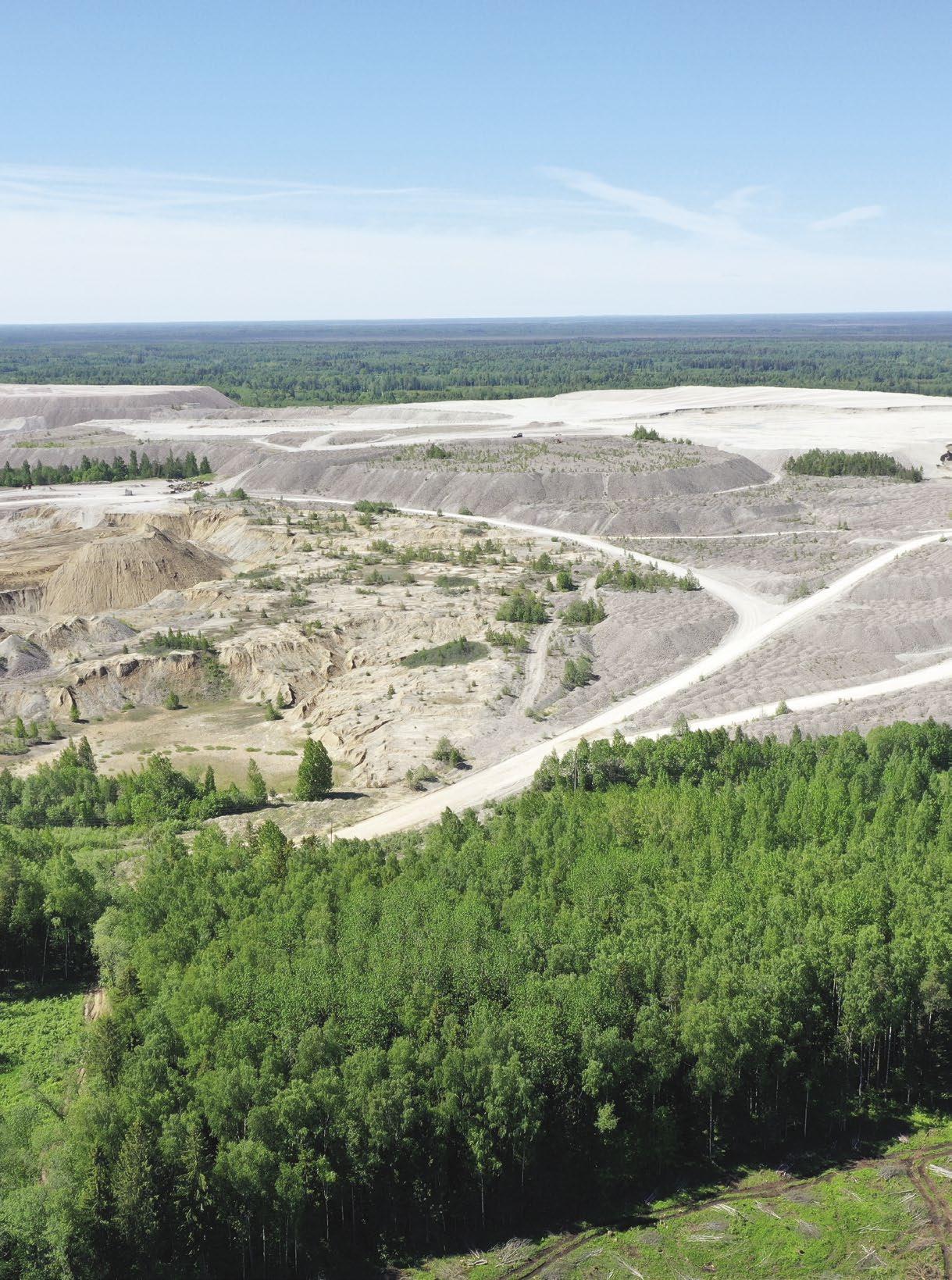
With the help of the Just Transition Fund, two companies – Ragn-Sells and Trisector –are investing in new technologies to recycle the mountains of waste originating from oil shale exploitation, such as mine tailings and power plant ash.
Photos by Trisector
What used to be mining waste in the past could be considered a valuable resource for the future.
38 LIFE IN ESTONIA N o 62

Trisector
core team: Mikko Hedman, Paavo Pettai, Aleksandr Snatkin, and Arnout Lugtmeijer
More than a pile of stones
“Waste is only waste if you waste it.” That’s the slogan of Trisector, and they mean it literally, because for them, waste is a recyclable material and the raw material for industries around the world. As a new greentech company, Trisector is developing an innovative process to upcycle mine tailings into secondary raw materials, for example, as industrial minerals for construction, road building, and agroforestry applications, and as functional fillers used in plastics, paper, paints, and sealants. As a result of decades of oil shale processing in Ida-Virumaa, there are massive ash hills and there really are huge quantities of mining waste –estimated at over a quarter of a billion tonnes.
Trisector is now looking to use these mine tailings to produce both coarse and fine industrial minerals and mineral fillers. The idea is to do this in partnership with Eesti Energia, which has significant mine tailings accumulated at its Estonia Mine – almost 150 million tonnes of “mining waste” that has been stocked up over more than 50 years. Arnout Lugtmeijer, founder of Trisector, says that the first phase of their plant will have a capacity of 1 million tonnes per year, but the plan is to increase this in modules to 5 million tonnes. Trisector is additionally investing almost 1 million euros to complete the development of an innovative technology for the refining of oil shale waste, of which 658 000 euros will come from the Just Transition Fund. However, the
planned investment for the construction of a full-scale production plant already amounts to 30 million euros.
This will also mean up to a hundred new, high-skilled jobs, but also work for many indirect partners. “As 90% of our production is for export (raw materials in Scandinavia and in the north of continental Europe –Germany, the Netherlands, and Belgium), logistics play a key role. In the first stage, we consider sea transport our primary export channel, but transport within Estonia will be by rail. With the construction and completion of Rail Baltica, we see a considerable possibility that rail’s export share to north-west Europe could also increase,” says Lugtmeijer.
“Throughout the entire logistics chain, it is important for us that things are done with the minimum footprint, and this will certainly be one of the key factors when making specific decisions. Our whole production and logistics process must help the consumers of our products to achieve ‹Scope3› impact, with the ultimate goal of reducing carbon emissions.”
Estonia is the first EU member state qualified to distribute Just Transition Fund resources. To help Ida-Virumaa with new investments and shift away from the oil shale industry, the European Commission is backing new and innovative businesses with a total of 340 million euros.
“ Waste is only waste if you waste it.”
LIFE IN ESTONIA N o 62 39
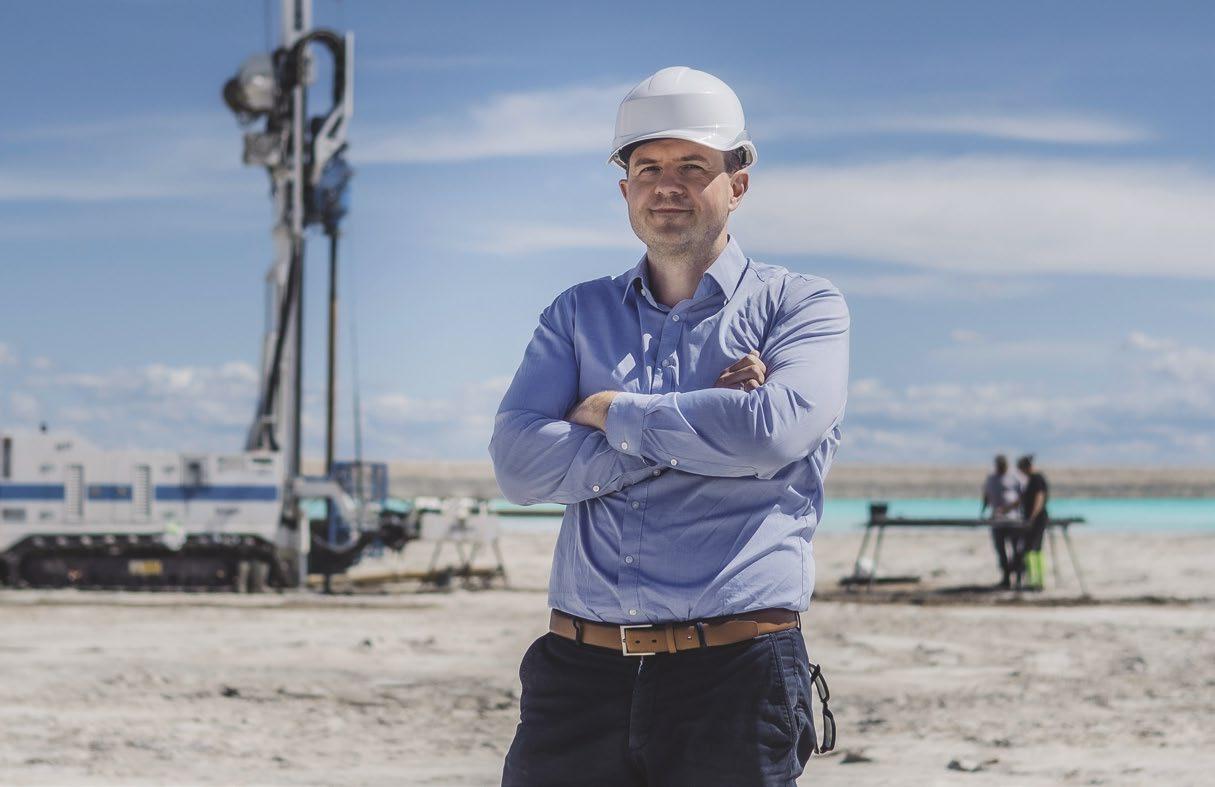
What a waste!
Another project concerning the ash hills, but also developing innovative technology with the help of the Just Transition Fund, is planned by Ragn-Sells, a privately held corporate group involved in waste management. Ragn-Sells’ subsidiary R-S OSA Service OÜ is setting up a demonstration plant in Ida-Virumaa to pilot oil shale ash valorising technology. They plan to extract calcium carbonate from oil shale ash, the leftover material from oil shale combustion, utilising a chemical method that cleanses the calcium from the pulverised ash, transfers it to an aqueous solution, and binds it with carbon dioxide derived from, for example, boiler dust, to produce calcium carbonate.
The total investment amounts to 10.3 million euros, of which 2.6 million euros will be the contribution from the Just Transition Fund. “The design of the demonstration plant is underway, and we are already bringing in specialists, as the plan is to have the plant up and running next year. A lot will depend on the results of the demonstration plant, but we hope that with planning and construction, the industrial plant will be operational in 2031,” explains Alar Saluste, member of the management board at R-S OSA Service.
Plans are optimistic because there are many sectors and products that need calcium carbonate as a raw material for their own production, ranging from the plastics industry to the food and pharmaceutical industries.
“We have already received feedback and proof from our partners that the new raw material produced from waste is of a quality equiv-
alent to fresh raw material, which can now be left unearthed, thereby significantly reducing the environmental impact and carbon footprint,” says Saluste. “As reducing the carbon footprint of end products is an extremely important issue that our future customers are already very strongly addressing, our product will enable them to make a significant step forward in the use of circular and low-carbon materials in their production process,” Saluste continues. “The immediate effect for us and for the European Union economy as a whole is that we will be able to bring a calcium carbonate to the market whose production will not cause any immediate damage to the environment – i.e. no new quarries will be opened, no additional cubic metres of soil will be excavated, and the huge amounts of CO2 emissions that inevitably result when calcium carbonate is produced conventionally will be avoided.”
The Ragn-Sells project aims to demonstrate that waste could be utilised to produce raw materials for everyday uses. Besides calcium carbonate, ash hills may yield other valuable raw material to be extracted in the future. “We will start with calcium carbonate and then move on to iron or magnesium, for example. Magnesium is in the top three of the EU’s list of critical raw materials, and in the future, we could cover 30% of the magnesium that EU industry needs,” Saluste concludes.
While there are many (re)uses, there is also a huge amount of oil shale ash in Ida-Virumaa – an estimated 500 million tonnes of it has been deposited there, which is enough for the Ragn-Sells industrial plant for about 300 years! So, according to Alar Saluste, there will certainly be enough raw material for future competitors. “This is a very strong new opportunity for the Estonian economy, if we handle this ‘waste’ in the right way. There is plenty of ash, sharing is not a problem, we are patient, and valorising this ‘waste’ in Estonia is important.”
Alar Saluste
by R-S OSA Service 40 LIFE IN ESTONIA N o 62
Photos
 Madis Raukas, head of the Applied Research Programme at Enterprise Estonia
Madis Raukas, head of the Applied Research Programme at Enterprise Estonia
Waste recycling is a clear trend in Estonia and worldwide. The companies Trisector and Ragn-Sells, which are developing technologies for the reprocessing of oil shale waste, are good proof of this trend. The valorisation of local resources is also an important strategic direction for the country and has great potential in commercial, as well as wider social and environmental, terms. The Just Transition Fund aims to increase the knowledge
intensity of companies and support the creation of modern and smart industry in Ida-Virumaa. Such development projects will play an important role in this.
To boost the development of new and knowledge-intensive technologies, Estonia has also set up an applied research centre, currently supporting a limited number of topics. Applied research centres, in general, help companies to carry out laboratory measurements, create prototypes, carry out simulations, test smallscale production first, and develop processes to bring a new technology to a mass-production scale.
The Just Transition Fund (JTF) is a financing mechanism of the European Union, the purpose of which is to support the economy, people and environment in those regions facing significant socio-economic challenges in connection with achieving climate neutrality. In the case of Estonia, the resources of the Just Transition Fund are directed to Ida-Virumaa.

LIFE IN ESTONIA N o 62 41
R8 Technologies’ AI tackles climate change
By Ronald Liive

Technologies
Photos by R8
42 LIFE IN ESTONIA N o 62
R8 Digital Operator Jenny

R8 Technologies’ data-driven human-centric AI helps commercial real estate across Europe to be more energy efficient, reduce its carbon footprint, and save customers money.
Artificial Intelligence (AI) has long been a buzzword, while at R8 Technologies it’s a reality, with tangible benefits for commercial real estate. Unlike many conceptual AI projects, R8 Technologies’ data-driven R8 Digital Operator Jenny (or R8 Jenny for short) represents a proven, human-centric AI solution. This pioneering technology not only promises but delivers enhanced energy efficiency, significant carbon footprint reductions, and meaningful cost savings. Already active across numerous properties, R8 Jenny exemplifies how targeted AI applications can transform the real estate industry by aligning economic gains with environmental stewardship.
R8 Jenny not only transforms the operations of those who use it but also contributes to broader sustainability efforts by helping to balance the power grid. Established just seven years ago, R8 Technologies has rapidly expanded, attracting notable investors from the Baltic, Nordic, and Central Europe regions, as well as from Japan, thanks to its impressive track record. The company has consistently achieved substantial growth, with revenues increasing by an average of 2.3 to 2.5 times annually.
With a client base spanning over 200 customers in 20 countries, R8 Technologies demonstrates robust effectiveness and trust in its AI solutions globally. Among its notable clients, Ülemiste City, the largest business district in the Baltics, has benefited from R8 Technologies’
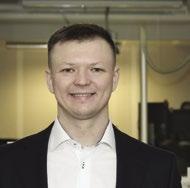
AI for several years. In 2022, this cooperation enabled Ülemiste City to achieve savings exceeding 194 500 euros. R8 Technologies co-founder and CEO Siim Täkker told Life in Estonia that customers typically experience a return on investment (ROI) within just 2–3 months, highlighting the swift and substantial financial benefits of their technology.
AI that helps fight climate change
From the very first day, R8 Technologies has concentrated its efforts on commercial real estate. Why this focus? According to Täkker, it’s because commercial real estate is a major contributor to climate change, responsible for about 20% of global CO2 emissions. This strategic focus allows R8 Technologies to target the sector where its data-driven AI solutions can make the most significant environmental impact.
“Reducing the carbon footprint and energy consumption of commercial real estate is not just important, it’s imperative,” explains Täkker. “With increasing legislation from the European Union and global mandates such as the Paris climate agreement and the Energy Performance of Buildings Directive, there is a pressing drive to diminish energy usage and environmental impact across the sector,” he adds.
The EU legislation referenced by Täkker mandates significant reductions in energy consumption across commercial real estate by 2035, with targets varying by country; in Estonia the target is a 16% reduction. This
LIFE IN ESTONIA N o 62 43
Ülemiste City
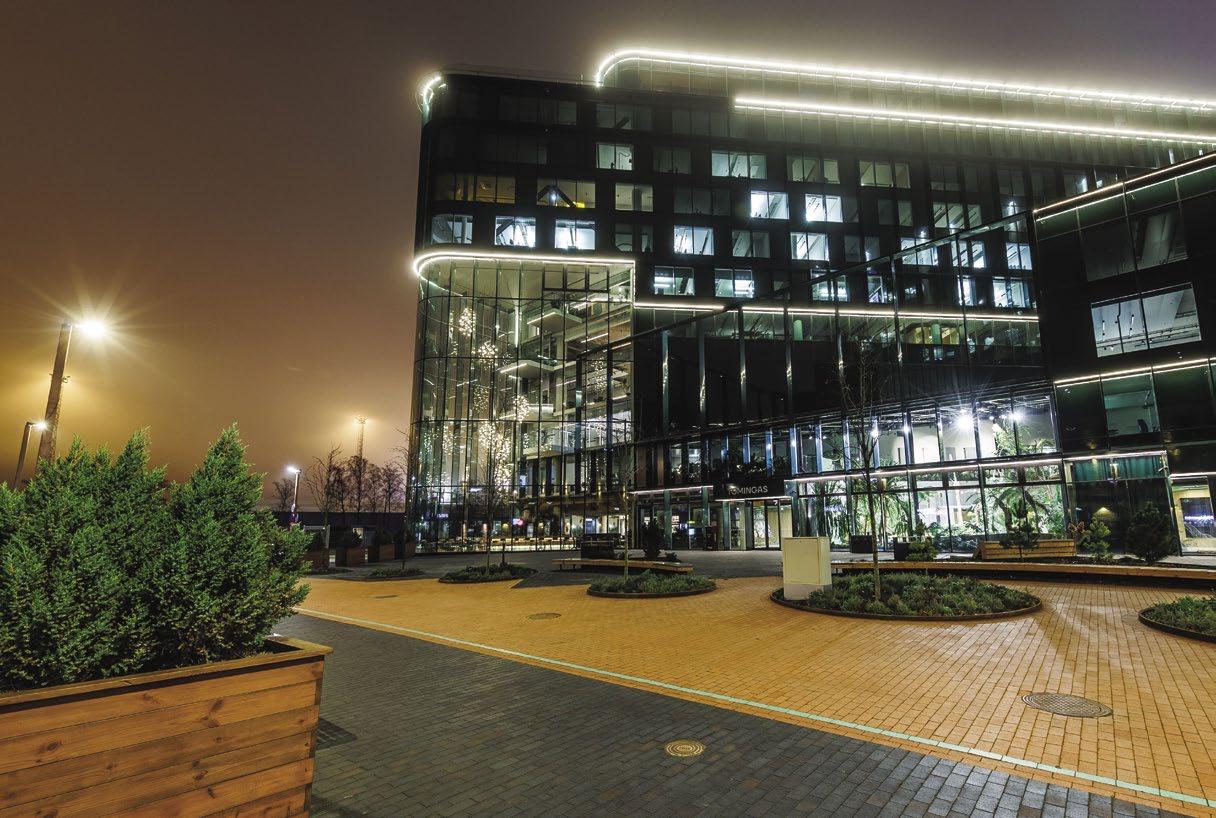
is part of a broader initiative aimed at achieving carbon neutrality in the commercial real estate sector by 2050, aligning with global efforts to mitigate climate change impacts.
A crucial factor in achieving these sustainability goals is the digitised infrastructure supported by AI-driven solutions. R8 Technologies’ systems operate entirely without the need for additional hardware installations. Täkker notes that their advanced AI is capable of significantly reducing a building’s energy consumption and costs – by as much as 20% or more on average – through Building Management System enhancements alone.
“The return on investment for our solutions averages just two to three months,” Täkker explains. “Not only can our technology significantly reduce CO2 emissions, but it also delivers substantial financial returns for our clients.”
Täkker highlights R8 Technologies’ deep commitment to advancing AI technology, noting significant investments in research and development. The company has contributed to the field through several scientific articles focused on human-centric AI solutions for commercial real estate.
“Human-centric AI is fundamentally explainable and adaptive,” explains Täkker. “This approach ensures that every action the AI takes is transparent to stakeholders, and it customises its functionality to accommodate the specific needs of each building and the preferences of its users or tenants.”
But what exactly is R8 Jenny? R8 Jenny is a sophisticated solution created by R8 Technologies to optimise heating, ventilation, air conditioning (HVAC), and other aspects of indoor climate management. By making
micro-adjustments to system settings, R8 Jenny effectively reduces both energy consumption and operational costs, streamlining building management with precision.
“I often compare it to a piggy bank – the AI meticulously collects every free cent at every opportunity,” says Täkker. “With each tiny adjustment it makes, the savings accumulate. By the end of the month, these ‘cents’ can total up to thousands, even tens of thousands of euros in energy cost reductions.”
Systems that need to talk to each other are taught the same language
A key challenge in commercial real estate, which R8 Technologies is addressing, is that large structures such as office buildings, shopping centres, hotels, and airports often have HVAC systems that operate in isolation. These systems typically lack the capability to communicate or synchronise with one another, leading to inefficiencies and increased energy consumption.
According to Täkker, HVAC systems in large modern commercial buildings are incredibly complex, comprising thousands, if not tens of thousands, of controllable components such as pumps, fans, valves, radiators, and dampers. Each of these components can be individually regulated to optimise performance and efficiency.
The challenge with traditional HVAC systems in large buildings is that they often operate independently, following a basic set of static rules without communication between components. For example, if the temperature rises, a valve might automatically close, and vice versa. These
by Karli Saul
Photo
44 LIFE IN ESTONIA N o 62
The office building named after Alma Tomingas, the first female professor of Estonia, in Ülemiste City. Interior and exterior
systems lack the capability to learn from past data or predict future conditions, leading to inefficiencies and missed opportunities for energy conservation.
This is where R8 Jenny steps in to revolutionise the system. Acting as an additional software layer, R8 Jenny seamlessly integrates with all major HVAC brands like Siemens, Honeywell, and Strider Electric. Designed as a plug-and-play solution, R8 Jenny simplifies implementation – users simply grant access, and R8 Jenny takes over adaptively, considering each buildings uniqueness and enhancing the existing systems with advanced communicative capabilities that allow for more intelligent operation and energy management.
“R8 Jenny is compatible with all modern automation systems, thanks to our comprehensive suite of APIs and connectivity drivers, which we are continually expanding,” explains Täkker. “For outdated or legacy systems, we typically recommend retrofitting or updating the building management systems – a necessary step for modernisation. This ensures that every system can benefit from R8 Jenny’s advanced capabilities.”
The majority of R8 Technologies’ 200+ clients can utilise R8 Jenny right out of the box, with no need for additional hardware, thanks to its compatibility and easy integration. However, challenges arise primarily with
smaller buildings that lack an existing building management system or suffer from poor installation quality. These situations often require tailored solutions to leverage R8 Jenny’s capabilities fully.
Clients from across Europe
R8 Technologies serves a diverse clientele across Europe and, thanks to a strategic partnership with Panasonic, has expanded its reach to the Japanese market. Panasonic not only collaborates with R8 Technologies but also supports its endeavours as a key investor, reinforcing the strength and potential of this alliance.
“Today, R8 Technologies manages over 4 million square metres of commercial real estate across multiple countries,” says Täkker. “While we engage in direct sales, we also have a robust network of channel partners who independently distribute our solutions. Our primary focus has always been on supporting large real estate operators and owners. As our international property owners expand, we ensure our services evolve to meet their needs wherever they go.”
R8 Technologies is actively involved in several rollouts across different countries, including a significant project with Citycon, which owns major shopping malls in Estonia. This collaboration extends to Citycon’s Nordic
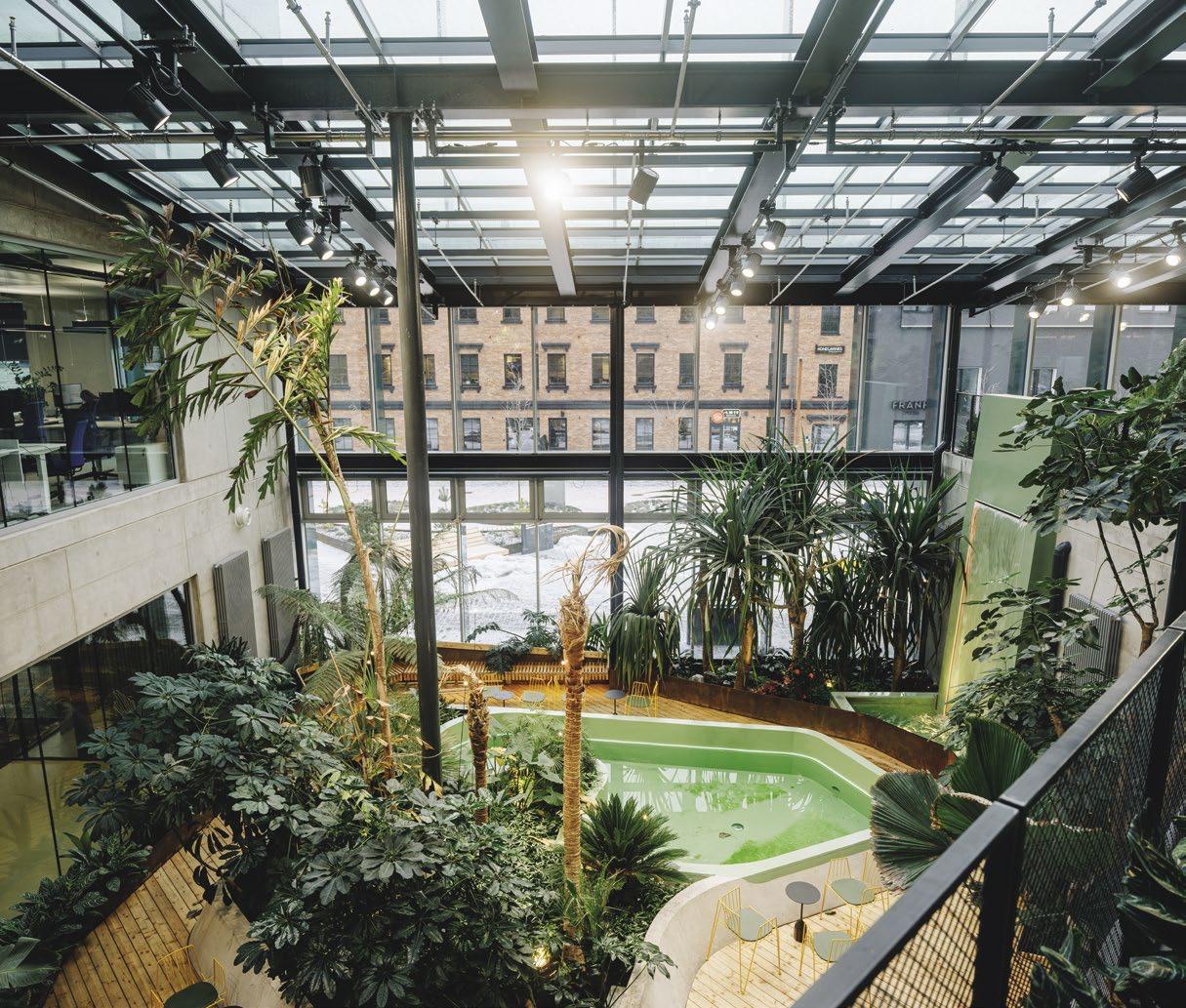
LIFE IN ESTONIA N o 62 45
Photo by Tõnu Tunnel

shopping centres, highlighting R8 Technologies’ ability to support largescale commercial developments in various regions. These initiatives demonstrate R8 Technologies’ commitment to expanding its reach and enhancing the efficiency of commercial real estate across Europe. When implementing R8 Jenny, customers initially set the parameters to suit their specific needs. However, the human-centric design of our system ensures that these settings are not fixed – customers can adjust the parameters at any time to better align with changing requirements or preferences. This flexibility is central to R8 Technologies’ approach, empowering users to maintain optimal control over their building environments.
“With R8 Jenny, we create a digital twin of the building, integrating all systems into a cohesive network. This allows the various components to communicate effectively with one another. Additionally, R8 Jenny is equipped with predictive capabilities, calculating the optimal time to adjust the temperature based on factors such as current electricity prices, weather forecasts, and expected building occupancy. This intelligent coordination ensures energy efficiency and operational effectiveness tailored to real-time conditions,” says Täkker.
For instance, R8 Jenny strategically manages heating schedules by turning off systems overnight when the building is unoccupied. Leveraging her advanced understanding of occupancy patterns, she ensures the heating is reactivated in time for the building to reach the desired temperature before occupants return. Additionally, R8 Jenny knows to avoid high electricity usage during peak times, contributing to grid stability and reducing energy costs.
Täkker points out that a key advantage R8 Technologies holds is the elimination of the need for additional hardware installations. This streamlined approach not only simplifies integration but also significantly contributes to the remarkably short return on investment (ROI) that clients experience.
Anyone visiting Tallinn Airport has directly experienced the capabilities of R8 Jenny, as it is one of the key facilities utilising the R8 technology. Across all its installations, R8 Technologies has made a significant environmental impact, reducing global CO2 emissions by over 66 000 tons, demonstrating the commitment to sustainability and efficient energy management.
Tunnel 46 LIFE IN ESTONIA N o 62
Photo
by Tõnu
by
Accelerating sustainable energy innovations
By Ann-Marii Nergi

EIT InnoEnergy, the leading innovation engine in sustainable energy, was ranked as the most active investor in energy last year. Now it is teaming up with Estonian cleantech accelerator Beamline.
LIFE IN ESTONIA N o 62 47
Photo
Silver Gutmann
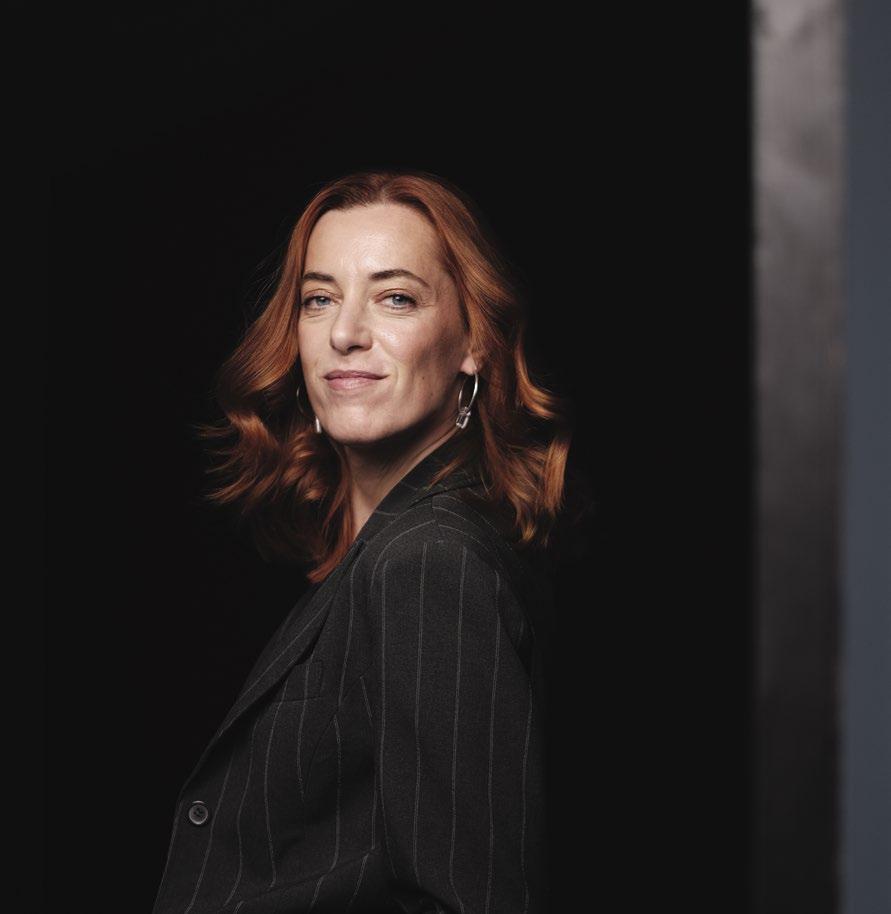
EIT InnoEnergy operates at the centre of the energy transition and is the driving force behind three strategic European initiatives which include the European Battery Alliance (EBA), the European Green Hydrogen Acceleration Center (EGHAC) and the European Solar Photovoltaic Industry Alliance (ESIA). It has a portfolio of more than 200 companies, which are estimated to generate 110 billion euros in revenue and save 2.1 gigatonnes of CO2 accumulatively by 2030. And although investing all across the globe, InnoEnergy has also been present and active in Estonia for many years now. Even before they had their own hub in Estonia, they had already invested in some of the companies founded here. At the moment, under their belt they have the supercapacitors manufacturer Skeleton; Hepta Airborne, which provides inspection solutions; and the latest one is a company called Beholder, which conducts remote sensing and AI prediction for mineral deposits, helping with the prospecting of energy-transition-critical raw materials and, for example, geothermal sites.
Szymon Kwiatkowski, EIT InnoEnergy investment manager, says that it probably won’t come as a surprise to anyone that the Estonian startup ecosystem is especially active and vibrant. “Estonian entrepreneurs did a terrific job with turning the theoretical disadvantage of a small internal market into a huge edge by adopting a global mindset from the inception of a startup,” says Kwiatkowski. “This is especially important in climate tech and energy transition technologies, since they often require a decent scale and the ability to partner across industries. How the energy transition ecosystem can be leveraged is the secret sauce of InnoEnergy, and I am a strong promoter of the idea concerning how a mix of that
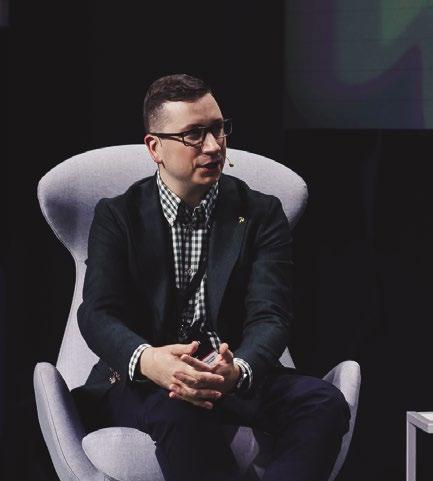
secret sauce and the Estonian entrepreneurial spirit could work perfectly together to make a great difference when it comes to adopting new climate technologies.”
Now InnoEnergy is cooperating with the Estonian-based accelerator Beamline. “Our cooperation will be focused on keeping our eyes open on emerging cleantech innovations in the Baltics that InnoEnergy can invest in and fostering relationships with local cleantech and energy investors and industrial players. Additionally, we will look to support our portfolio with business development activities in the region,” says Kwiatkowski.
Focusing mostly on cleantech, the Beamline accelerator has been around only for a few years and already shows significant results. Jana Budkovskaja, managing partner of Beamline, says that they have managed to show the highest level of survival, with over 90% of their portfolio companies continuing operations. “The best indicator of our portfolio’s performance is the sustainable growth of companies and the attraction of investments, because together, our startups have managed to raise more than 35 million euros in follow-on investment, which is a significant result. We believe that striving to align with global climate goals is only achievable with science, society, and money focusing together in one direction. That’s why Beamline has more and more deep-tech solutions and continuously grows its network of co- and follow-on investors,” she explains. “For the next five years, we are planning to invest and accelerate the development of at least 50 groundbreaking cleantech startups. Meanwhile, we will continue to nurture and con-
Photo by Silver Gutmann
Jana Budkovskaja
Szymon Kwiatkowski
48 LIFE IN ESTONIA N o 62
Photo by Anastassia Volkova

tribute to climate-related communities so they can grow and mature. From the fund perspective, we are working towards getting several really impactful ‘unicorns’ (or maybe ‘whales’) that would be super important for the planet.”
On cooperating with EIT InnoEnergy and just starting their hub in the Baltics, Budkovskaja says that Beamline’s aim is to leverage its established strengths to further enhance the innovation capacities of the Baltic states: “We currently have portfolio companies from 17 different countries, and we are focusing more on European startups, still remaining active in the Baltics, as long as it furthers the goal of connecting different communities. As the EIT InnoEnergy hub in the Baltic countries, we are here to provide startups in the energy sector with access to investments from top European funds and to help large corporations find innovative solutions that can change the future. We are proud to be part of a community that makes such a significant contribution to the development of energy in Europe.”
Budkovskaja adds that this goal resonates with the European Institute of Innovation and Technology’s (EIT) mission to drive sustainable growth and competitiveness through innovation. “Cleantech solutions are in high demand on the market, and close cooperation with already established companies and institutions helps to finetune the development, making it smoother and quicker.”
But what is so special about cleantech startups that they need a separate accelerator? Budkovskaja does not hide the fact that at the beginning investors were sceptical and called these kind of teams
“tree huggers”. But, for example, the team behind Beamline has been supporting and developing the cleantech sector for almost a decade: “We believed that private money could help the Green Deal, and as you can see, it has worked out very well. Cleantech is a revolutionising sector utilising a lot of breakthrough technologies. Having a focused accelerator enables concentration of the relevant knowledge and creates a boiling point for cross-sectoral cooperation.”
“Also, the maturing and exciting horizon of cleantech startups is longer than for general digital startups, and this is often because of the hardware component or the overall infrastructure – the framework of the legislation, processes, and market drivers. These are the challenges and they should be modified to allow cleantech solutions to enter the market,” she explains. “It means that cleantech accelerators and investors should be very knowledgeable about the upcoming trends, regulations, and politics. We are continuously a step ahead of the market by educating and funding cleantech startups and matching them up with relevant stakeholders.”
Kwiatkowski is also convinced about the benefits of teaming up with local partners: “Having a local renowned partner is crucial for building strong and long-term relationships. Those are important for InnoEnergy not only in the context of new startups joining our portfolio but also fellow investors in climate tech and industrials that could potentially partner and pilot with the early-stage members of the ecosystem. And regarding Beamline, I have a strong conviction that we are working with a fit-for-purpose team.”
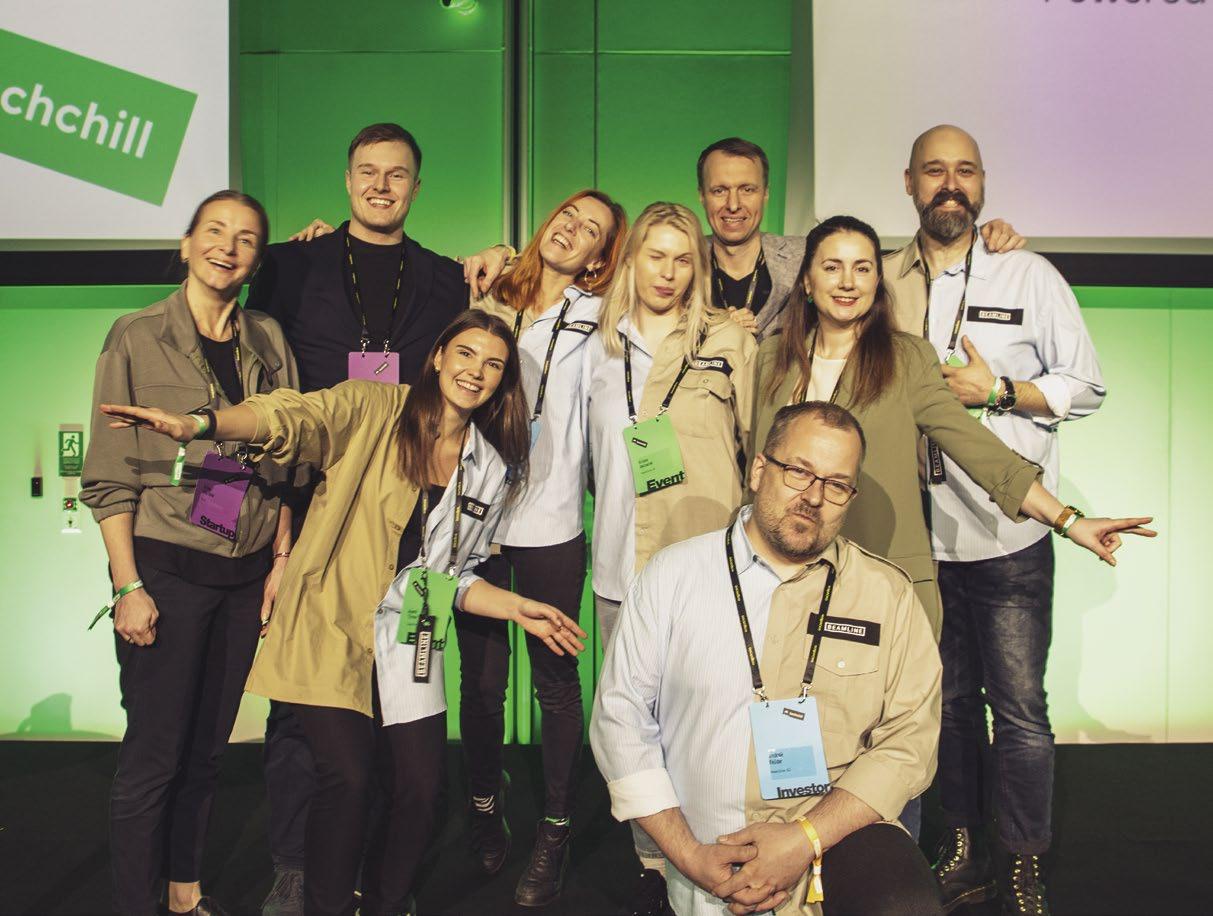
LIFE IN ESTONIA N o 62 49
Photo by Beamline
Pictures at an exhibition. A walk around Mauri Gross’ studio
By Triinu Soikmets

by
continues on p. 59
50 LIFE IN ESTONIA N o 62
Photo
Stanislav Stepashko
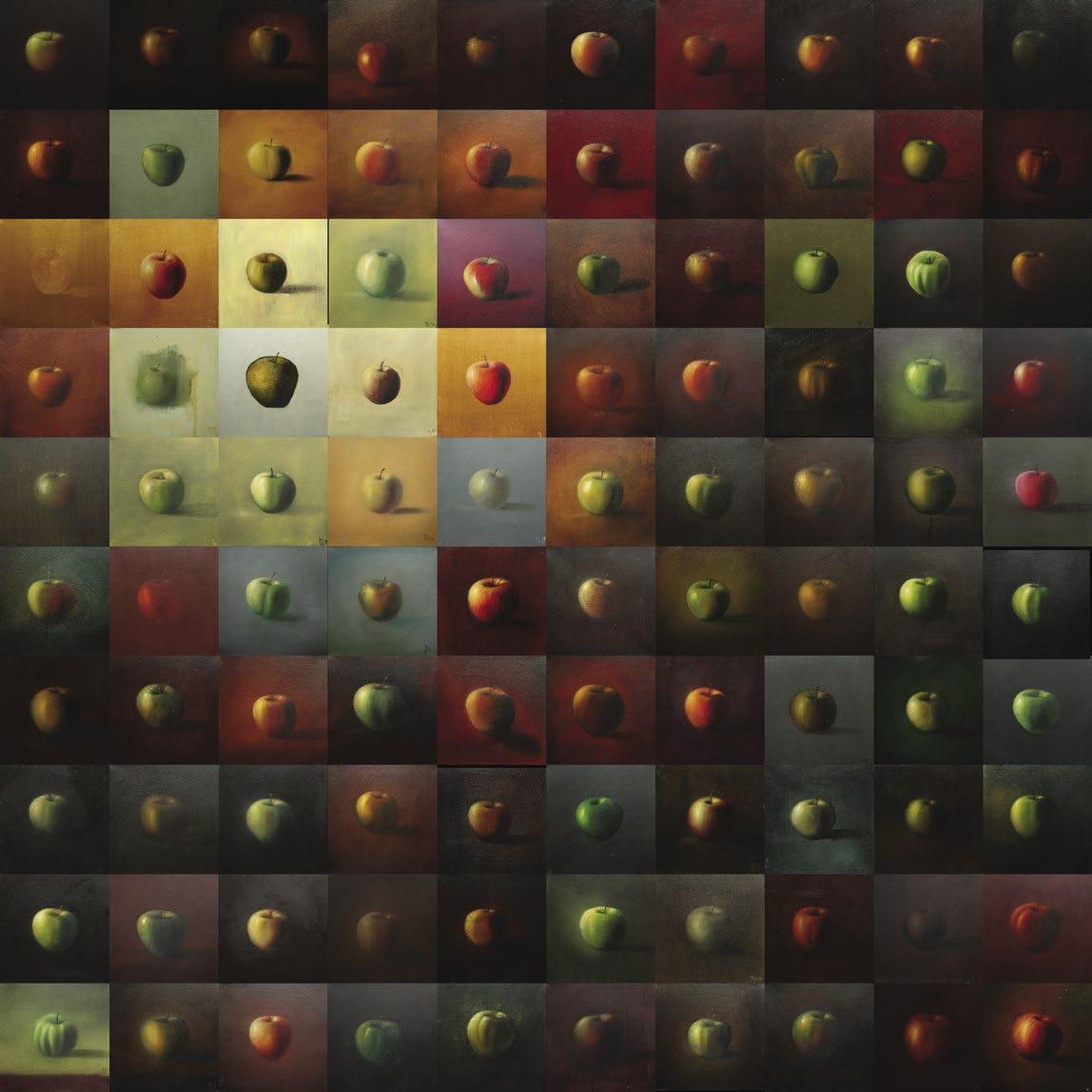
Portfolio Mauri
Gross
Work Field, 2014
51
Oil on canvas, 200 x 200 cm
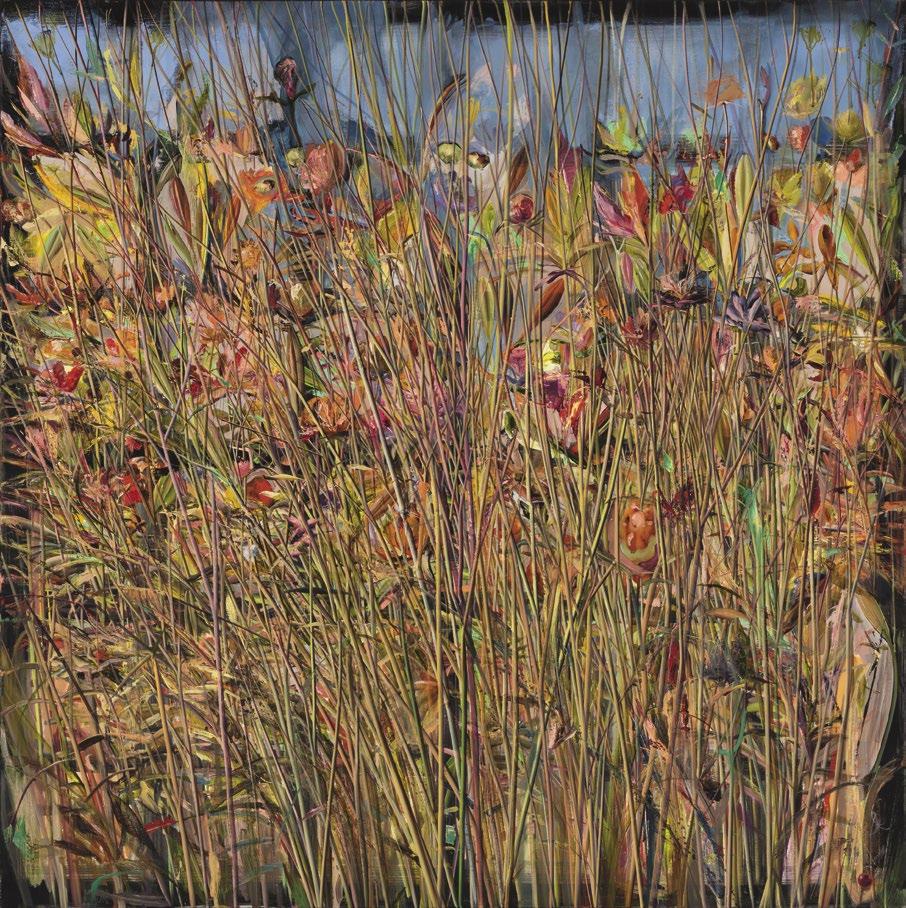 Family, 2022
Family, 2022
52
Oil on canvas, 124 x 124 cm
 Solstice, 2022
Solstice, 2022
53
Oil on canvas, 200 x 200 cm
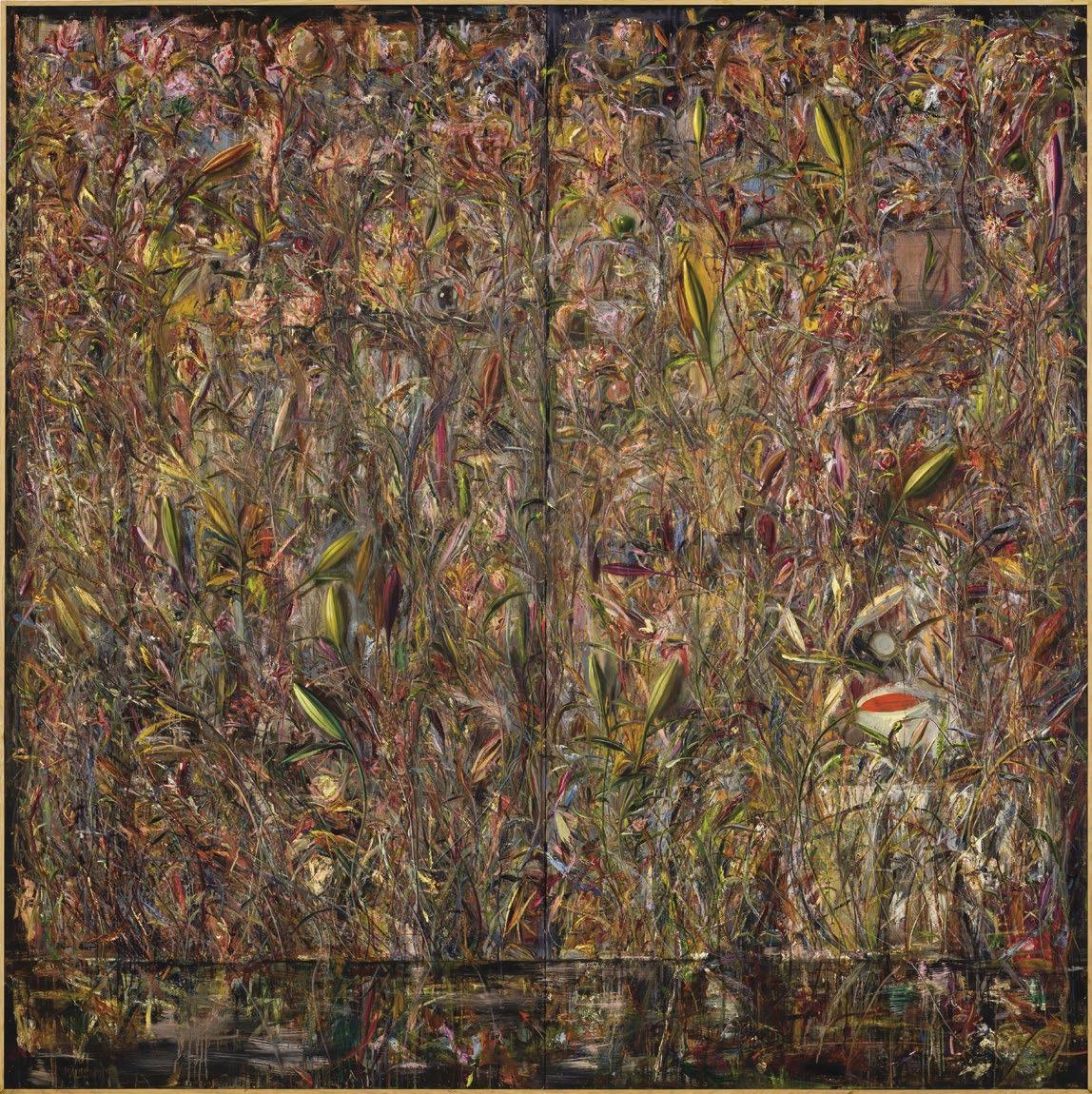
54
Confirmation Flowers, 2019 Oil on canvas, 200 x 200 cm

55
Camp Flowers, 2015 Oil on canvas, 200 x 200 cm

56
Fine Tuning, 2018 Oil on canvas, 88 x 88 cm

57
Gold is Fine in Any Weather, 2015 Oil on canvas, 200 x 200 cm
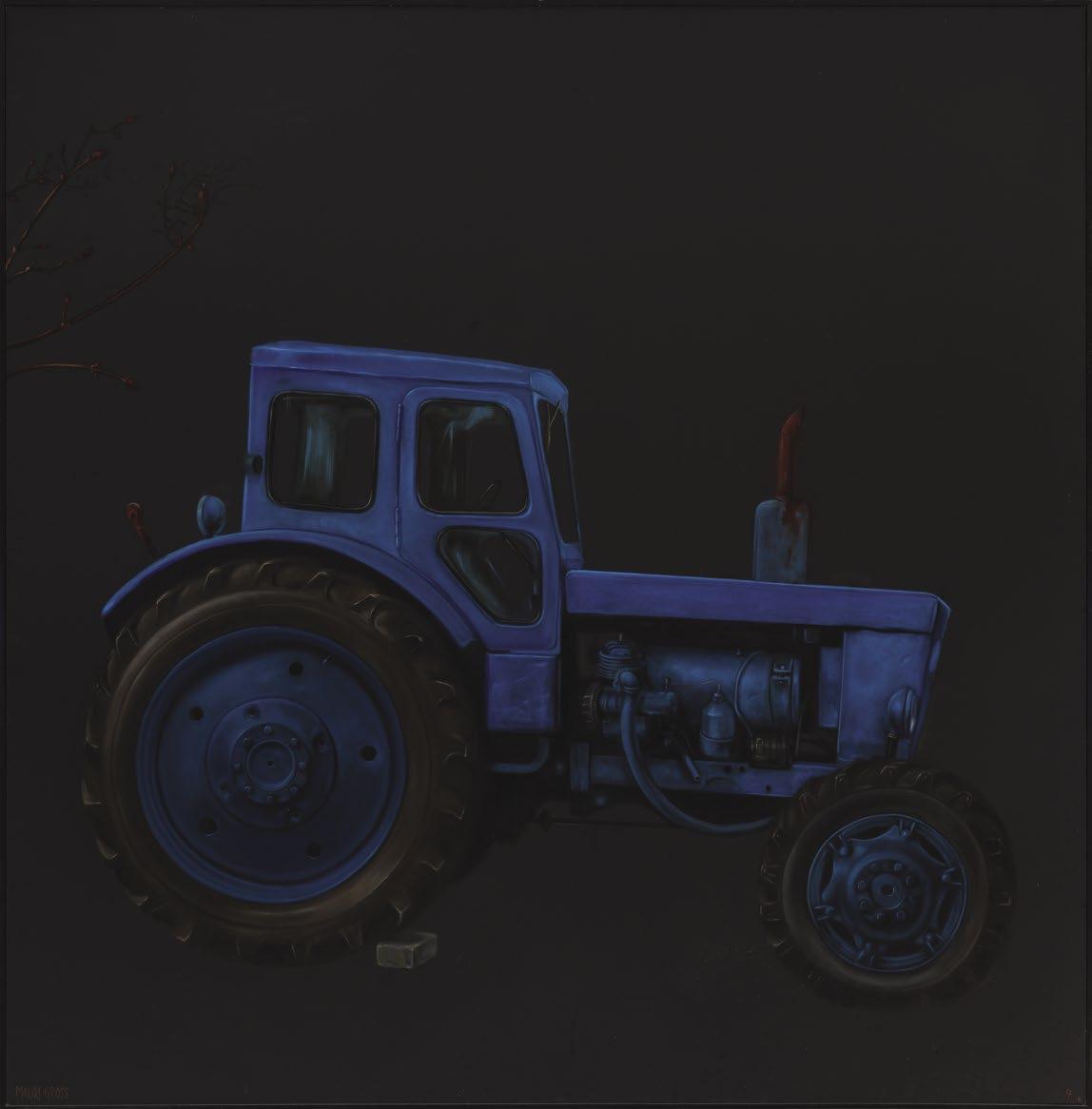 Belarus-blue, 2017
Belarus-blue, 2017
58
Oil on canvas, 200 x 200 cm
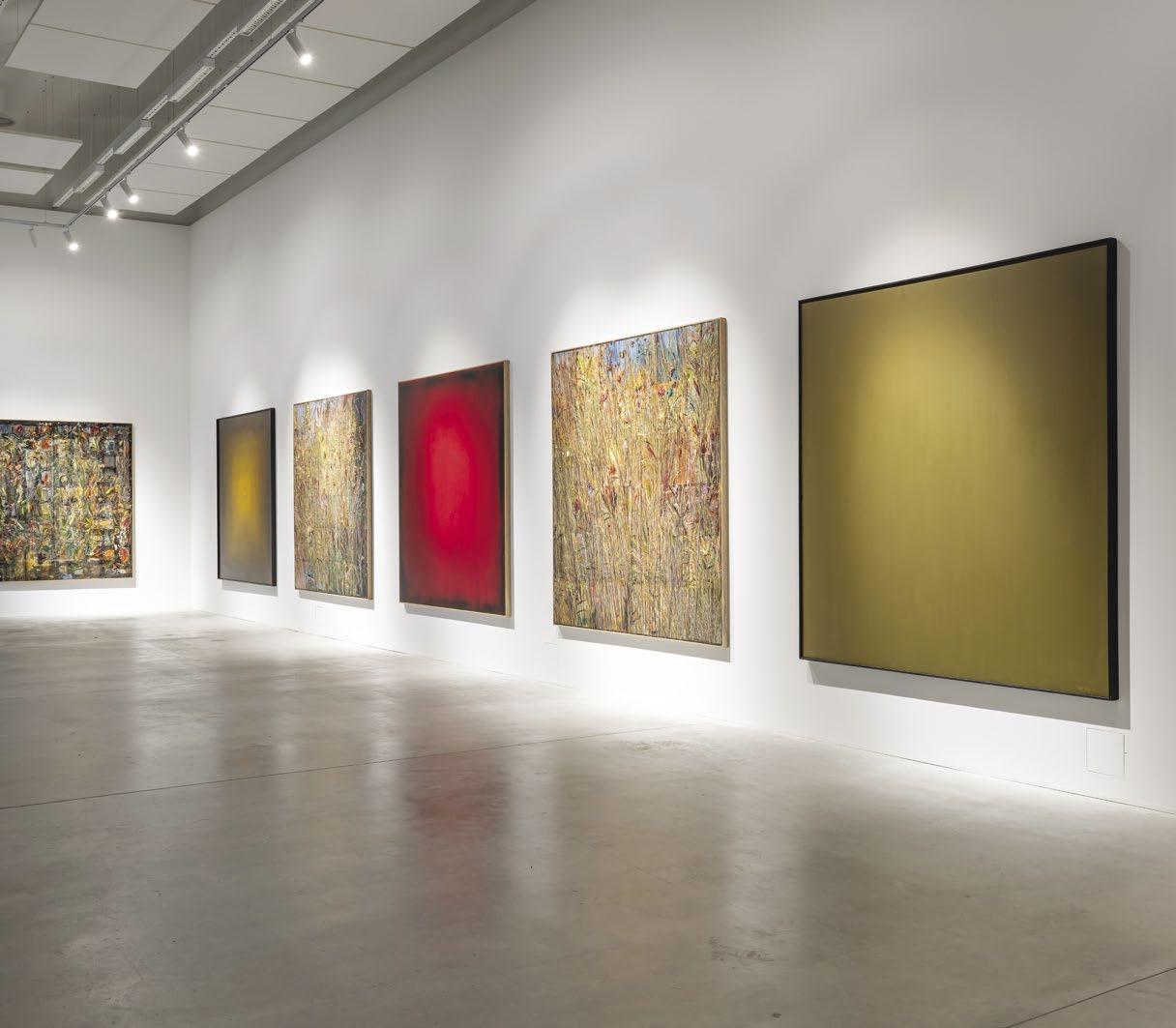
Modest Mussorgsky’s suite of piano pieces
“Pictures at an Exhibition” from 1874 is a walk amidst images painted with sounds. Today, 150 years later, it becomes a framework in the studio of artist Mauri Gross, amidst brushstrokes and the smell of turpentine. While Mussorgsky played with high and low registers to present opposing ideas, Gross has his own means of doing so.
Abstract from afar, filigree from up close, this is one of the contradictory keys to approaching the paintings of Mauri Gross. His trademark is the large format, which must be handled with the same skill as a miniature, but with the added consideration that any flaws are more visible. Combining a masterful technique, the philosophy behind it, and uncompromising craftsmanship, the result is a multi-faceted painting that, when viewed from different perspectives, creates a coherent whole.
“Format is like social order,” says Gross, citing the 1990s as an example of when this order also changed in art. Socialist realism was a thing of
the past, and performance, video, and digital print were on the rise. “But if you don’t master the format, it doesn’t speak,” he says, pointing out that change for change’s sake is hollow if it has no substance or aesthetic quality.
Indeed, Gross has remained faithful to a tradition of painting that goes back to the “Pallas style” of the 1920s, where the emphasis was on disciplined work, on finding a balance between warm and cold tonality, but also on light. Having worked as a scenographer, among other things, he is well aware of the importance of light and lighting.
“Daylight, general light, floodlighting,” he says in his studio, which is bathed in evening darkness, listing the factors that influence both the experience of a work of art in the exhibition hall and its creation. “You can tell with 99% accuracy whether an artist was right- or left-handed by the ratio of light to shadow in a picture,” he says. Some of his paintings also encapsulate the spotlight itself, as if composed of it alone. In contrast to this magical minimalism, which demands concentration, there is the exuberance of his “Confirmation Flowers” series, which brings us back to the theatricality of the stage.
LIFE IN ESTONIA N o 62 59
Photo by Stanislav
Stepashko

The view from his attic studio to the apartment building across the garden is a work of art in its own right – not only does it disappear into the evening darkness with the studio, but its windows are lit one by one. The scene is reminiscent of Mati Unt’s novel “Autumn Ball”, although, in fact, at the moment of our conversation, we have just welcomed the arrival of spring, which is the best time to paint in terms of light. Gross has also captured the changing of the seasons in his series “Solstice”, which reminds us that, in addition to the summer and winter solstices of Midsummer and Christmas, time also changes in spring and autumn. The same is true of the switch from morning to evening. Again, these are a couple of contradictions that Gross also reflects in his work. “Nature is ruthless, it is born and dies in turn,” he says, explaining the inevitable cycle of time and life through these opposites, which he witnesses daily in the garden view from his studio window.
Another unavoidable prerequisite for becoming and being an artist is, in his eyes, perception of religiosity, if only because a significant part of art history has been created in a sacred context – in the form of altar and ceiling paintings, portraits, and woodcarvings of saints. Without knowing and learning about such art history, without respecting the Creator’s legacy, one cannot be a creator.
“We live in a Christian cultural space without even realising it,” Gross says, summing up the idea. Not that he necessarily paints saints himself, but a certain sacredness is pervasive in his work. Also pervasive in his work are tiny blood-red cherries – he can paint them as a mass scene or as a detail, tucked into the worn pair of boots that symbolise the ever-present workspace of a common man.
In Gross’ eyes, painting is work that is serious and systematic in equal measure, in which discipline and order are inevitable, and there is no mystical evil or good spirit about it. He does, however, allow chance, or even fate, to intervene in his work; in other words, he does not give up when things go unplanned, but turns them to his advantage. For example, he was lifting another one of his large-format paintings with a minimalist motif through the window because he couldn’t fit it through the door. The painting, however, caught the wind, turning into a sail, and flew off and landed in a tree, ripping a hole in the canvas. Gross accepted this natural intervention, dragged the painting down with its new hole, and put it on show with this new feature anyway. The large mustard-yellow painting with the tiny hole is titled “Gold is Fine in Any Weather”, and it remains his favourite to this day. He will never sell it.
60 LIFE IN ESTONIA N o 62
Photos by Stanislav Stepashko
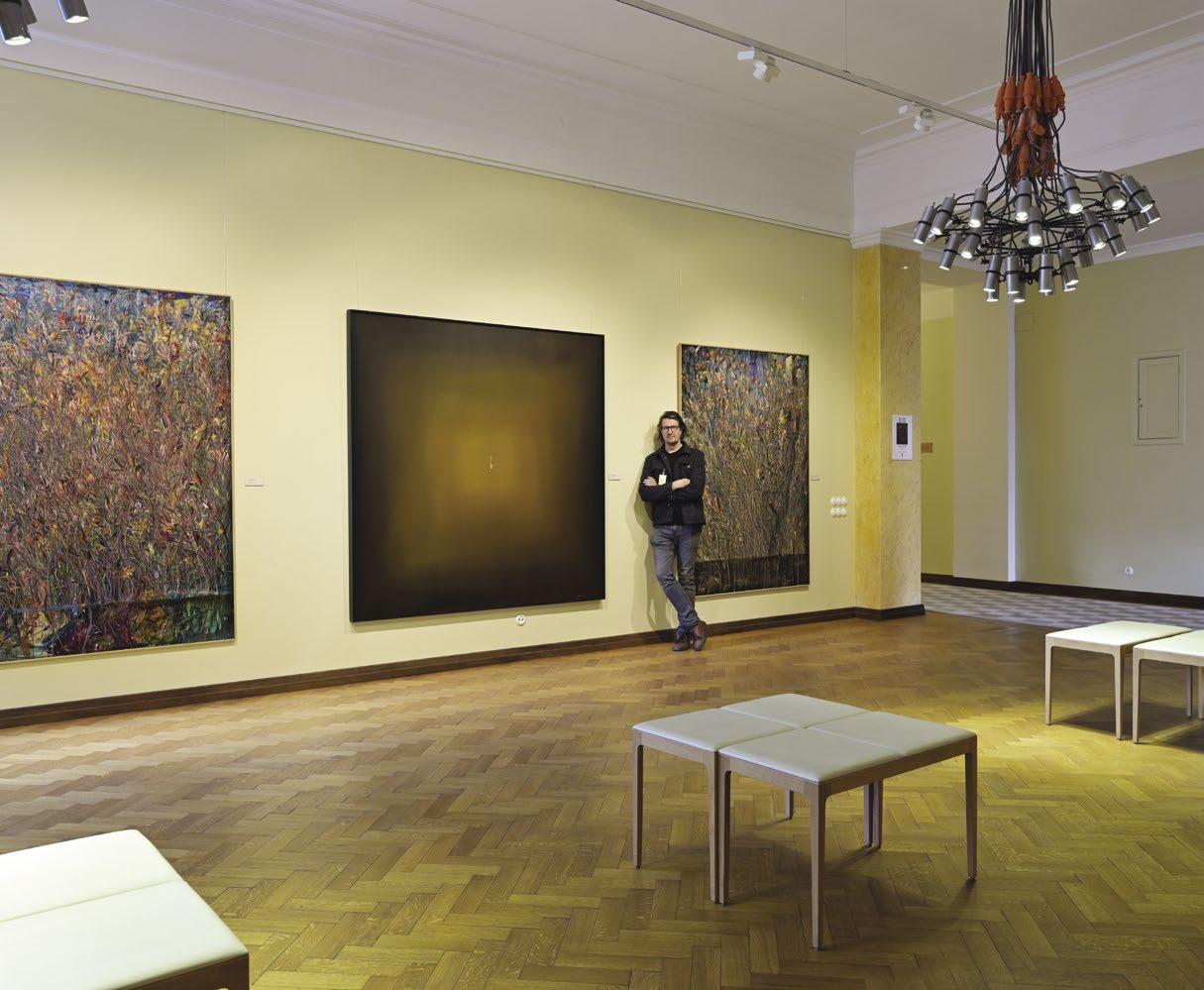

In addition to cherries, Gross’ serial creations are inspired by plants, blades of grass, bushes, and canopies, which he also draws from his own garden and from nature in general. Although his paintings appear to be photorealistic, he does not paint directly from a photograph, as he would consider that retelling a story. And, as always, he is captivated by contrasting colours, such as the contrasting red branches on a green background. In turn, both the painter and the viewer can get caught up in the structure of the grasses, creating a kind of optical illusion and seasickness effect. The symbolic and formal beauty of all kinds of vegetation is also reflected in his new series “Vegan Salute”, which speaks to the fact that even if you ban fireworks in the city, you cannot ban beauty. “A title won’t save a bad piece of work, but a catchy title helps the viewer to make sense of its content,” he hints.
Going straight back to the beginning, to the format of art, Gross admits that in his twenties he too had to make choices and reorient himself in changing circumstances. At that age, perhaps all a painter has to do is gather experience and baggage, search for and formulate his own principles, which he can only begin to refine later. “Art is an occupation for the second half of life”, he says, beautifully concluding our walk around his studio and his thoughts on the human life cycle itself.
LIFE IN ESTONIA N o 62 61
Vegan Salute, 2020 Oli in canvas, 200 x 157 cm
E-Residency turns 10
By Justin Petrone

On the verge of its 10th anniversary, the e-Residency programme is moving towards significant upgrades, the biggest of which are moving past the physical ID card and a solution for remote identity verification. As befits a birthday, let us take a quick look at how it all began and what the future holds.
Photos by Tanel Meos
62 LIFE IN ESTONIA N o 62
From concept to global success
Co-founder Ruth Annus chronicles the origin story of Estonia’s e-Residency programme.
It took only one year and a handful of people to make the Estonian digital success story truly global. “I’ve always aspired to amplify Estonia’s global presence. As a digital society, we invite people to join us and use our know-how to create an e-society for a better future for the whole world,” Ruth Annus explains.

The birth of e-Residency
While e-Residency seemed a novelty when it launched in December 2014, Ruth says the foundational bricks were already well in place by the time a vision of a global network of e-Estonians began to form. Estonia had created a digital identity more than a decade prior. Estonian citizens and foreign residents already enjoyed the benefits of a rapidly evolving and trailblazing digital society, so why not extend it to the world?
“It’s hard to move from one country to another, even to move around inside the country,” says Ruth. “If our society is already digital and services do not depend on time and place, why require people to move around when we could make our e-society available wherever they are?” Thus, the concept of e-Residency was born.
Ruth, now teaching law at the Academy of Security Sciences, is a former long-time director general of citizenship and migration policy at the Estonian Ministry of the Interior.
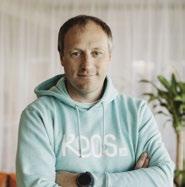
Together with Taavi Kotka, the Estonian government’s first-ever chief information officer, and Siim Sikkut, who was at the time leading digital government and digital policy within the state chancellery, she developed the idea of an e-Residency programme.
“When the right people happen to be in the right positions, innovative things can be done,” Ruth says.” The trio presented their idea as part of a national innovation contest held by the Estonian Development Fund and were announced as winners in May 2014, creating excitement with the public and the press. Months of preparations and legislation followed, and by autumn, the path was clear – Estonia would open up its digital gates for citizens of the world to enjoy.
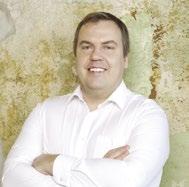
Reflecting on e-Residency’s evolution
Almost 10 years later, Ruth has seen and helped the programme soar. She is amazed by its success and can now look back and into the future with immense pride. “Estonia created a fully digital society from scratch. e-Residency is the cherry on top of this. And we are constantly thinking about how to go further. The sky’s the limit,” Ruth says.
Although not involved in the day-to-day operations, Ruth’s invaluable insights and expertise still propel the programme forward on a strategic level. She participated in developing the e-Residency 2.0 white paper in 2018, outlining possible future directions that the current growth strategy draws upon. “We must be flexible in developing the programme,” Ruth underscores.
The programme’s cornerstone has, from inception, been solid risk management, which relies on thorough background checks during the application process. Both have come a long way since the beginning, becoming ever more sophisticated to meet the high level of security required by the state and the ever-growing global community. No one is automatically granted the right to e-Residency — obtaining e-Residency is a sign of trust and an opportunity for a person to partner with Estonia, so that we can make each other more successful through digital entrepreneurship,” Ruth says.
LIFE IN ESTONIA N o 62 63

Liina Vahtras: Leading e-Residency into a cardless decade
When you think of 10-year anniversaries, you might think of cake and champagne, but Estonian e-Residency’s managing director, Liina Vahtras, is setting her sights on new horizons for the programme’s second decade.
Liina took the reins of the e-Residency programme last summer, pledging to elevate the customer experience of e-residents while overseeing ambitious technological development. Liina also set out to achieve growth in key markets for e-Residency, which turns 10 years old in December.
E-Residency has allowed more than 100 000 people outside Estonia to access the digital nation’s ecosystem of services, with the main perk being the ability to open a 100% digitally run European company since 2014. “We want e-Residency to not only represent the best digital business environment in the world, but also stand for an opportunity to be inspired by the diverse community it creates and encourage entrepreneurs from all walks of life to build something different and impactful for both their own and Estonia’s future,” Liina states.
E-residents have joined from 185 countries, and the programme has developed its own community. But for any programme to thrive, especially with new competitors emerging, expansion and innovation are necessary. This is what Liina and the e-Residency team have been working towards.
Driving identity innovation
Vahtras’ first line of business was to find ways to speed up access to e-Residency cards for new e-residents. This was important for more than just the sake of efficiency. Internal research shows that the faster e-residents get their encrypted cards, the more likely they are to open a business. One way to achieve this is by increasing the number of pickup points where e-residents can collect their digital IDs. Currently, there are 48 in 39 countries, mainly located in Estonian embassies.
Since Liina took over, the e-Residency programme has worked with the Estonian Ministry of Foreign Affairs and Police and Border Guard to allow consular missions to issue cards in seven additional European cities –Barcelona, Frankfurt, Munich, Milan, Edinburgh, Zurich, and Lviv – as well as in Dubai, and a couple of South America’s biggest cities, São Paulo and Buenos Aires. “This is a big win for us because e-residents often have to travel quite far to get their Estonian digital ID, which requires biometric data collection on the spot,” she says.
For this reason, she is also piloting the programme through unprecedented technological innovation that will empower it for years to come. According to Liina, e-Residency is cooperating with other state agencies to develop the capability to allow remote verification of e-residents. This will, in the future, enable them to verify their identity and biometric data wherever they happen to be, rather than having to travel to an Estonian consulate or embassy to do so. Liina says this project has been underway for some time, and the programme is now on track to conduct a pilot project to ease the process of e-Residency card renewals by the end of 2025.
by Laura
Photos
Nestor
64 LIFE IN ESTONIA N o 62
Liina Vahtras
One bonus outcome of such a project is that Estonia’s physical residents would also be able to use the solution should the effort prove successful. “Not only would e-residents benefit, but all people living in Estonia would,” says Liina.
Toward a cardless future
The dream, of course, is to offer Estonian e-residents a completely digital alternative to the encrypted cards they have relied on since the programme was launched (it’s worth noting that all Estonian residents also rely on such cards). In February, the programme secured funding for an exploratory project that will involve the IT resources of the Estonian Ministry of the Interior in creating a fully digital and smart-device-based e-Residency alternative.
With a digital alternative, e-residents would also be able to start their companies as soon as they pass the background checks and are approved by the Police and Border Guard board. Their digital identity certificates would already be generated and ready to use before the card even gets shipped. All they need to do is visit a pick-up point to activate them. The goal is to reduce the time from hitting “submit application” to starting business activities to two weeks from the programme’s current average wait time of two months.
“If we could cut the card-to-customer journey by 50 days, we could gain 25 percent more e-resident companies,” Liina believes.
However, no plans exist to scrap the cards entirely because they must remain available as a backup. “Even if you use your e-Residency mainly
on your mobile device, you can rest assured that no document goes unsigned or deal postponed if you lose it or it breaks,” she notes.
Customer experience comes first
While these innovative projects proceed, Liina and her team are also working on other customer-facing improvements, such as a self-service portal where new e-residents can track their cards en route. The programme hopes to launch the portal in September.
As a cornerstone of the e-residents’ business services ecosystem, the e-Residency Marketplace will also be revamped this spring, with over 140 partner companies to choose from to assist e-residents on their journey.
“We are trying to support our e-residents any way we can: through information, resources, service providers. The aim is to build more substance for their business in Estonia -– so they would also contribute more economically here,” Liina says.
“By the way, there is artificial intelligence in the mix, too, “ she points out. One of the most frequent queries the e-Residency team faces is about taxation, and the programme is developing a tax bot that can answer e-residents’ questions as part of its customer support. The tax bot is based on ChatGPT and is currently being trained. It will provide general information, as well as links to local taxation service providers, and is scheduled to launch later this year.
 Photo by Marek Metsalaid
In 2014, British journalist Edward Lucas became the first Estonian e-resident
Photo by Marek Metsalaid
In 2014, British journalist Edward Lucas became the first Estonian e-resident
LIFE IN ESTONIA N o 62 65
E-Residency: A 10-year digital journey
May 2014
Taavi Kotka, Siim Sikkut, and Ruth Annus propose the idea of e-Residency.
August 2014
E-Residency gets the green light from the government.
October 2014
Over 5000 “pre-orders” for e-Residency within 24 hours of launch.
1st of December 2014
British journalist Edward Lucas becomes the first Estonian e-resident.
April 2015
E-Residency digital ID cards available to collect at Estonian embassies.
December 2016
15 000 e-residents have created 1000 Estonian companies.
June 2018
President Kersti Kaljulaid leads the e-Residency 2.0 initiative, which aims to hold a nationwide discussion about how to grow the programme over the next five years.
December 2018
50 000 e-residents have joined the programme.
January 2019
Rollout of the first version of the e-Residency Marketplace, a business directory of service providers to support e-resident businesses.
December 2019
E-residents have created 10 000 companies.
May 2021
E-residency available at 50 pick-up points across the world.
August 2021
E-residents have created nearly one third of all Estonian startups.
February 2022
E-residents have created 20 000 companies.

May 2022
E-Residency publishes a growth strategy, setting the stage for the next five years of development.
June 2022
Austrian e-resident Dominic Panosch breaks the record for fastest company incorporation at London Tech Week by registering his business sign online in 15 minutes and 33 seconds.
February 2023
Estonia has 100 000 e-residents from 185 countries around the world.
April 2023
The first-ever official e-Residency Envoys and Community Leaders were announced as part of e-Residency’s Spokespeople initiative.
December 2023
E-Residency has contributed over 200 million euros to the state budget.
May 2024
E-Residency launches a new and improved Marketplace with over 140 service providers.
2025–2026
Pilot projects for mobile e-Residency and remote verification.
June 2018
June
2022

by
Dominic Panosch set a record for fastest company incorporation online in 15 minutes and 33 seconds
President Kersti Kaljulaid led the e-Residency 2.0 initiative
Photo
Raigo
66 LIFE IN ESTONIA N o 62
Pajula
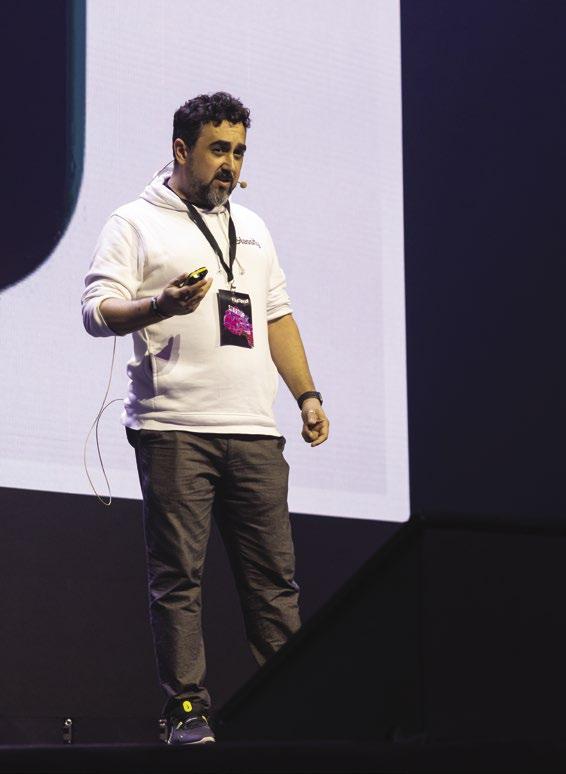
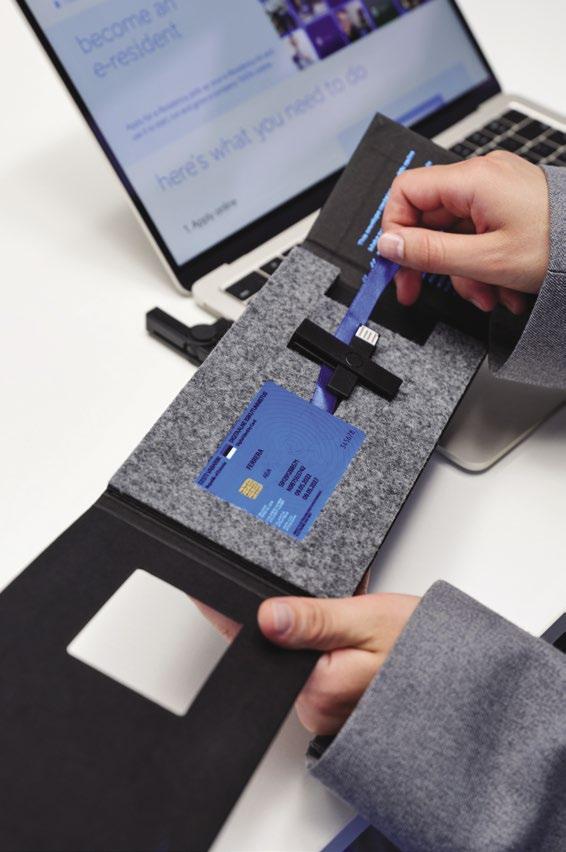
Where’s the paper?
Jose Ernesto Suarez Font – Ernesto for short – was initially sceptical about e-Residency. He learned about it when he and a colleague scouted locations for their latest venture. “I thought this was too good to be true,” says Ernesto, a systems engineer from Spain. Over time, though, he was won over by the programme and its benefits.
It’s been an eye-opening process. When he obtained e-Residency in 2018 and set up his first Estonian firm, called Wedoops, with Abu Dhabi-based French partner Pierre-Louis Raust, they still booked flights to Tallinn to handle the paperwork, only to find there was nothing to sign.
“We were just standing there, looking like grandpas,” he recalls. “Like, where’s the paper?” Instead, they returned to their hotel rooms and handled everything with their e-Residency cards.
Initially, Estonia was just one of several places on their list for starting the firm, but their first trip sealed the deal. “We were impressed by the startup community, the feeling of belonging, and how people helped each other. I come from the open-source world, and I really understand how powerful a community can be,” he says. While Prague, Berlin, and Barcelona – other cities where they considered setting up their business – are certainly much bigger than Tallinn, that size can make connecting with like-minded entrepreneurs more difficult. “Estonia has a small but efficient community,” he says.
Ernesto picked up his e-Residency card kit at the Estonian embassy in Madrid, as most Spanish e-residents do. He still had those nagging doubts though. “Even holding it in my hand, I wasn’t sure it would be enough,” he says. “They said we could do everything electronically and that we wouldn’t need to rely on accountants,” he recalls. “After I started using the system, I was really surprised.”
From Valencia to Tallinn
A year later, Ernesto even decided to relocate from Valencia to Tallinn. It was a big move for someone who admitted that Estonia really wasn’t on his radar until he obtained e-Residency.
He credits the Estonian government with making all of it possible and for taking the initiative to introduce a system that, as a systems engineer, he knew was technically possible but that nobody had done yet. “I had never seen anyone implement it, and I didn’t imagine that it could be implemented to such an extent like this,” he says. “So it has been a very good thing.”
Good enough, in fact, that Ernesto decided that his new company, Glassity, would also be incorporated in Estonia. “It also allows me to reinvest in my company, to invest in other startups, and in this way, to do innovative things.”
Just a year in, and the company is sailing along. Glassity can cut customers’ cloud costs by half without even touching the servers. It’s now looking to broaden the services it offers. The startup scene has helped, and Glassity has attracted investment from Estonia and Lithuania. The company also plans to open an office in Spain and expand to the US. “Estonia is an amazing place to be,” he says.
Jose Ernesto Suarez Font
LIFE IN ESTONIA N o 62 67
Photo by Adas Vasiliauskas
How to survive the arts in Tartu
The Tartu 2024 team could not have foreseen how prophetic the wording “Arts of Survival” would be when they selected it as the motto for the European Capital of Culture bid six years ago. The vibrant programme reflects the survival spirit of Estonia’s second-biggest town, aiming to attract one million visitors to events throughout 2024. While the programme isn’t filled with big names, it’s certainly bold. The university city invites people to a mass-kiss at the town hall square and to discuss democracy in the sauna, and it also sends a bus onto the streets completely covered in stickers.
 by Maris Hellrand
by Maris Hellrand

by Maanus
68 LIFE IN ESTONIA N o 62
Photos
Kullamaa
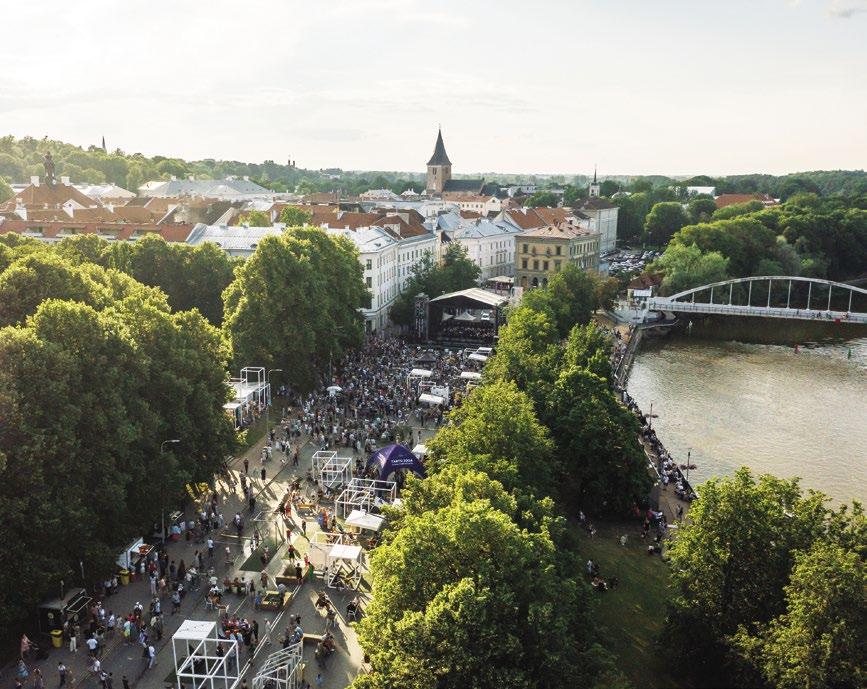
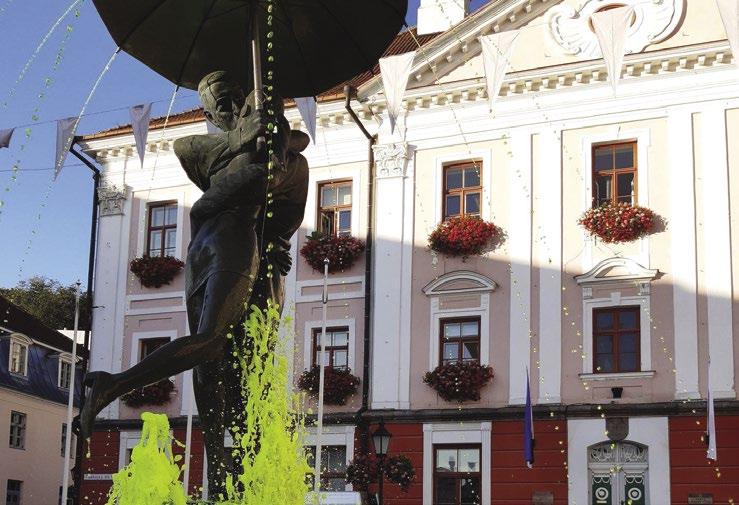
Oliver Berg, head of the programme line “Tartu with Europe”, elaborates on the concept: “The arts of survival encompass the knowledge, values, and skills that would help us live better in the future. It has been a prophetic mission, an artistic umbrella, because when we applied to become the European Capital of Culture, there was no global pandemic, no war in Ukraine, no hyperinflation.”
The nearly 400-year-old university dominates the town, with every fifth resident being a student. Berg acknowledges its
role: “Many primarily think of Tartu as a student city, and the University of Tartu is naturally a very important partner in our programme. The university is a significant employer in Tartu and, actually, in the whole of south Estonia. The University of Tartu is also the force that truly brings people together, young people from all over Estonia and beyond. Tartu hosts several thousand international students, making it a highly competitive university. The presence of the students, their contribution, and their vitality are certainly something that give Tartu its unique cultural spirit.”
EVENTS
6th – 12th of May
International literary festival “Prima Vista”
Writers, artists, academics, and culture enthusiasts from different countries take the stage to map out and interpret societal hopes and fears related to the future in the most expansive and diverse way.
10th – 11th of May
Naked Truth – sauna democracy
The world’s first opinion festival where sauna benches are the discussion stages. The goal is a nice get-together, promotion of sauna culture, and development of conversation culture based on the example of the sauna.
18th of May
Kissing Tartu
Free concert performance at Town Hall Square, which brings together various Eurovision Artists from Estonia and abroad. The culmination of the concert is a joint mass kiss by the spectators.
31st of May – 2nd of June
Kaera-Jaan
Art and dance celebration for the entire family. Folklore inspires you to sing, dance, and create straw art, and takes you on a magical theatre journey.
6th – 9th June
Estonian Fashion Festival
Showcases designers adhering to sustainable principles in an environmentally friendly way.
4th – 5th of June
“Tangent”, performance by Shiro Takatani/Dumb Type
The European premiere and the first new stage work in 8 years by Shiro Takatani to celebrate the 40th anniversary of the world-renowned multidisciplinary arts collective Dumb Type.
10th of June
Sting: My Songs
Legendary artist Sting at the Tartu Song Festival Grounds.
15th of June
“Forgotten Peoples”
Concert by Chœur de l’Orchestre de Paris, where French top musicians perform Veljo Tormis’ legendary choral cycle.
LIFE IN ESTONIA N o 62 69
Photo by Visit Tartu
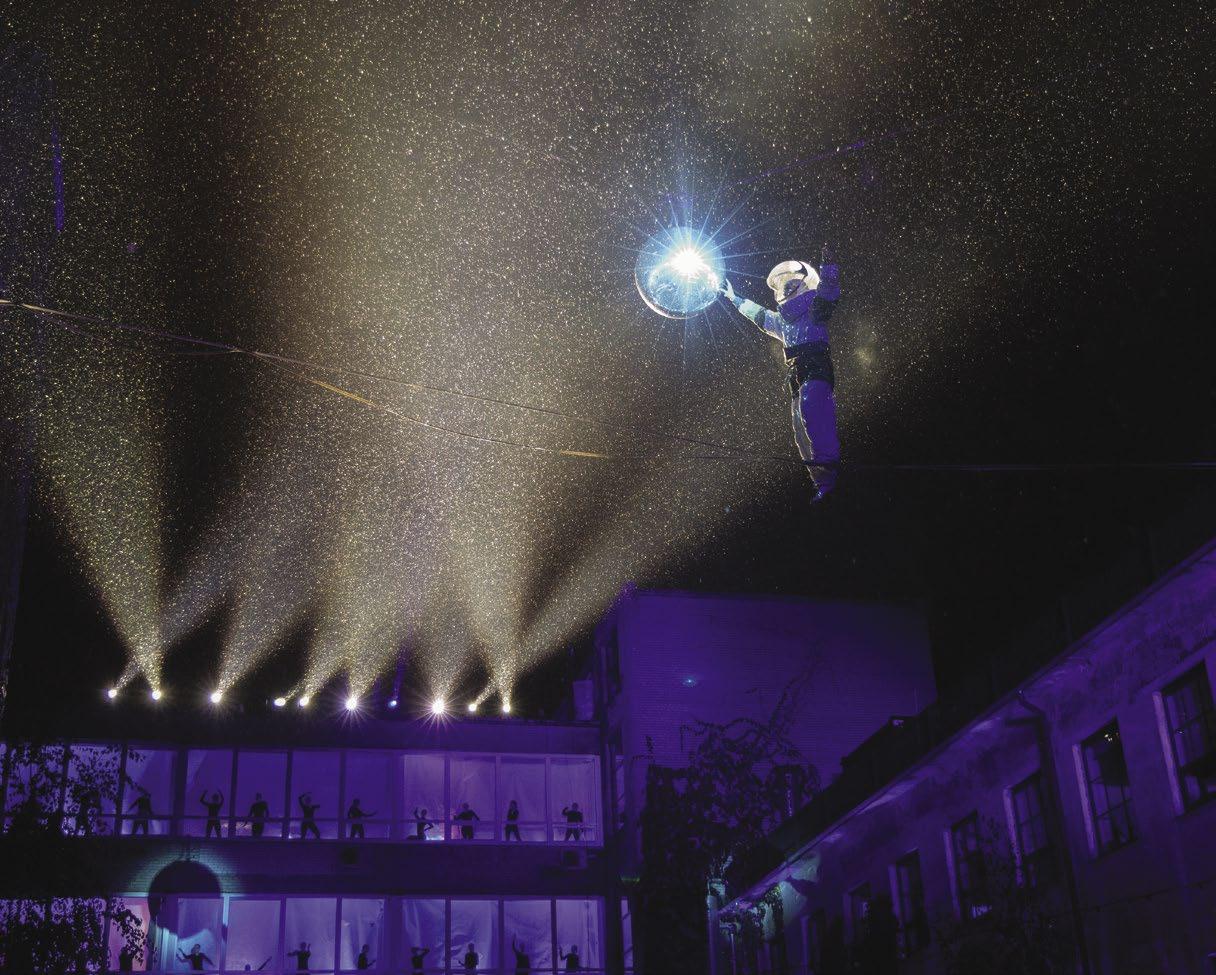
In front of the town hall, a pink-red building with a stucco facade, splashes a fountain. In its centre stands a sculpture: two people, tightly embracing, holding an umbrella. It’s called “Kissing Students” and it’s by the sculptor Mati Karmin. According to Kristel Jakobson, the sculpture captures the spirit of the city well. Inspired by the sculpture, the largest event of the European Capital of Culture will take place on the square. On May 18th, there will be a large public concert performance, which embodies themes of kissing, love, relationships, and is also dedicated to the 30th anniversary of Estonia’s first participation in Eurovision: Kissing Tartu. Thousands of people will then gather there and follow the example of the two students. Organiser Jakobson says: “It’s about so much more than just kissing your partner. With Kissing Tartu, we want to present a broader concept of love, tolerance, and respect.”
If you catch bus number 25, you might well find yourself embraced by a bold street-art
project. Sirla, founder of the Stencibility festival, has collected stickers from her street-art colleagues around the world and has turned a regular city bus into a moving artwork. In fact, everywhere in Tartu, graffiti catches your eye: for example, under the bridges along the Emajõgi River, which winds its way through the city from north to south. On building walls and railroad tracks, spray paint is welcome – Tartu is an outdoor gallery, the street-art capital of Estonia. Sirla explains: “More is possible here than elsewhere because graffiti and stickers are accepted as art forms and not immediately removed by the authorities.” Street art is one of the highlights of the cultural year. Tartu regularly invites international artists, and people offer their house walls without knowing what will be created on them. It’s a way of giving something back to the city, says Stina Leek, a street artist whose large-scale, colourful floral motifs often create a counterpoint to post-industrial surroundings. Subcultural variety is considered akin to natural biodiversity in Tartu.
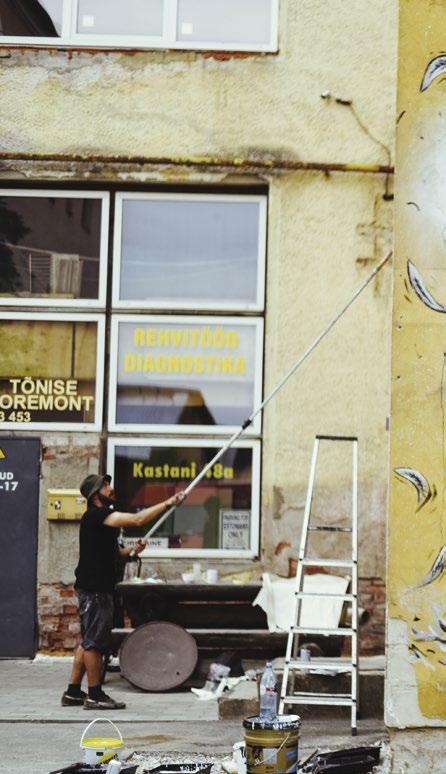 Tartu 2024 programme reveal event in October 2023, a slack-lining astronaut reaches for a disco ball
Photo by Andrus Liivamäe
Tartu 2024 programme reveal event in October 2023, a slack-lining astronaut reaches for a disco ball
Photo by Andrus Liivamäe
70 LIFE IN ESTONIA N o 62
Photo by Madli Viigimaa
The Capital of Culture programme is not restricted to Tartu but expands across 19 municipalities of south Estonia. Thirty minutes south of Tartu is Maajaam – Earth Station in English – where nature and technology intersect. Timo Toots is known for his installations where he critically engages with the digital world. Several years ago, he settled on a farm at the end of a gravel road in the middle of nowhere. He invites like-minded artists to create their works here or to be inspired. Here, amidst pine trees and ponds, one of the major exhibitions of the Capital of Culture, “Wild Bits”, is open throughout the summer. Co-curator Mari-Liis Rebane explains: “With Wild Bits, we aim to examine the points of contact between people, technology, nature, and art through the prism of art. The exhibition consists of various installations in the
open air, some involving sound, while others are more architectural objects.” International artists have contributed to it, and Timo and Mari-Liis have reviewed hundreds of applications and selected 14 ideas. The installations were then created here, on the farm and the surrounding land owned by Timo’s parents. “It’s about 20 hectares, and people can walk along paths to the individual exhibits. There are small hiking tours to the installations. It all starts right on the road, and you have a map that leads you to the artworks.” For instance, a conveyor belt in the middle of nowhere that transports leaves and pine needles falling from the trees, and at the end of the belt, they pile up in a large heap. A door standing all alone in the forest that opens and closes whenever the trees, to which it’s attached with a string, move and creak.
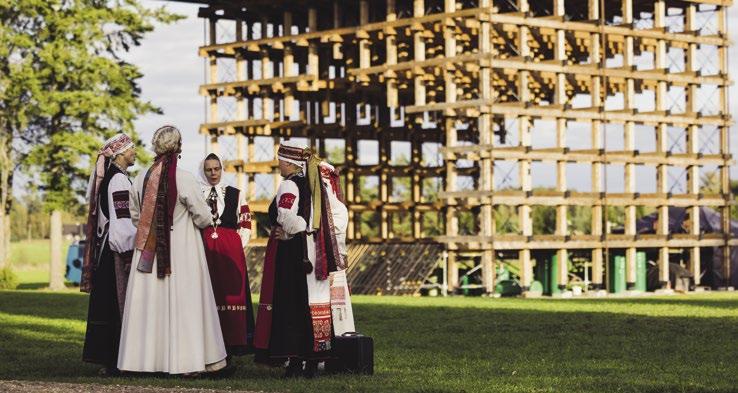
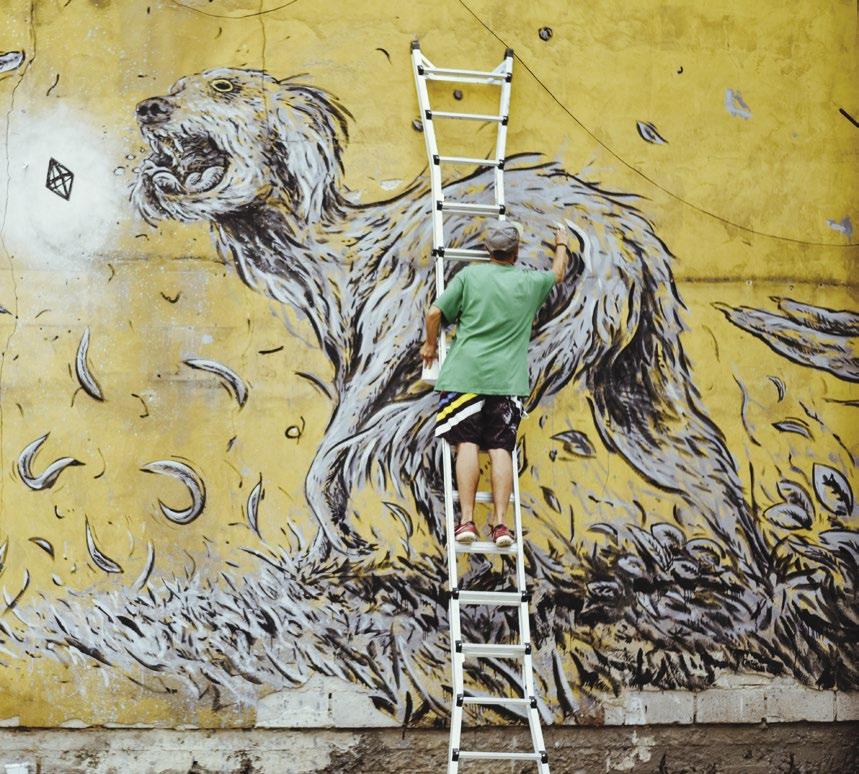
16th – 22nd of June
Tartu 2024 Song and Dance Festival
The celebration brings together over 2400 talented folk dancers and 9000 singers to move and sing as one in the tradition of Estonia.
4th – 7th of July
Stencibility Street Art Festival
Dozens of street artists will come to Tartu to create new artworks all over the city.
7th of July
Bryan Adams concert
Canadian music icon Bryan Adams at the Tartu Song Festival Grounds.
9th of July
Hauser: Rebel with a Cello
One member of the famous group 2Cellos, Stjepan Hauser offers wonderful musical experiences with a band and an orchestra.
13th – 27th of July
Elva SummerStream Party
On the shores of Lake Arbi, Estonia’s best DJs enliven the beach promenade.
15th – 21st of July
Folk festival in nature “Aigu Om!”
The music and spoken word event in the wilderness of Võrumaa offers concerts, forest hikes, cinema, a smoke sauna, handicrafts, a traditional fishing competition, and much more.
18th of July
Jacob Collier & Take 6
Multi-instrumentalist Jacob Collier collaborates with Take 6, the most awarded a cappella group in history.
19th – 20th of July
Hemp festival “Kanepi Festival”
Discover the story of Kanepi Parish (Kanep means hemp in Estonian) and the endless uses of industrial hemp – from tea to maze!
24th of August
Night Folk Dance Festival
The ghost stories of Võrumaa come to life in a whirlwind of dance – the wise country folk confront the ogre Vanapagan (Old Devil) and his minions.
14th – 15th of September
Food festival “Pühajärve Beach Gourmet”
Local culinary and cultural experiences are spiced up by surprises from Otepää’s friends from afar.
Stencibility festival
Photo by Silver Gutmann
LIFE IN ESTONIA N o 62 71
Treski barn in Setomaa
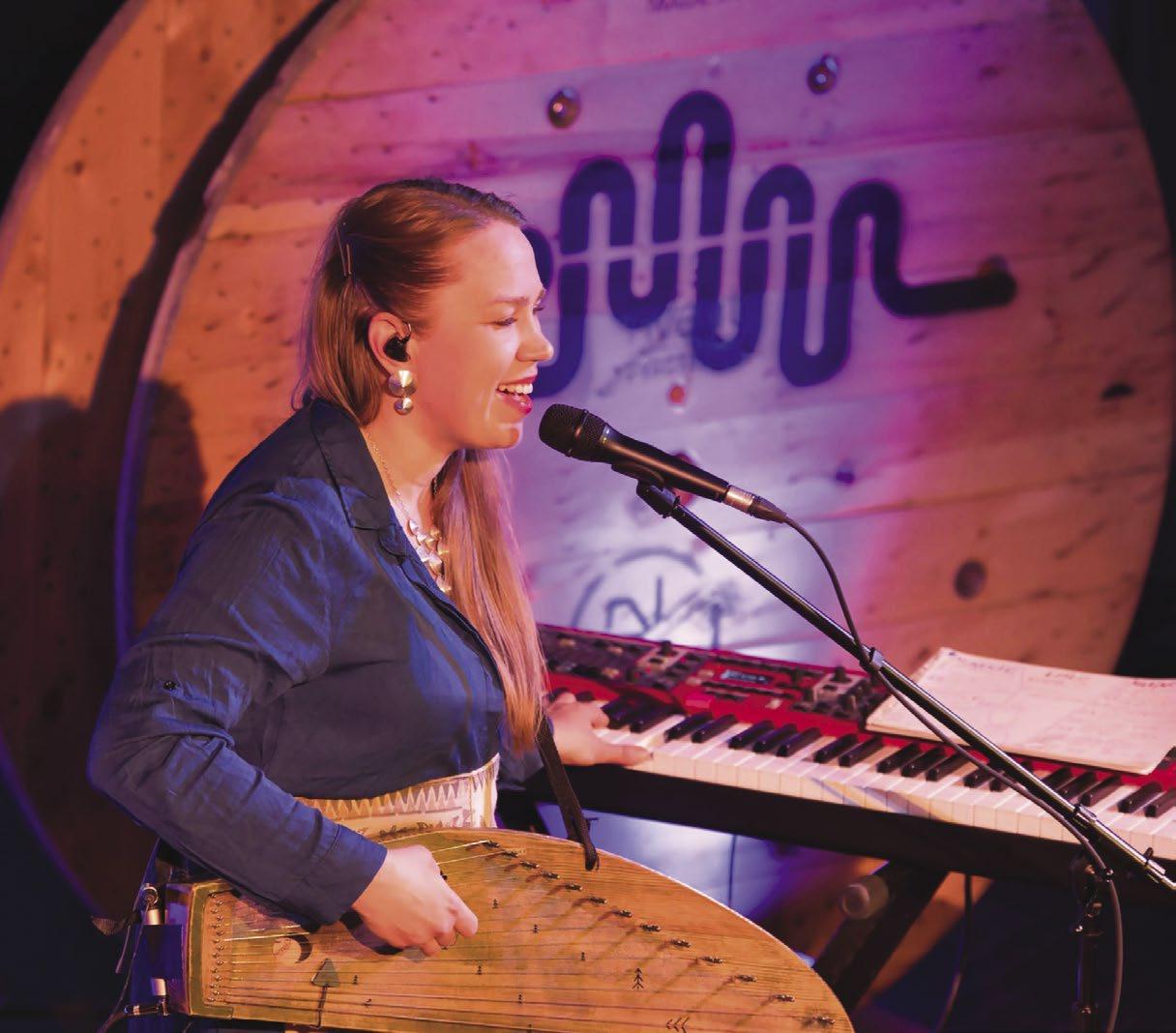
As you travel further south, the hills begin to roll, and the highest peak of the Baltics – Great Egg Hill – emerges. This is the home turf and refuge of Mari Kalkun, an internationally touring singer and songwriter who draws her strength and inspiration from the landscapes and community of her ancestors. In contrast to her intense touring career, Mari has learned to value the chance to wind down and shares this experience at her festival “Aigu om!” (There’s time – in the local Võro dialect). In Mari’s opinion, the philosophy of slowing down is becoming increasingly important in the world: “When we think about the climate crisis, when we think about everything happening in the world right now, it is impossible to cope without a community. And it is impossible to cope without basic knowledge of nature, survival.” The festival itself combines culture and nature, and it offers the joy of discovery of the many beautiful natural places in the area, as a large
number of the festival events take place right in the midst of nature, amongst the gentle hills of Haanja and the deep lakes of Rõuge.
Mari emphasises the point further: “The art of survival today is largely also about how strong our spirit is. In times of wars and crises, we need to engage even more with art and culture, because we need to nourish our spirit in order to keep it strong and healthy. And we actually have to engage with these themes and reflect on them. We shouldn’t ignore them, but rather deal with them. I think Estonians certainly know very well what the power of song means. As a singer, I strongly believe in this art, and music and singing have the ability to articulate and digest emotionally some topics that are hard to express through words. It’s the immense pain, the loss, that many people are experiencing right now in connection with the war in Ukraine.”

 Mari Kalkun
Photo by Peter Põldre
Fish from the Lake Peipsi
Mari Kalkun
Photo by Peter Põldre
Fish from the Lake Peipsi
72 LIFE IN ESTONIA N o 62
Photos by Mana Kaasik
Back to Tartu, where the Estonian National Museum ERM (reachable by bus number 25) is taking a daredevil leap into nightlife. ERM, which reminds one of a gigantic sloping runway, in keeping with its location on a former airfield of the Soviet army, houses a profound academic collection of Estonian national history from prehistoric ages to today. This September it will host the darkest underground event, Unda, put together by Tallinn’s techno club HALL. It’s not just a night in the museum, but rather a deep dive into the abundant ecosystem of club culture, with an exhibition, conference, and gigs by renowned DJs. Founder of HALL, Elena Natale, says that they want to enhance dialogue about the impact of
nightlife venues on creativity, community, and society at large.
The above are just random snippets from the abundant programme and the hundreds of talented people involved in creating it. The challenge for the visitor really is to make the right choices and survive an art overload.
Oliver Berg admits: “The ‘arts of survival’ have proven to be somewhat more prophetic than we ourselves had hoped. But it has also given us new ways to conceptualise our programme. And our goal is still to offer hope and support in this very challenging time for so many people.
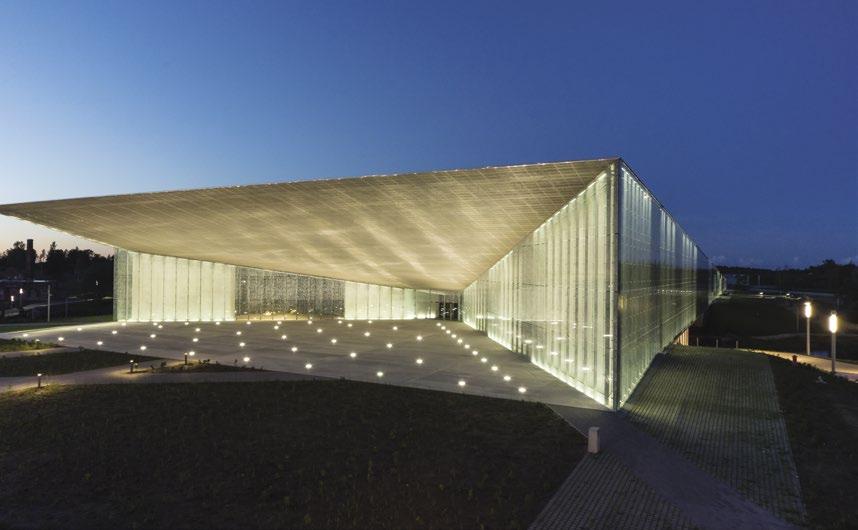


14th of September
Kavasu Ukha and Fish Festival
Get acquainted with the local fishing culture by making and tasting ukha fish soup, going fishing, or telling fisherman’s tales!
19th – 21st of September
Unda
The international festival and conference Unda introduces nightlife culture through daytime discussions and night raves. Both parties and discussions take place at ERM.
1st – 5th of October
Viljandi Heritage Festival
Explore the heritage of Estonia and Europe and use ancient knowledge to find solutions to today’s problems.
12th – 13th of October
Light festival “Alatskivi Lights”
The fascinating history of Alatskivi Castle and the region is brought to life in a light, video, and sound spectacle.
30th of November
Tartu 2024 Closing ceremony
EXHIBITIONS
4th of April – 8th of September
Surrealism 100
Centuries-old ideas and the hidden artistic pearls of Estonia and Eastern Europe still feel fresh today!
24th of April – 29th of December
Washing Machine Made of Beetroot –Ingenuity on the Road
Exhibition about clever inventions by Estonians from the Soviet era when it was necessary to get by with minimal resources.
25th of May – 15th of September
Wild Bits
At the art and technology farm Maajaam, visitors can find artworks on a stroll across vast meadows, past pony paddocks, and through the lush forest and mysterious swamp.
1st of June – 31st of August
Newborn Gallery
In this baby-friendly gallery, little visitors can learn about art created just for them!
1st of Nov 2024 – 2nd of March 2025
Ryoji Ikeda’s solo exhibition
Ryoji Ikeda, a world-famous Japanese composer and artist, creates a spectacular unique visual exhibition at ERM based on Estonian genome information.
Photo by Arp Karm
LIFE IN ESTONIA N o 62 73
Estonian National Museum ERM
The Kingdom of Seto: Proving the power of legends
By Maris Hellrand
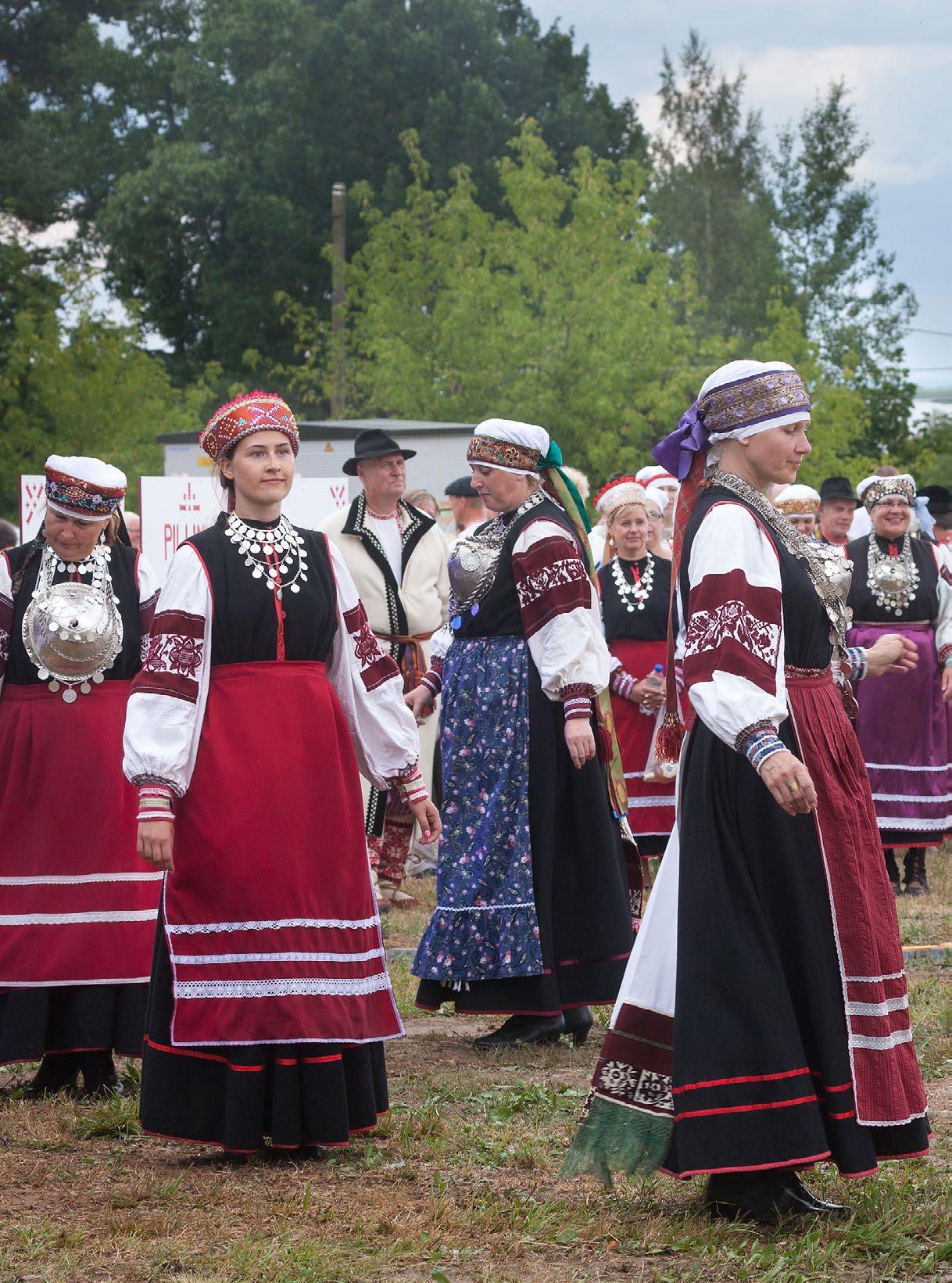
by
74 LIFE IN ESTONIA N o 62
Photo
Toomas Tuul

Sirje Kruusamäe (60) and her daughter are chopping kilos of onions and kneading dough late at night for her famous onion pie. It’s the night before Seto Kingdom Day and they are busy preparing food for their stall at the annual highlight event of this distinct tribe in the far southeast corner of Estonia. “Kingdom Day means that we are in our own kingdom for one day. We have our own laws and even our own money. It means a lot to the Setos, especially the election of ‘sootska’, or the king’s deputy on earth,” says Sirje.
Sirje lives in Saatse, very close to the Russian border. Her route to the nearest town and community centre, Värska, leads through Russia –the so-called “boot of Saatse”. The peculiar border demarcation is the reason why the border treaty of 2014 is still unratified. To pass, she has to drive through Russian territory for 5 km – without getting out of the car or stopping it. Cycling is also allowed.
Sirje is a passionate cook and runs a “home restaurant”. She has won the Kingdom Day’s pierogi competition six times. She will be cooking and baking all night with her daughter and friends. Among other things, the traditional curd cheese “sõir”. According to her, you can’t have Kingdom Day without sõir – a fresh curd cheese with added egg yolk and a distinct flavour of caraway seeds. “Without sõir, you couldn’t celebrate festivities – weddings, funerals, church holidays. Of course, there is also a sõir competition on Kingdom Day. It is judged by a group of experts who say whether it is really genuine,” she says.
For centuries, the Setos iving in South East Estonia and North West Russia had been an ethnic group in the hinterland – poor, backward, and alien to both Estonians and Russians. Setos have been Orthodox since the 10th – 13th century, unlike most Estonians who are Lutheran, and church holidays and customs are important to them. Among other things, visits to the graves with food and drink. The Orthodox centre of the Setos is Pechory Monastery (now in Russia). From 1920 –1944, Setomaa as a whole belonged to the Estonian Republic as Pechory County. In 1944, under Soviet occupation, about 75% of Setomaa was administratively assigned to Russia. This is how the border still runs today even though 90% of the Seto people live in Estonia. The Seto language is a dialect of Estonian and is on the UNESCO list of endangered languages. 3% of Estonians speak Seto. In September 2021, the first kindergarten group using and teaching the Seto language was opened in Värska.
 Photo by Harri A Sundell
The election of Peko’s representative “sootska” for the next 12 months is quick and easy – the candidates step onto wooden blocks on the stage and voters stand in line behind the candidate they favour.
Photo by Kersti Virro
Photo by Harri A Sundell
The election of Peko’s representative “sootska” for the next 12 months is quick and easy – the candidates step onto wooden blocks on the stage and voters stand in line behind the candidate they favour.
Photo by Kersti Virro
LIFE IN ESTONIA N o 62 75
Seto “sõir”
The traditional Seto singing style “leelo” is 1000 years old and has been included on UNESCO’s Intangible Cultural Heritage List since 2009. There are thousands of hours of recordings from the 20th century. The unique polyphonic runo song has also inspired many young musicians to create modern remakes in rock, pop, heavy metal, and punk. In that regard, The Zetod and The Trad.Attack! have been especially popular. It’s probably worth mentioning that the great-grandmother of Jalmar Vabarna (a guitarist in both bands) was the famous Seto singer Anne Vabarna and the band mixes her recordings into their new versions.

A Kingdom for just one day
In 1994, a group of Setos came up with the idea of Kingdom Day, which takes place in a different village every year at the beginning of August.
Rein Järvelill was one of the original authors of the idea and has been himself elected as the sootska in 2019-2021. He says, “Setos are such a small people that we have to make ourselves bigger. Setos have an epic hero – Peko. 30 years ago, we thought about how to bring the people together and came up with the idea of creating a kingdom. Then we called the people together to remember our language, culture, and history. Peko is our king and on Kingdom Day we elect his representative sootska.” The Seto epic talks about Peko’s heroic deeds and his fight against his enemies. According to the epic he is buried in the caves of Pechory Monastery. Setos have never had their own state, so there has never been a historic kingdom.
More than a thousand people, most in colourful, traditional attire, gather for Kingdom Day which includes competitions in song, dance, food preparation, drink preparation, a crafts fair, and even a military parade. Seto women wear traditional clothes with unusual silver jewellery that looks like a large breast, decorated with extra chains of silver coins –presenting the wealth of the family and the fertility of the wearer.
Sirje worked until 4 am and got up again at 6 am to prepare for the big day. Now customers are queuing at her stall for the flavourful onion pie

and other local delicacies. She says: “The effort was worth it because sales are going well and on the other hand, because I can be among my people. When we honour the culture, food and customs of our ancestors, life is easier and better.”
Women, men, girls, and boys all compete as dancers and musicians. Seto leelo, the traditional style of singing, is alive and kicking with new generations who are joining the choirs as they discover their roots. The lyrics of the new songs are often made up by the lead singer as the song is being performed and reflects wittily upon the contemporary world.
King Peko’s representative on earth
The highlight of the day is the election of Peko’s representative for the next 12 months. It takes at least 10 people to nominate a candidate. Two ladies in colourful attire step onto wooden blocks on the stage and voters stand in line behind the candidate they favour. Everything happens in 15 minutes, completely transparently, quickly, and in full view of the public. No secret ballot here! Hundreds of supporters of each candidate queue and get a stamp on their hand once counted. Both men and women can be elected as sootska and a person can become the sootska many times in life. The honorary role comes with quite a demanding representative schedule and the sootska is expected to be very knowledgeable of and dedicated to the Seto culture.
Band The Zetod, in the middle Jalmar Vabarna whose great-grandmother Anne Vabarna was a famous Seto singer
76 LIFE IN ESTONIA N o 62
Photo by Maris Savik
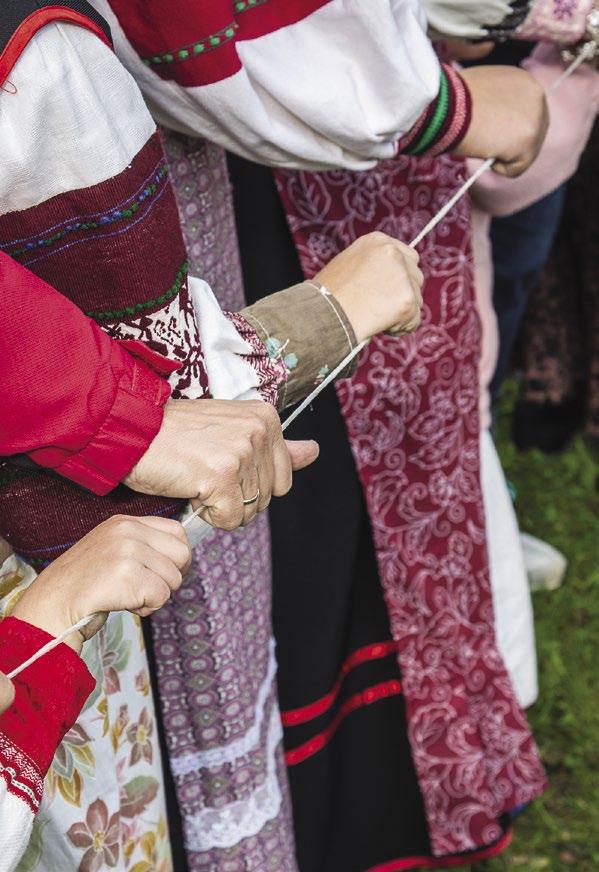 Photo by Harri A Sundell
Photo by Harri A Sundell
Seto traditional events in 2024
28th – 29th of June – Seto Folk 29th of June – Seto Dance Fest 26th of July Saatse – Päätnitsapäev (orthodox holiday visiting graves and parties) 8th of August – Treski Music and Inspiration Festival 10th – 11th of August – Seto Pop-up Cafe Days 24th of August – Lüübnitsa fish and onion fair
Jane Vabarna has been elected as sootska twice, the last time in 2021. She comes from a family of great Seto singers. Jane’s great-grandmother Anne is the most famous of them. Her legacy includes thousands of hours of audio recordings among which is also the epic story of Peko.
Jane recalls her sootska years as colourful and exciting: “I had hundreds of meetings and speeches to give. And in many cases, I felt that Peko actually sent me his thoughts and ideas in dreams. Like other sootskas before and after myself we all have felt a special connection to Peko.” The sootska gets a juniper stick – kiiora –handed over by the previous one that is decorated with colourful ribbons that symbolise the collective experience of all sootskas and helps to guide the current one.
Kingdom Day has proven to be an idea with a powerful impact. Today, the Seto culture is flourishing. Many people elsewhere in Estonia are looking for their Seto roots and discovering the culture, and the peculiar customs are a tourist magnet. Above all, however, the revitalisation of the legend has given Setos new self-confidence and self-esteem. It has given rise to many cultural events combined with competitions. “Seto” was a derogatory word 30 years ago, today it is a reason to be proud.
The next Seto Kingdom Day will be held in Obinitsa on the 3rd of August 2024.
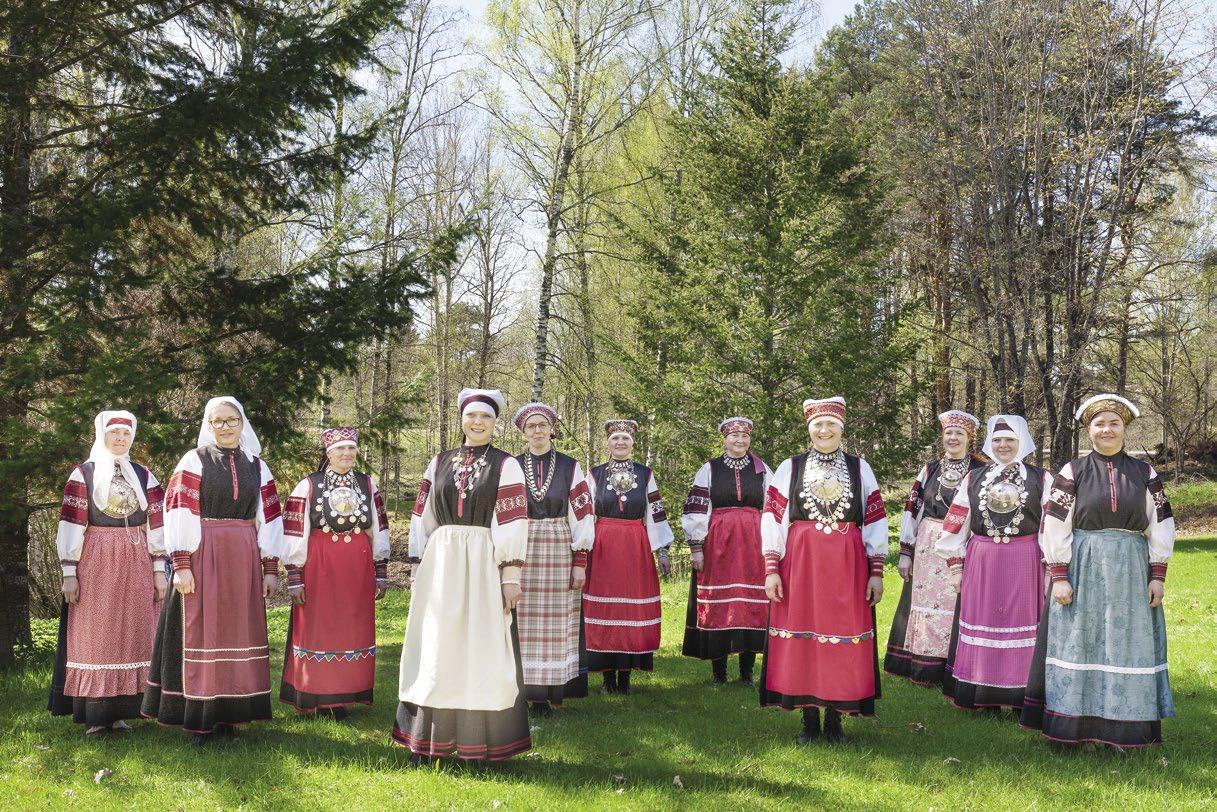
In front, Jane Vabarna who has been elected “sootska” twice
Photo by
Toomas
Tuul
LIFE IN ESTONIA N o 62 77
Events calendar: Highlights from June to December Life in Estonia recommends
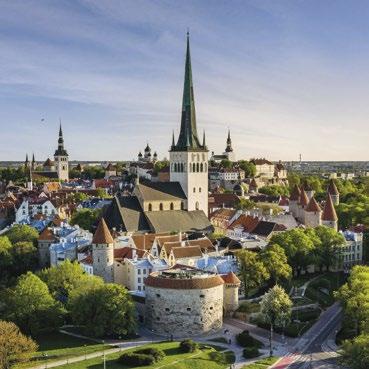
Tallinn Old Town Days 7th – 9th of June @ Tallinn
Tallinn Old Town Days is the biggest festival in the Old Town dedicated to local cultural heritage and community. This year, it will take place for the 42nd time, focusing on the Old Town as a creative conservation area. Various music, theatre, art, and sports events are held during the three days.
vanalinnapaevad.ee
TallinnOldTownDays vanalinnapaevad
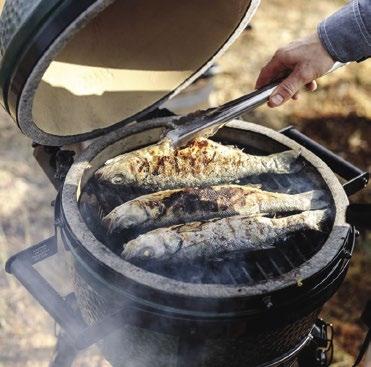
Good Food Festival Grillfest 7th – 8th of June @ Pärnu Vallikäär
For two days, 300 caterers from Estonia and abroad serve up their best fare. There are outdoor restaurants, cafes, and even a pet restaurant on the beautiful meadow. You will be able to enjoy the Good Food Fair, the national fishing championships, and cooking competitions; a large and exciting play area is available for children.
grillfest.ee Grillfest grillfestestonia @grillfest_estonia

FIA ERC Delfi Rally Estonia 5th – 7th of July @ Southern Estonia
Once again, the world’s top rally drivers will compete on the windy, technical roads of southern Estonia. The start and finish podium, along with a diverse entertainment programme, will be in Tartu Town Hall Square, and after a four-year break, the competition centre and service area will once again be hosted by the Tehvandi Sports Centre in Otepää.
rallyestonia.com rallyestonia rallyestonia
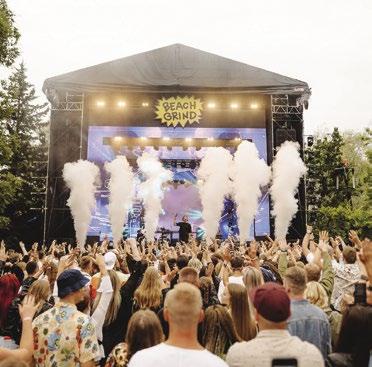
Beach Grind
12th – 13th of July @ Pärnu Beach Park, Villa Amende
The eagerly anticipated electronic music festival Beach Grind returns to Pärnu! Guests have the opportunity to experience performances across three stages. The festival will feature headliners such as Marshmello (USA), Oliver Tree (USA), Chase & Status (UK), and many other prominent artists from both local and international scenes.
beachgrind.ee iLoveGrind welovegrind @welovegrind
Photo by Kaupo Kalda
Photo by Renee Altrov
Photo by Karli Saul
78 LIFE IN ESTONIA N o 62
Photo by Rauno Liivand
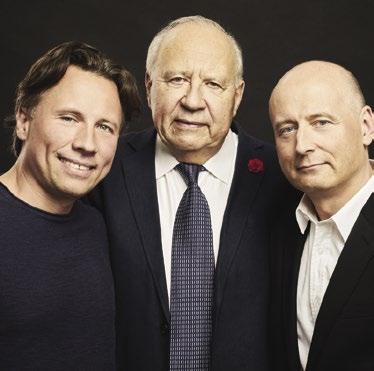
Pärnu Music Festival –Järvi Academy 10th – 19th of July @ Pärnu
The 2024 edition of Pärnu Music Festival will witness Neeme Järvi conducting the opening concert, Paavo Järvi leading the Estonian Festival Orchestra in four concerts, and Kristjan Järvi returning with the Baltic Sea Philharmonic.
parnumusicfestival.ee
Pärnu Music Festival @parnumusicfestival
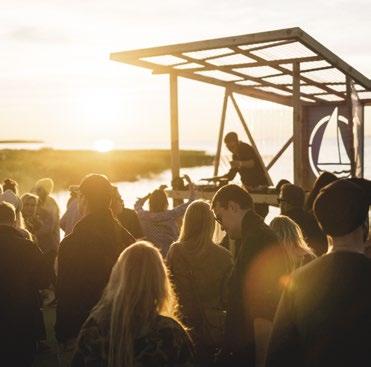
I Land Sound 18th – 21st of July @ Orissaare, Illiku islet
The purpose of this exciting festival is to enjoy everything that beautiful nature, great music and art, friends, and the Estonian summer have to offer. Islanders are known for sticking together and I Land Sound is no exception –electronic nightlife pioneers, artists, and the locals join forces for an enriching event.
ilandsound.ee ilandsoundfestival
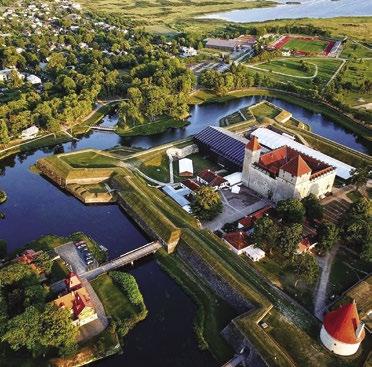
Saaremaa Opera Festival 23rd – 28th of July @ Kuressaare
For Saaremaa Opera Festival, an opera house is erected in the historical courtyard of Kuressaare Castle, seating up to 2000 people. In 2024, the featured guest will be Catalonian Opera (Òpera Catalunya) and they will perform “Il trovatore” by Verdi, and “Tosca” and “Manon Lescaut” by Puccini.
saaremaaopera.com saaremaaopera saaremaaopera
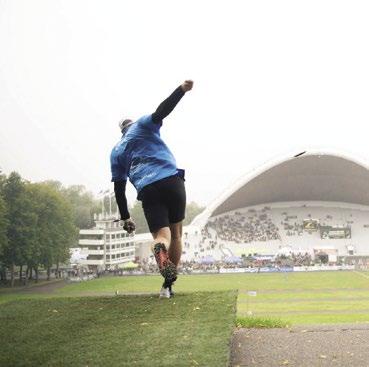
European Disc Golf Festival 26th – 28th of July @ Tallinn Song Festival Grounds
The festival offers a unique opportunity to play high-quality disc golf directly in the heart of Tallinn. You can watch an engaging game, explore delicious food and drink, and find sports and disc golf equipment that meet your needs.
discfestival.com
Photo by Renee Altrov
Photo by Kaupo Kikkas
Photo by Disc Golf Fesitival
LIFE IN ESTONIA N o 62 79
Photo by Saaremaa Opera Festival
Events calendar

Viljandi Folk 25th – 28th of July @ Viljandi
This festival takes place every July in the castle park and centre of Viljandi. It is the strongest expression of a special mindset that originated in the early 1990s. This mindset values tradition, heritage, and a local identity; it adapts spiritual values garnered over thousands of years to the modern way of life – it keeps the traditions alive and strengthens our national characteristics. It is one of the largest festivals of its kind in the Baltic and Nordic region.
viljandifolk.ee Viljandi.parimusmuusika.festival viljandifolk
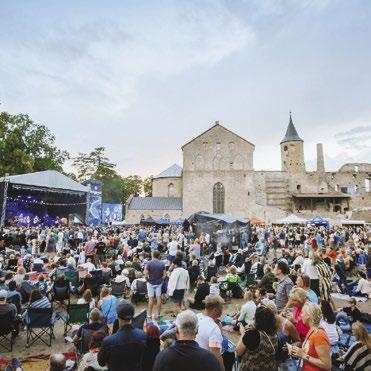
Augustibluus 1st – 4th of August @ Haapsalu
The main stage is nestled in the beautiful surroundings of the ancient Episcopal Castle, featuring big names from the United States –the cradle of blues – as well as European acts and exciting projects from local performers. The daily programme offers workshops, exhibitions, and traditional acoustic concerts in the old railway station. Music can also be enjoyed in the streets and open-air cafes.
augustibluus.ee Augustibluus augustibluus

Fringe Festival 18th of Aug. – 18th of Sept. @ Tallinn
Fringe is an annual multi-genre and multivenue short-performance festival in Tallinn. It is not curated by the festival team or a specially designated board of culture officials. This ensures a diverse, vibrant, and colourful programme for everyone, artists and audiences alike.
fringe.ee tallinnfringe tallinnfringe

Ironman Tallinn 25th - 26th of August @ Tallinn
Ironman is part of the summer triathlon festival in the capital Tallinn. The main competitions take place on two consecutive days. Over the years, the Ironman Tallinn has attracted almost a thousand participants from different countries around the world to compete in Estonia. The competition runs through the unforgettable Old Town and the wonderful countryside around Tallinn.
Ironman.com Ironman Estonia ironman_estonia
Bluesfest
Tallinn
Photo by Kristian Kirsip
Photo by Tallinn Fringe Fesitival
Photo by Silver Raidla
Photo by Maido Parv
80 LIFE IN ESTONIA N o 62

Simple Session Tartu 21st – 25th of August @ Comb Factory
The world’s best BMX riders and skateboarders show off their skills at Simple Session, Europe’s largest extreme sports competition. The main event at Tartu Comb Factory’s event centre is on the 24th and 25th of August. Events all over Tartu on prior days.
simple.session.ee simplesession simplesession @simplesession
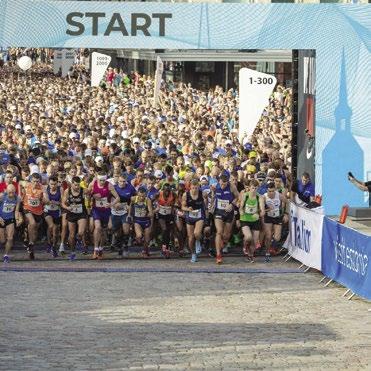
Tallinn Marathon 6th – 8th of September @ Tallinn
Tallinn Marathon is the biggest international running event in Estonia. The various distances, which attract thousands of running enthusiasts and exercise lovers, include the classic marathon (42.2 km), the half marathon (21.1 km), the RIMI 10 km, and the Nike Youth Run (5 km). One can also choose to do a virtual run on the route of one’s choice any time between the 1st and 30th of September.
tallinnmarathon.ee
Tallinn Marathon tallinnmarathon
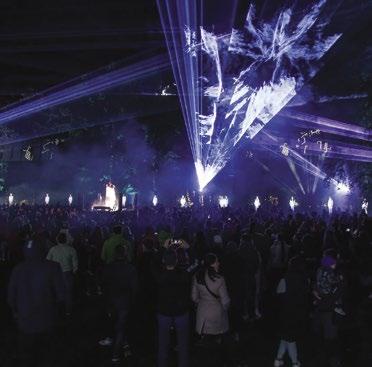
ÖÖvalgel Lightfestival 26th – 28th of September @ Pärnu
ÖÖvalgel (In the light of the NIGHT) is the largest cultural event in Pärnu, where light projection shows are performed in various locations in the city of Pärnu for three evenings in a row. The main character of each performance is a living person.
oovalgel.ee oovalgel oovalgel

Tallinn Design Festival 16st - 22nd of September @ Tallinn
The week-long Design Festival highlights the achievements of Estonian and international designers and stimulates discussion about the importance of design in modern society. In addition to traditional exhibitions and fashion shows, the festival includes educational seminars, lectures, children’s programmes and workshops.
tallinndesignfestival.com
Tallinn.Design.Festival tallinn_design_festival
Photo by Simple Session
Photo by ÖÖvalgel
Photo by Kristo Parksepp
LIFE IN ESTONIA N o 62 81
Photo by Kaie Kiil
Events calendar

Tallinn International Horse Show 4th – 6th of October @ Unibet Arena
The grand event of Estonian equestrian sport offers a combination of equestrianism, live music, and great experiences from the world of horses. The horse festival attracts hundreds of elite athletes and horses from different countries around the world.
tallinnhorseshow.ee
tallinnhorseshow
tallinnhorseshow
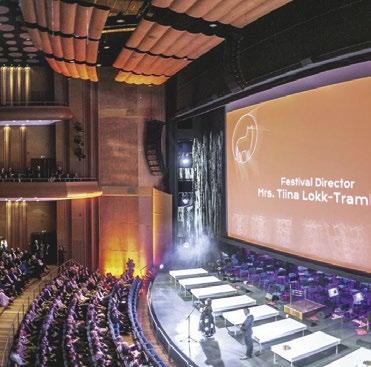
Nights Film Festival PÖFF 8th – 24th of November @ Tallinn
PÖFF is an annual A-category film festival that has been held in Tallinn since 1997. In November each year, it brings the newest and most fascinating examples of the world’s cinematography, together with international filmmakers, to the doorstep of local viewers. With over 500 feature films, short films, and animations, and with around 1400 film professionals and journalists in attendance, plus more than 90 000 viewers, PÖFF is one of the biggest film festivals in Northern Europe and the largest annual cultural event in Estonia.
poff.ee
tallinnblacknightsff
tallinnblacknightsff
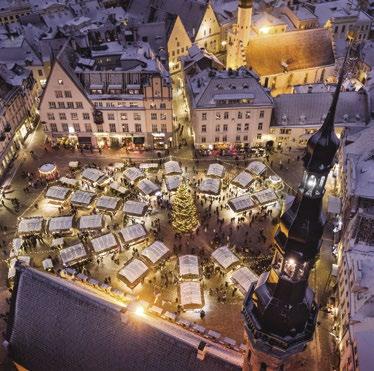

Architecture Biennale 1st of Oct. – 30th of Nov. @ Tallinn
Tallinn Architecture Biennale (TAB) is the largest international architecture festival in the region. The programme includes a symposium, a curator exhibition and a vision competition. In addition, the festival also features a diverse satellite programme, encompassing exhibitions, lectures, installations, an architecture film programme and various other events throughout Tallinn.
2024.tab.ee
TallinnArchitectureBiennale
tallinnarchitecturebiennale
Tallinn Christmas Market December – January @ Tallinn
Tallinn Christmas Market, with its fairy tale touch, is held annually in Tallinn Town Hall Square. The star of the market is the Christmas tree, which was first erected in Town Hall Square in 1441 by the Brotherhood of Blackheads, making it the first Christmas tree ever put on display in Europe. Local merchants sell handcrafts, mulled wine, and souvenirs to about 200 000 visitors every year.
christmasmarket.ee jouluturg
Black
Photo by Sergei Zjuganov
Photo by Ahto Sooaru
Photo by Tallinn Int. Horse Show
Tallinn
82 LIFE IN ESTONIA N o 62
Photo by Tõnu Tunnel
VILJANDI TALLINN Tartu parish Tartu city Nõo parish Elva parish Kambja parish Peipsiääre parish Kastre parish Otepää parish Kanepi parish Põlva parish Räpina parish Võru parish Võru city Antsla parish Valga parishy Setomaa parish Luunja parish Rõuge parish Tartu 2024 lasts for a whole year! Find your next cultural adventure tartu2024.ee/programme Tartu and
awaits!
events 260 000 inhabitants 1 000 000+ visits 20 municipalities PARTNERS SUPPORTERS MAIN SUPPORTERS
Southern Estonia
1000+
Are you ambitious enough?
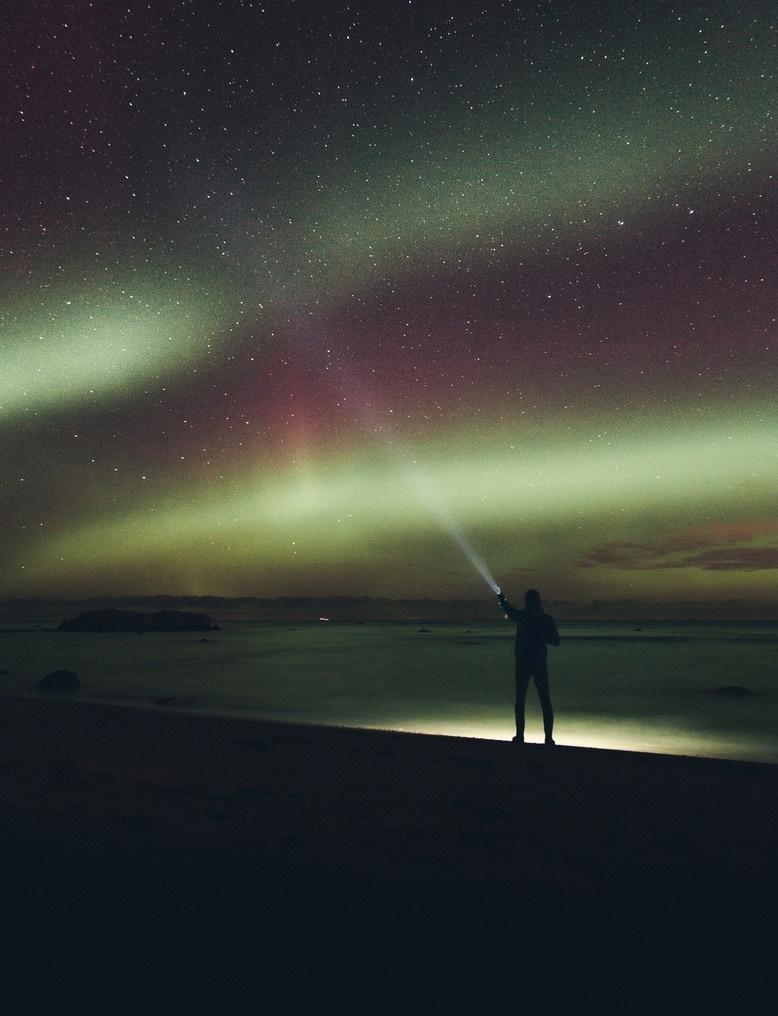
Estonia has proven to turn the wildest ideas into oppor tunities, star t a company, or boost your career — here is the per fect place to nur ture your ambition.
onboard.estonia.ee

















 Invest Estonia team
Photo by Invest Estonia
The official opening of the Estonian Investment Agency, with J. Sakkeus, P. Kolbre, and H. Tammjärv
Invest Estonia team
Photo by Invest Estonia
The official opening of the Estonian Investment Agency, with J. Sakkeus, P. Kolbre, and H. Tammjärv








 Photos by Skeleton Technologies
Photos by Skeleton Technologies

 Photos by Skeleton Technologies
Photos by Skeleton Technologies






 Photos by Enefit Green
Photos by Enefit Green

 Photo by Zero Terrain
Priit Lepasepp
Photo by Zero Terrain
Priit Lepasepp
 Photo by Sunly
Photo by Sunly
















 Photos by Ain Laidoja
Photos by Ain Laidoja














 Madis Raukas, head of the Applied Research Programme at Enterprise Estonia
Madis Raukas, head of the Applied Research Programme at Enterprise Estonia














 Family, 2022
Family, 2022
 Solstice, 2022
Solstice, 2022




 Belarus-blue, 2017
Belarus-blue, 2017









 Photo by Marek Metsalaid
In 2014, British journalist Edward Lucas became the first Estonian e-resident
Photo by Marek Metsalaid
In 2014, British journalist Edward Lucas became the first Estonian e-resident




 by Maris Hellrand
by Maris Hellrand




 Tartu 2024 programme reveal event in October 2023, a slack-lining astronaut reaches for a disco ball
Photo by Andrus Liivamäe
Tartu 2024 programme reveal event in October 2023, a slack-lining astronaut reaches for a disco ball
Photo by Andrus Liivamäe




 Mari Kalkun
Photo by Peter Põldre
Fish from the Lake Peipsi
Mari Kalkun
Photo by Peter Põldre
Fish from the Lake Peipsi





 Photo by Harri A Sundell
The election of Peko’s representative “sootska” for the next 12 months is quick and easy – the candidates step onto wooden blocks on the stage and voters stand in line behind the candidate they favour.
Photo by Kersti Virro
Photo by Harri A Sundell
The election of Peko’s representative “sootska” for the next 12 months is quick and easy – the candidates step onto wooden blocks on the stage and voters stand in line behind the candidate they favour.
Photo by Kersti Virro


 Photo by Harri A Sundell
Photo by Harri A Sundell





















